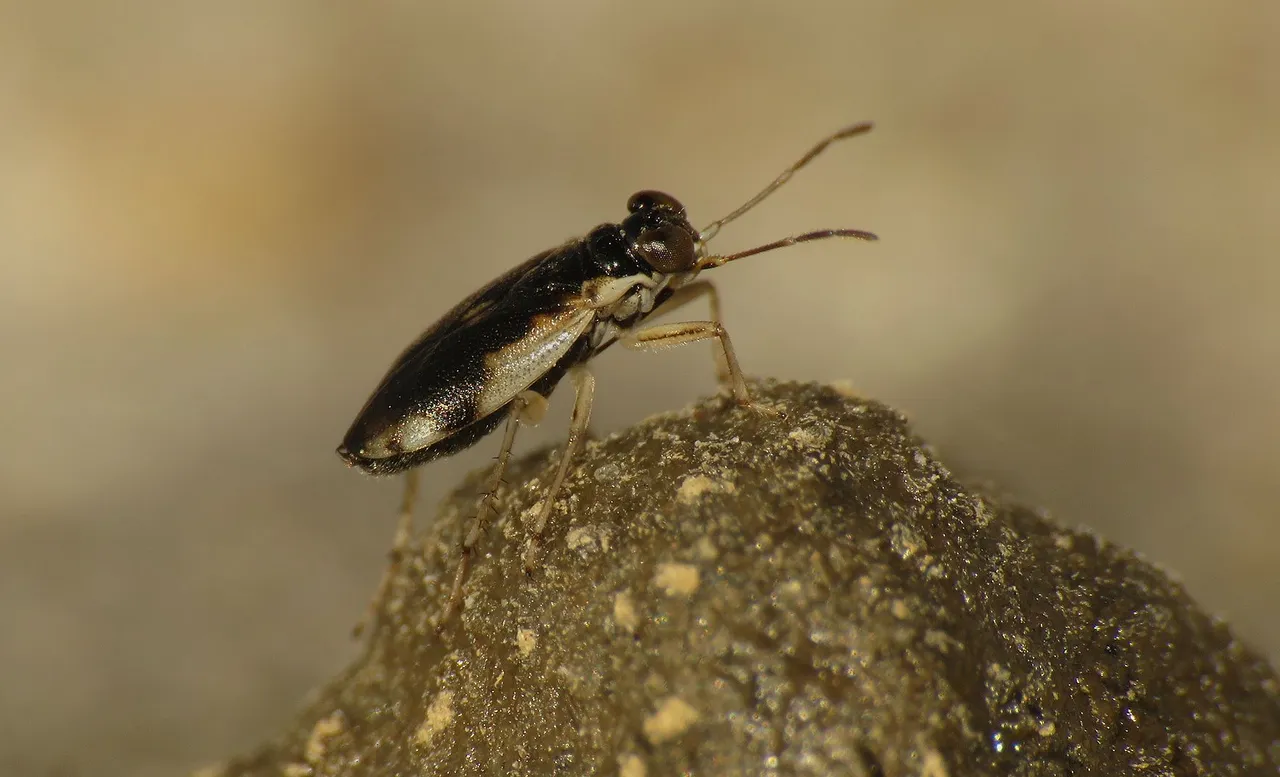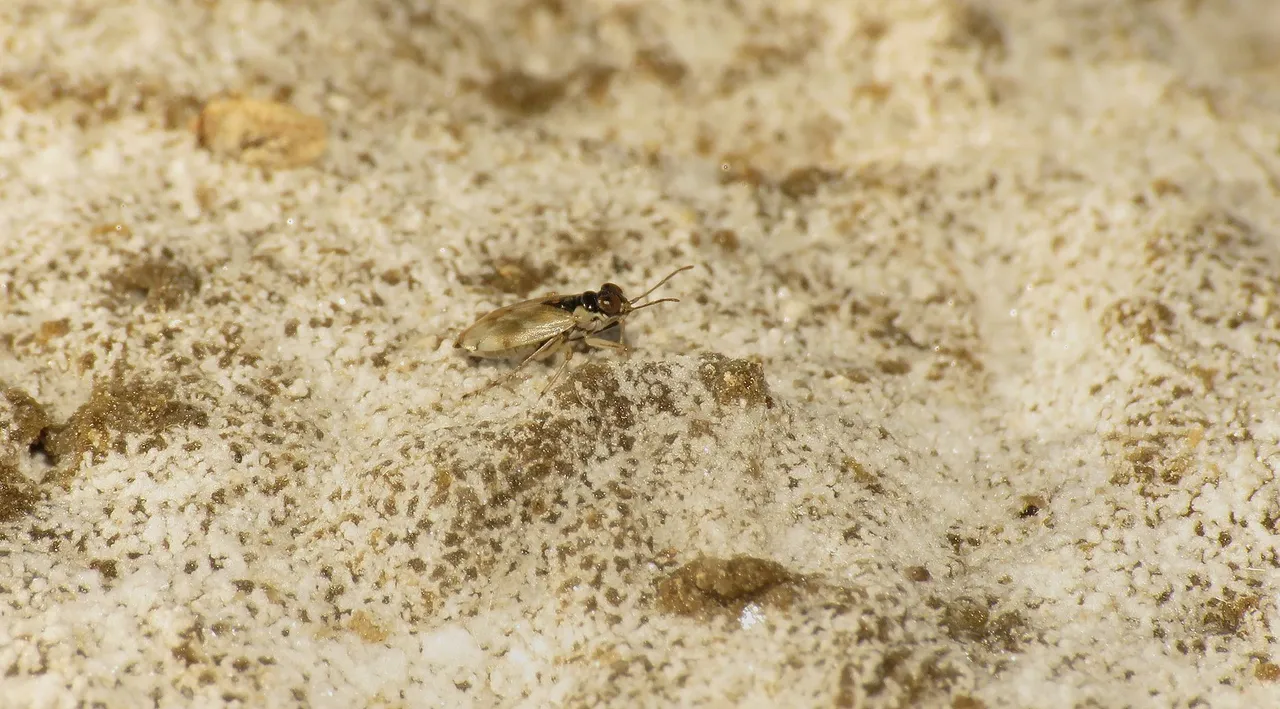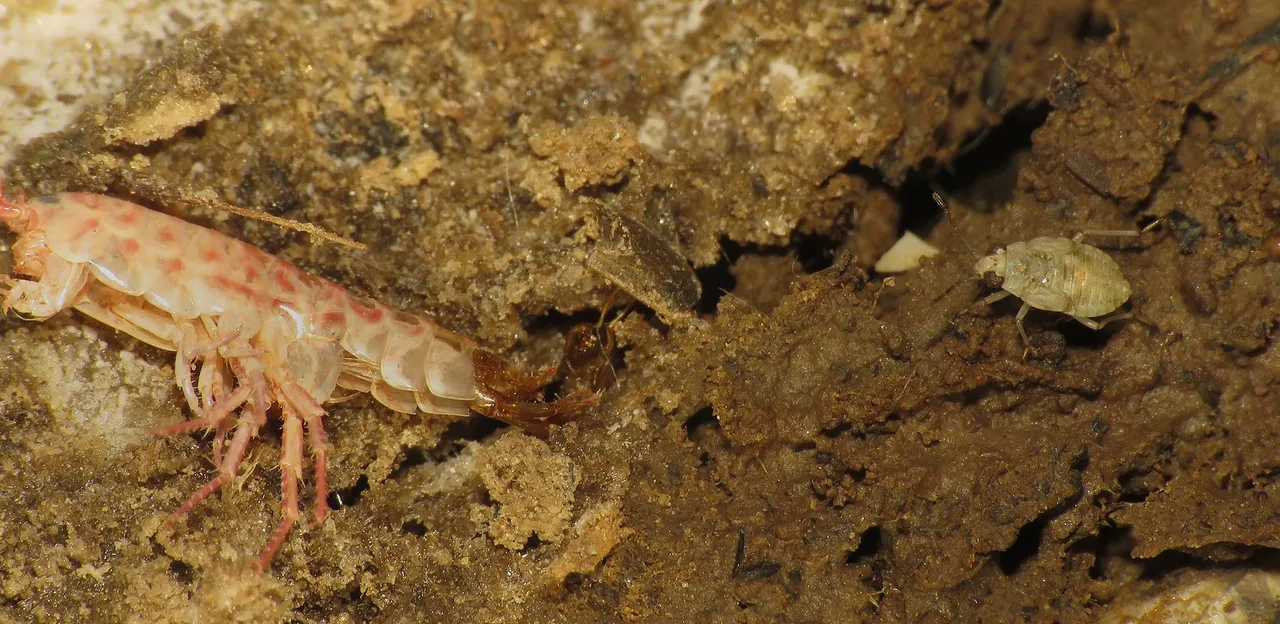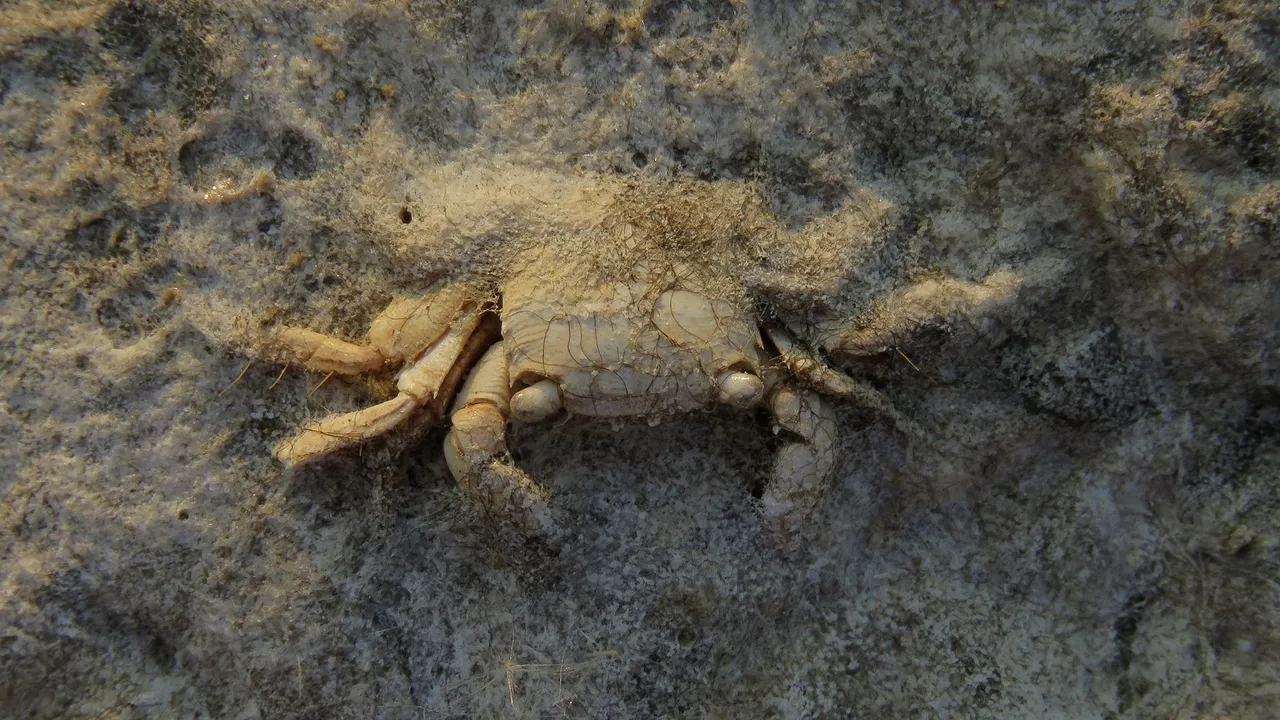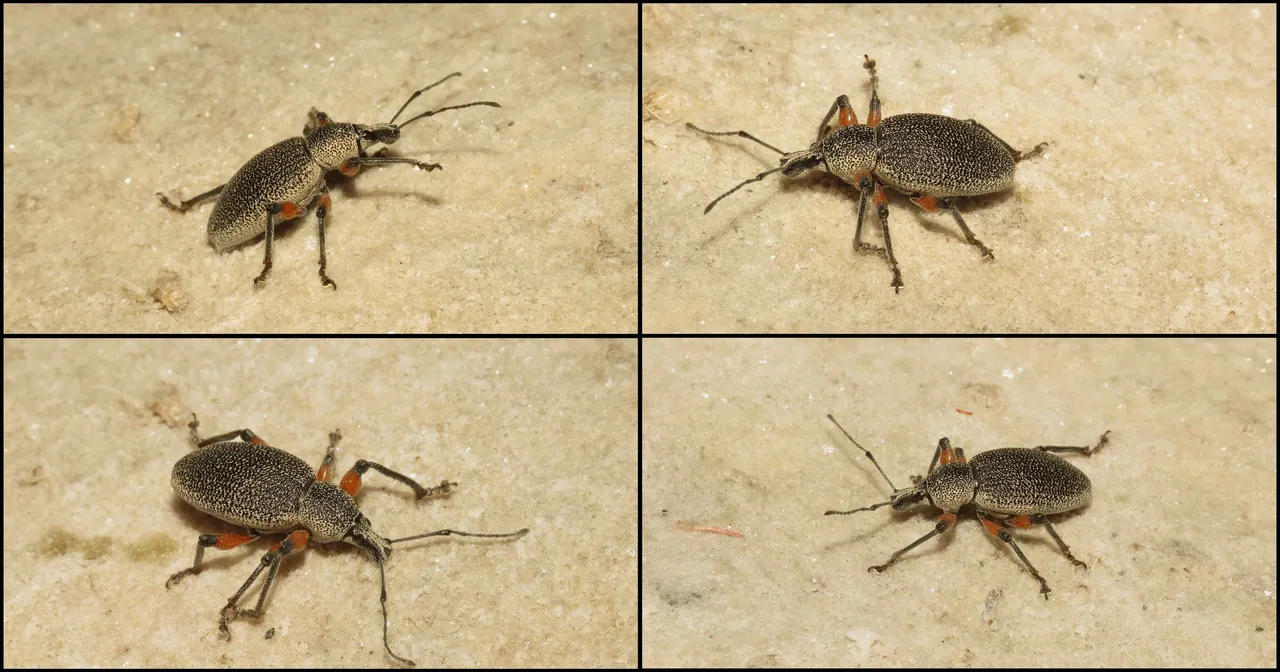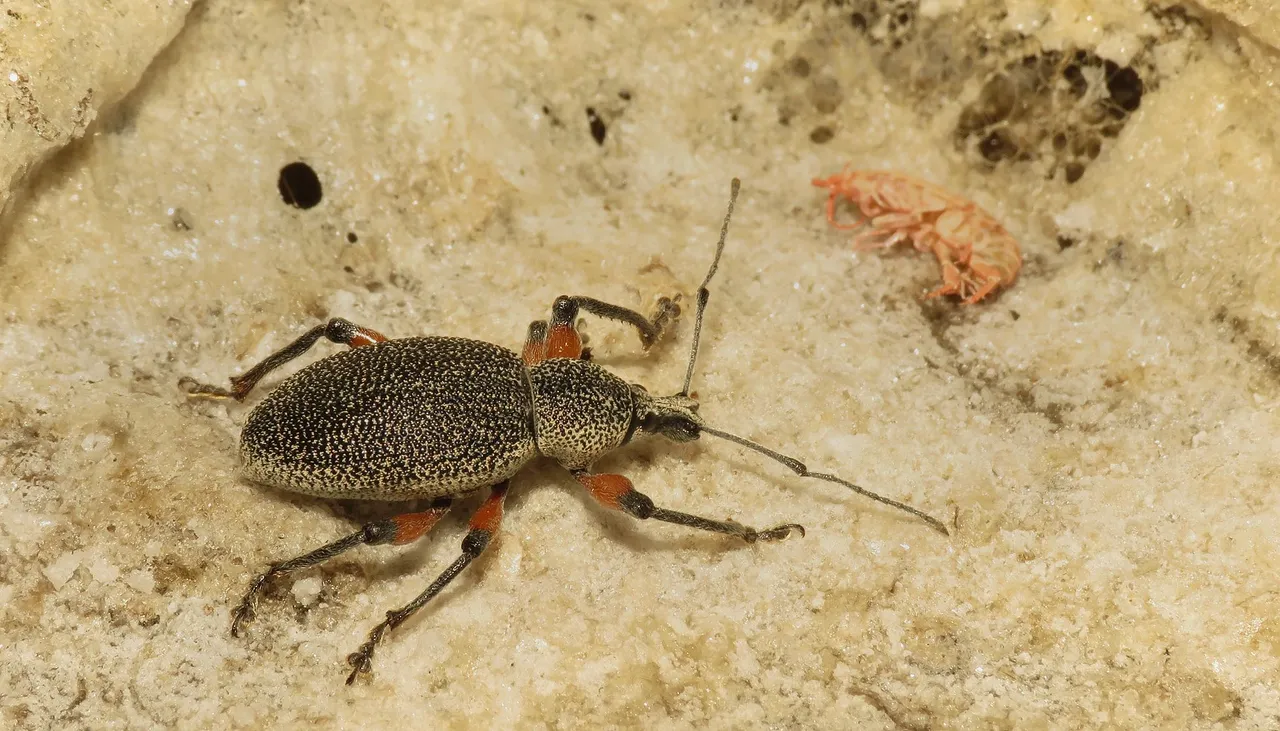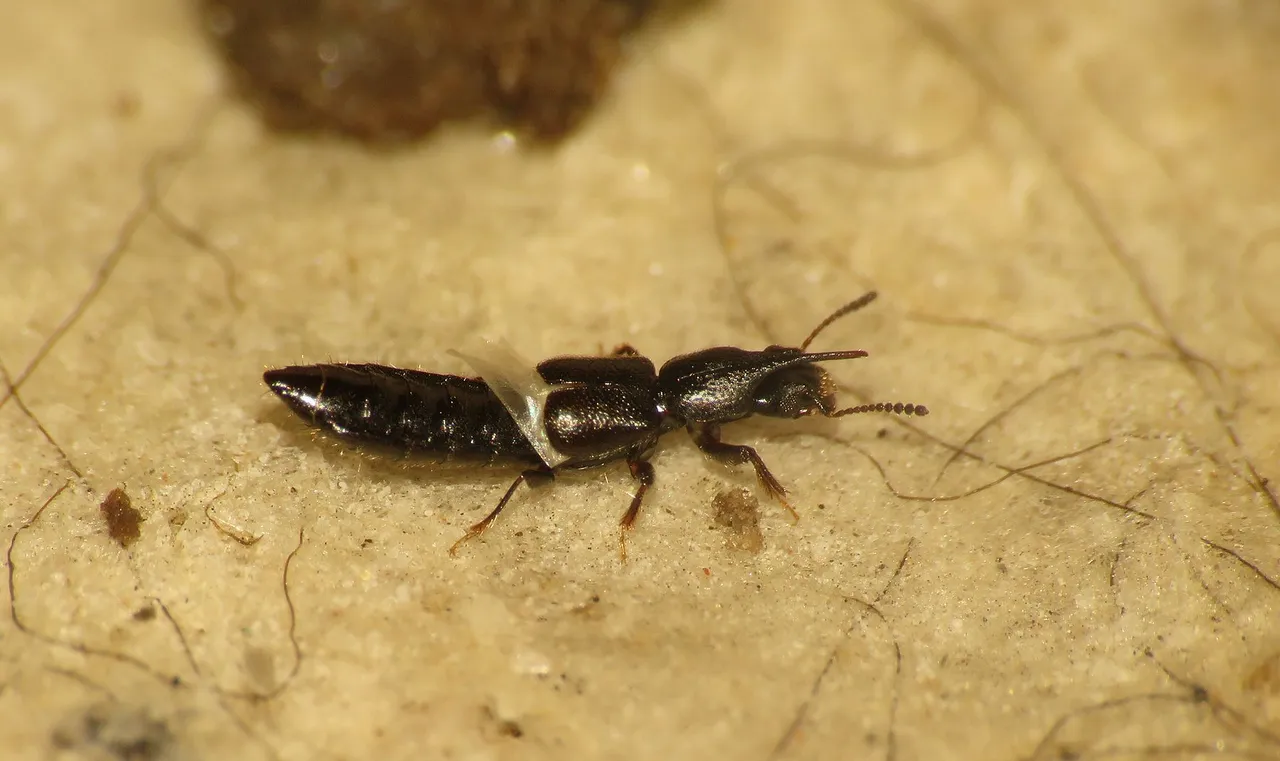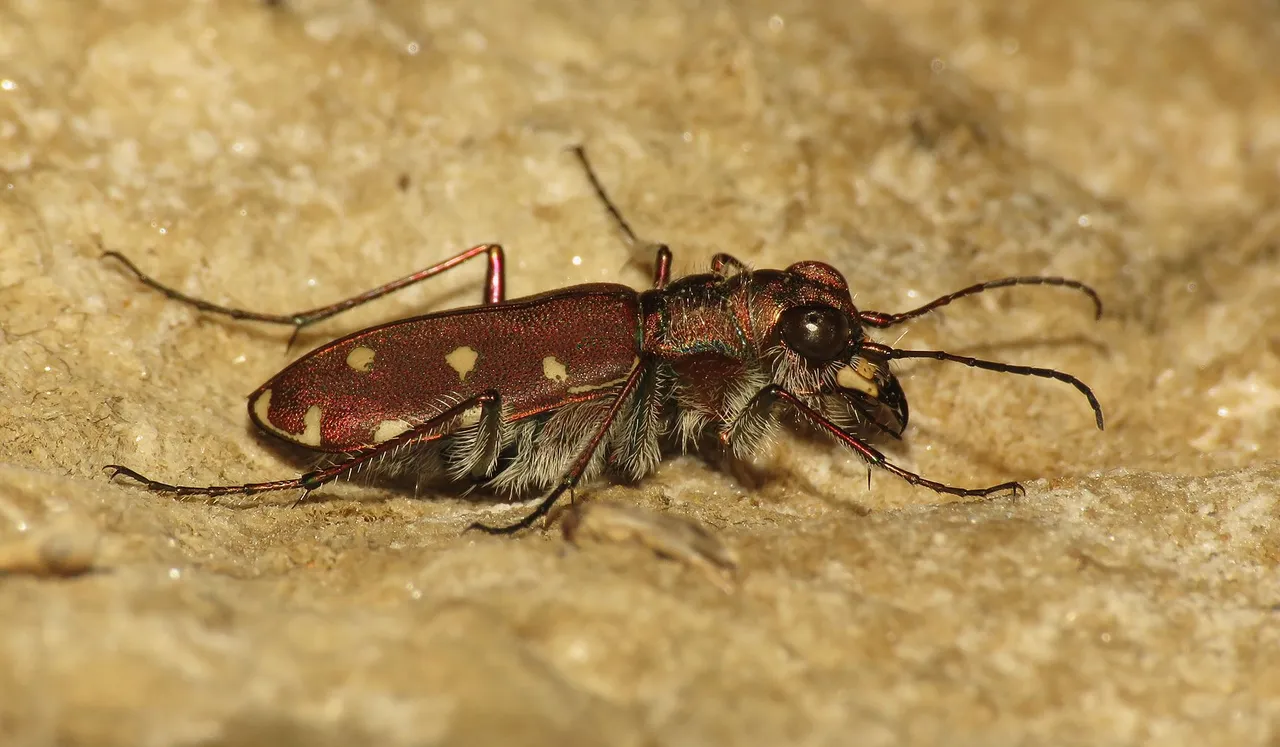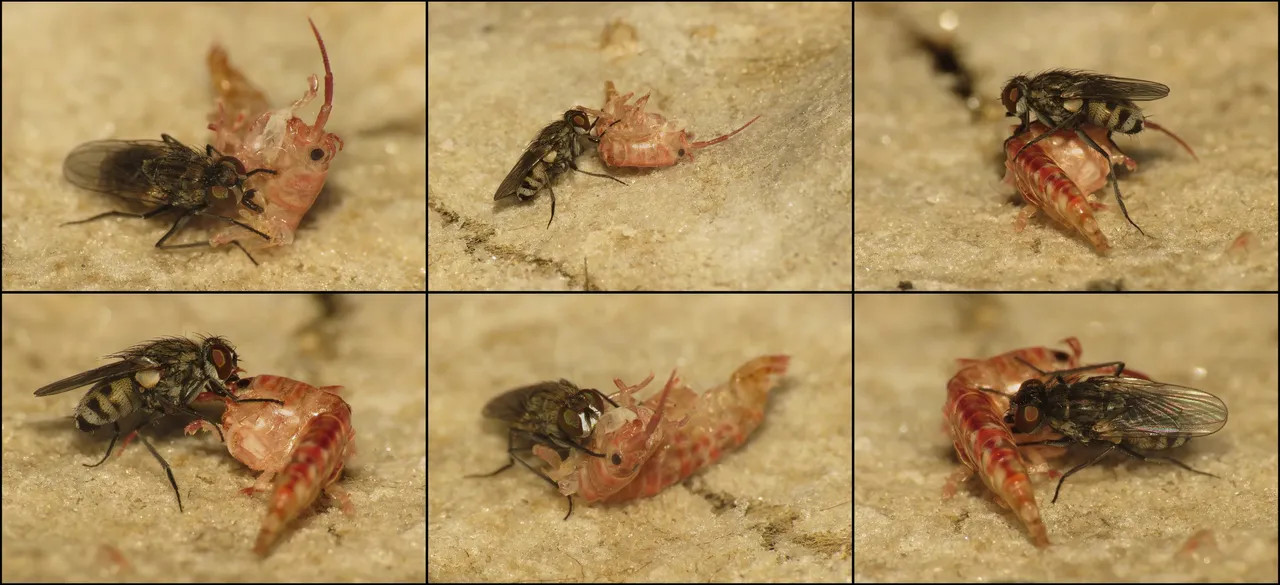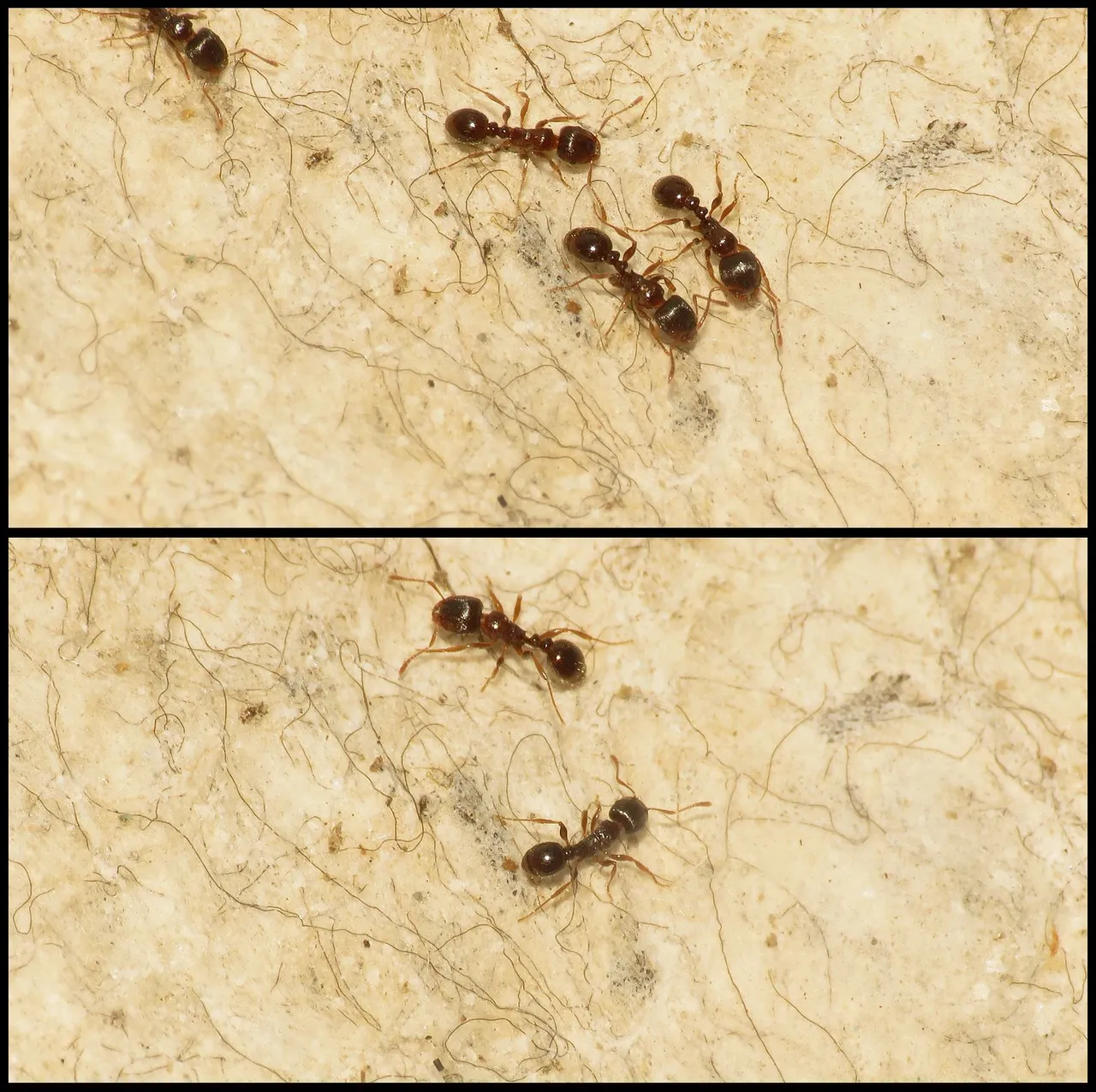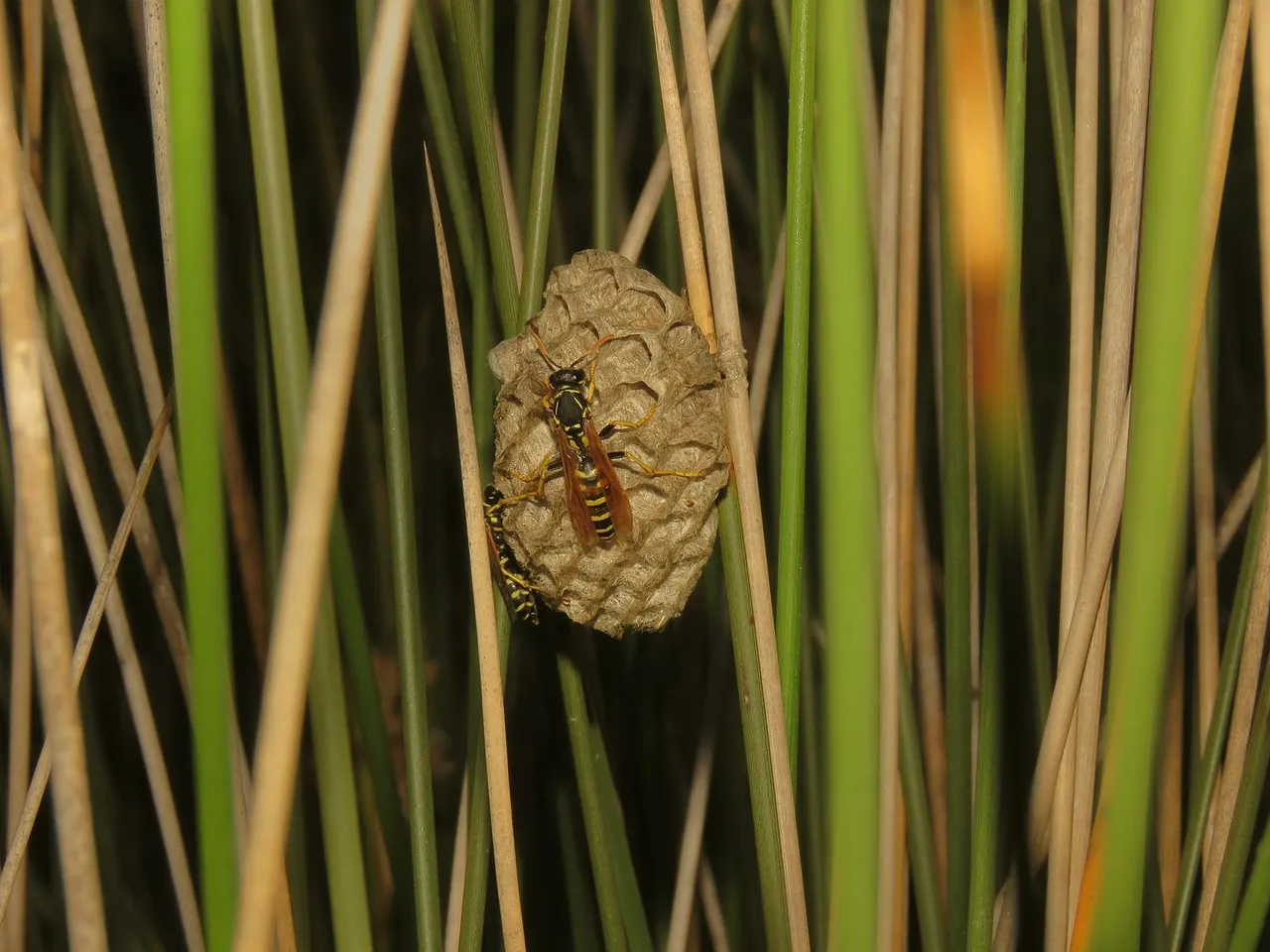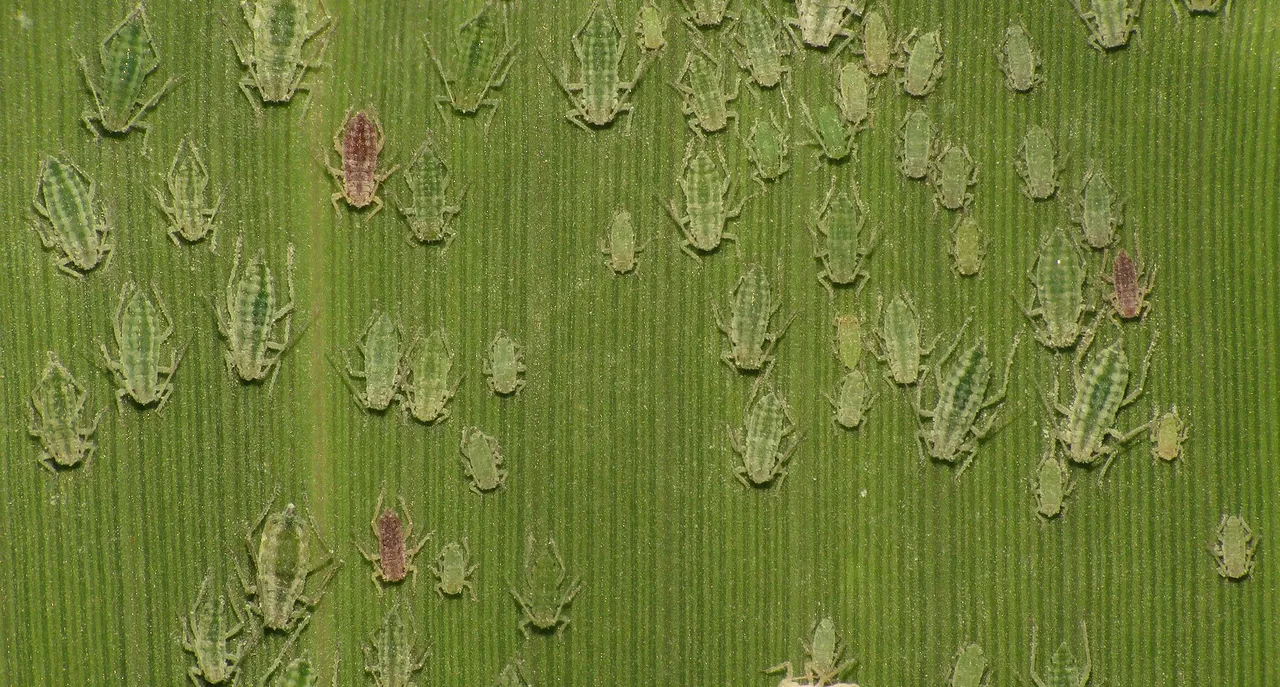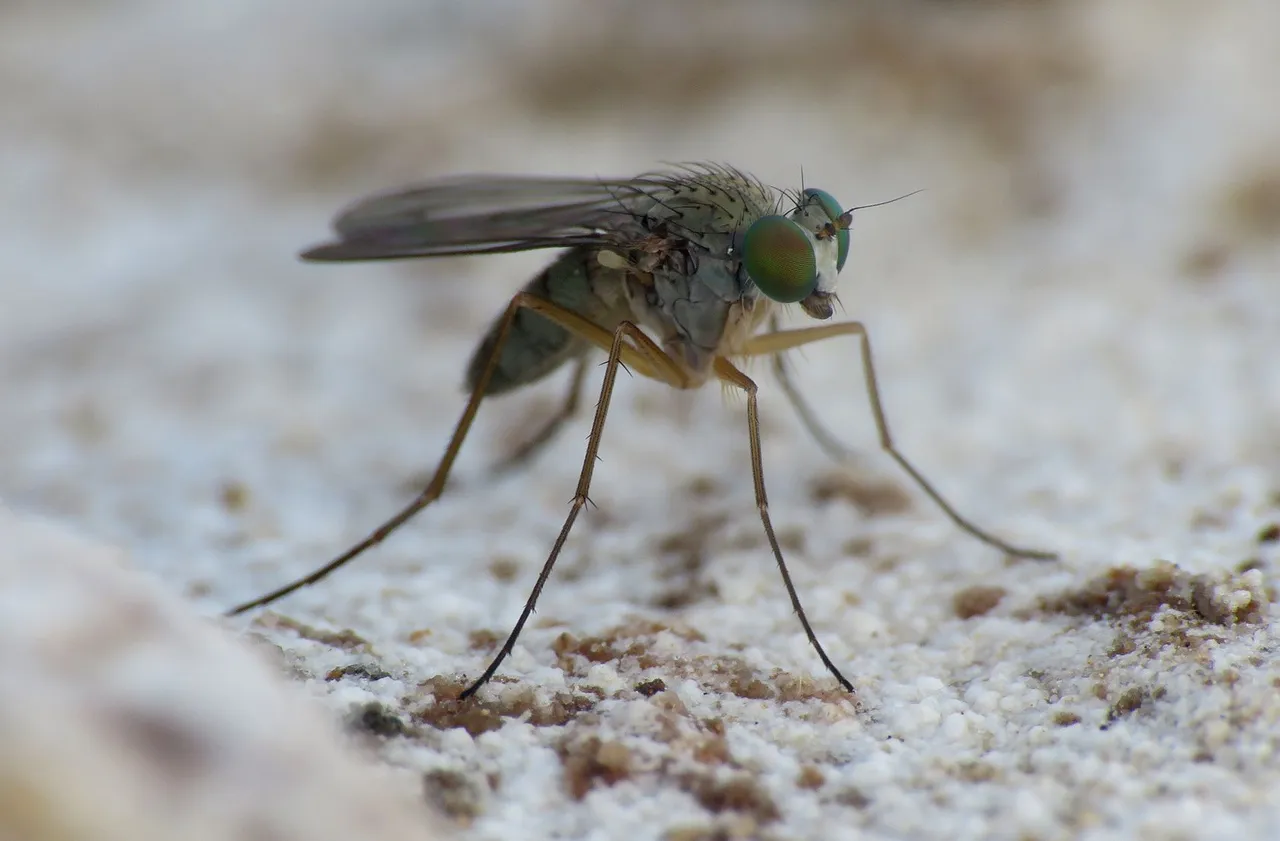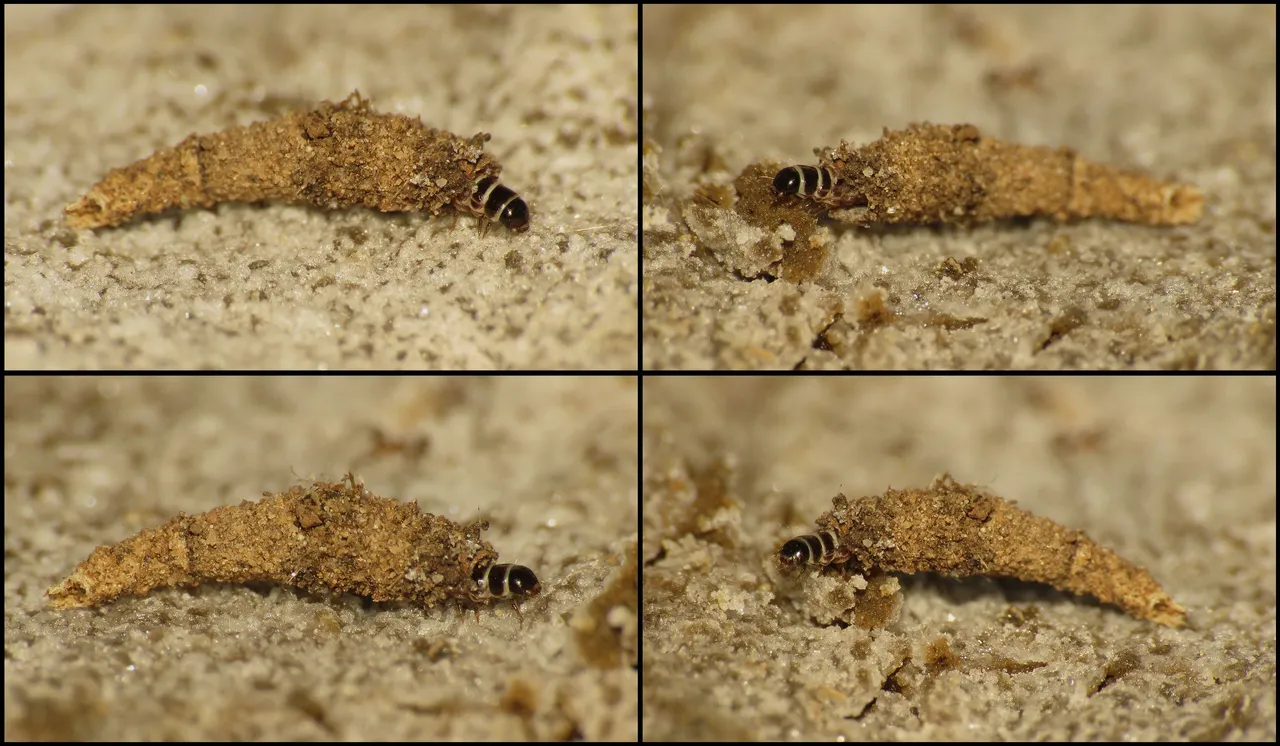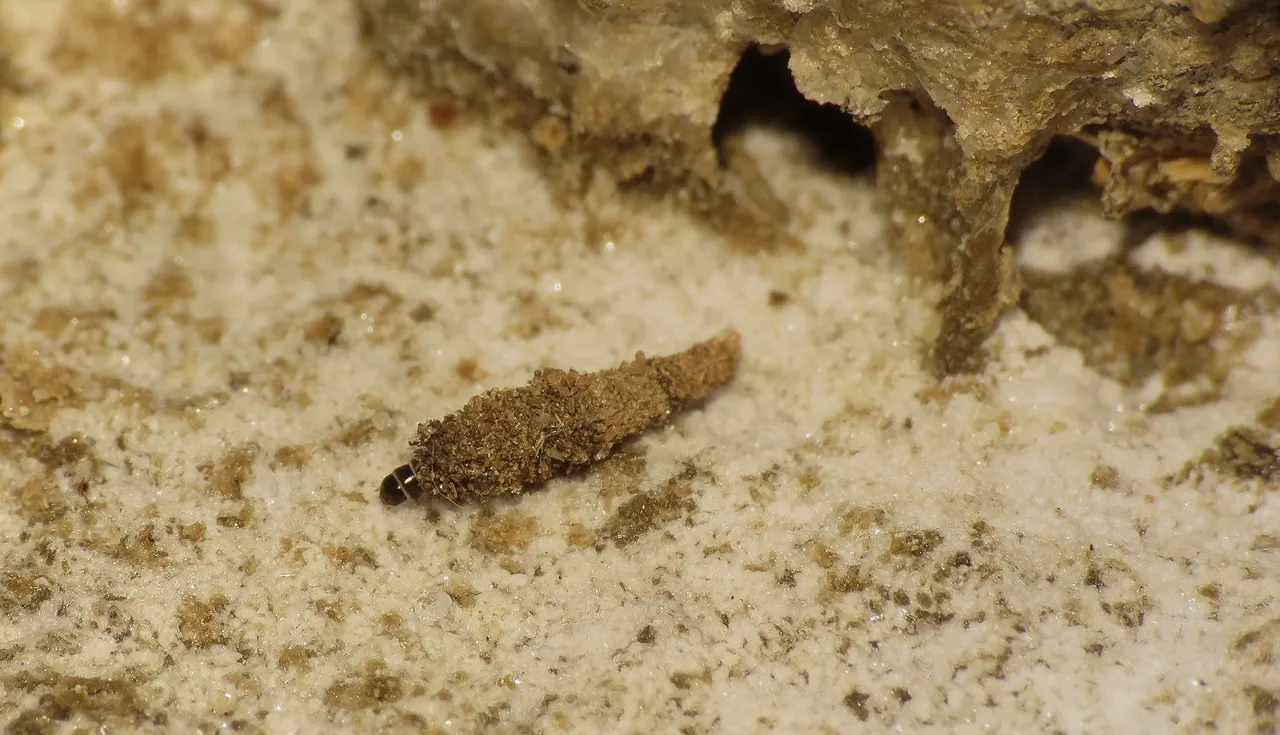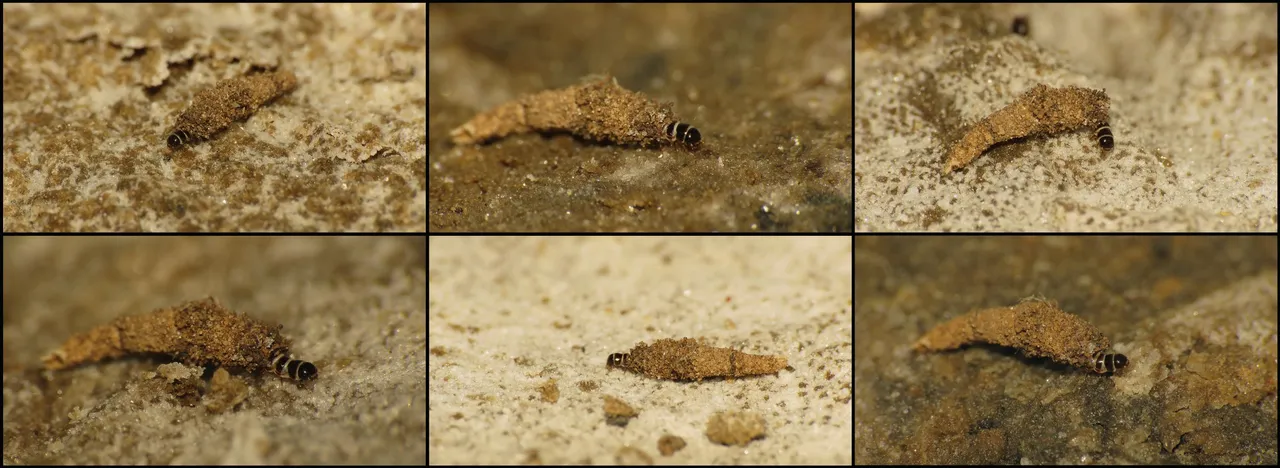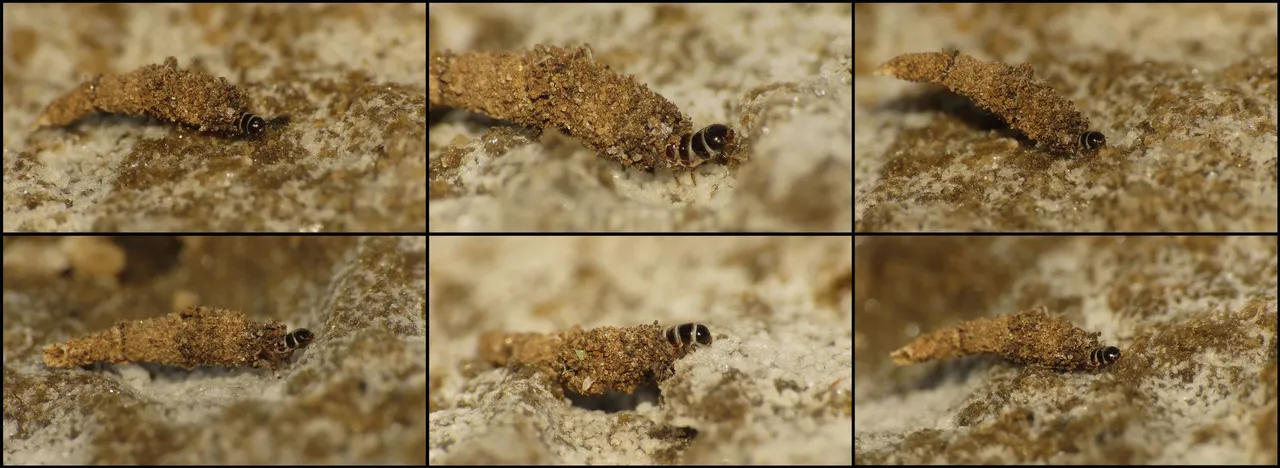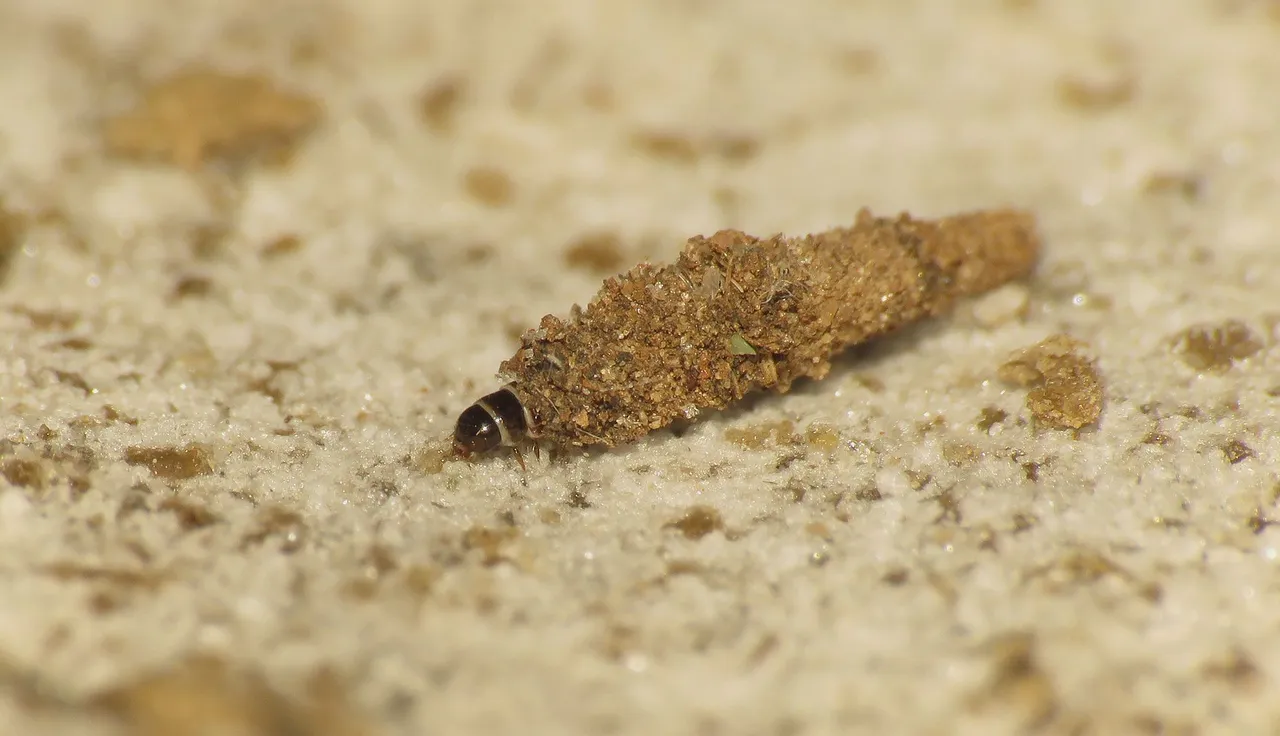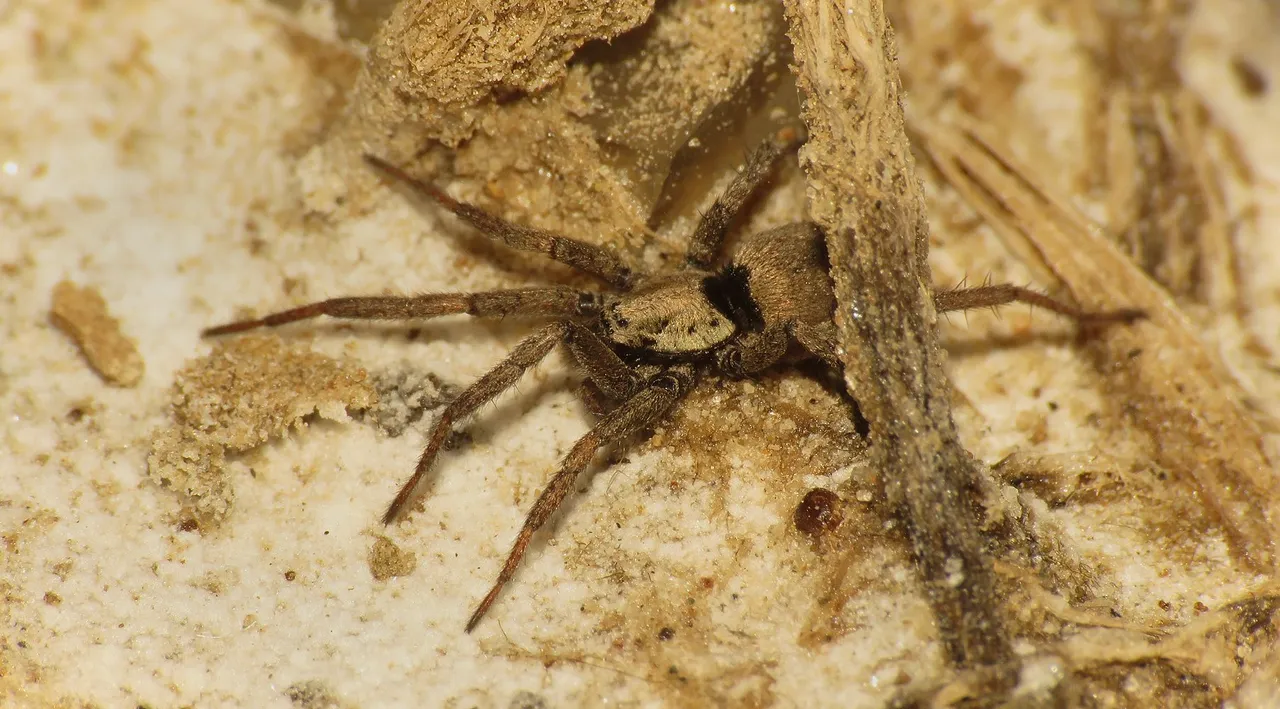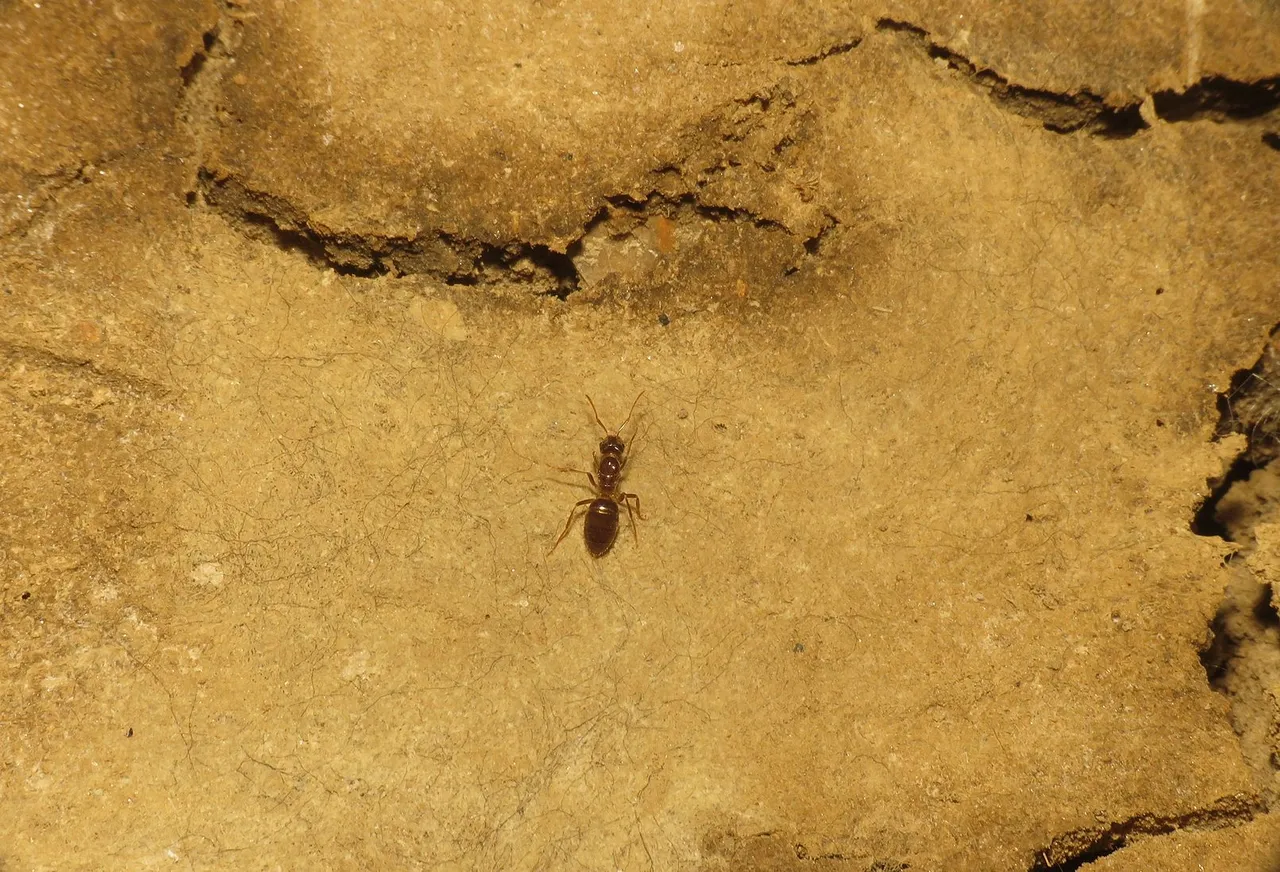There is a brackish coastal pool not far from my favorite beach. Through the wind and waves, it gets filled with salty water from the nearby sea, and when it rains, the freshwater is added to the mix. This is an aquatic environment for the most part of the year, but in the summer the shallow pool loses its water and looks more like a small, confined desert.
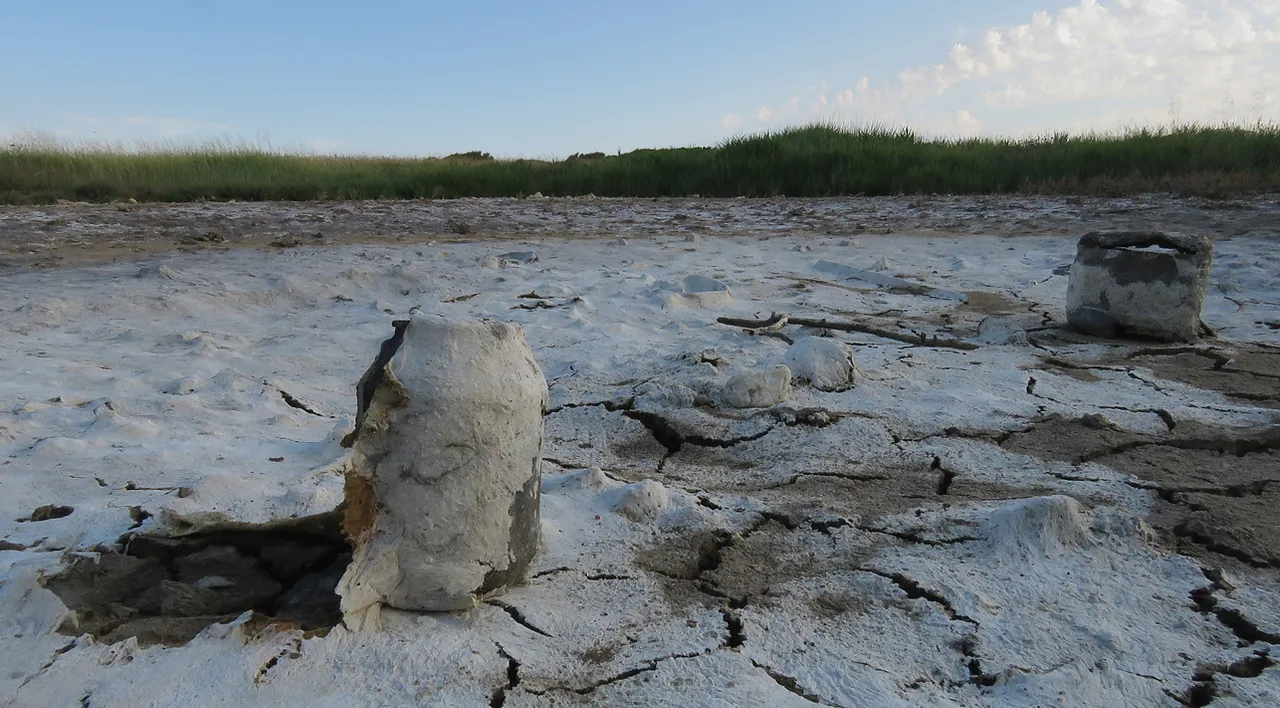
This place already appeared in quite a few of my posts on HIVE, but what you'll see here is a bit more than just more of the same.
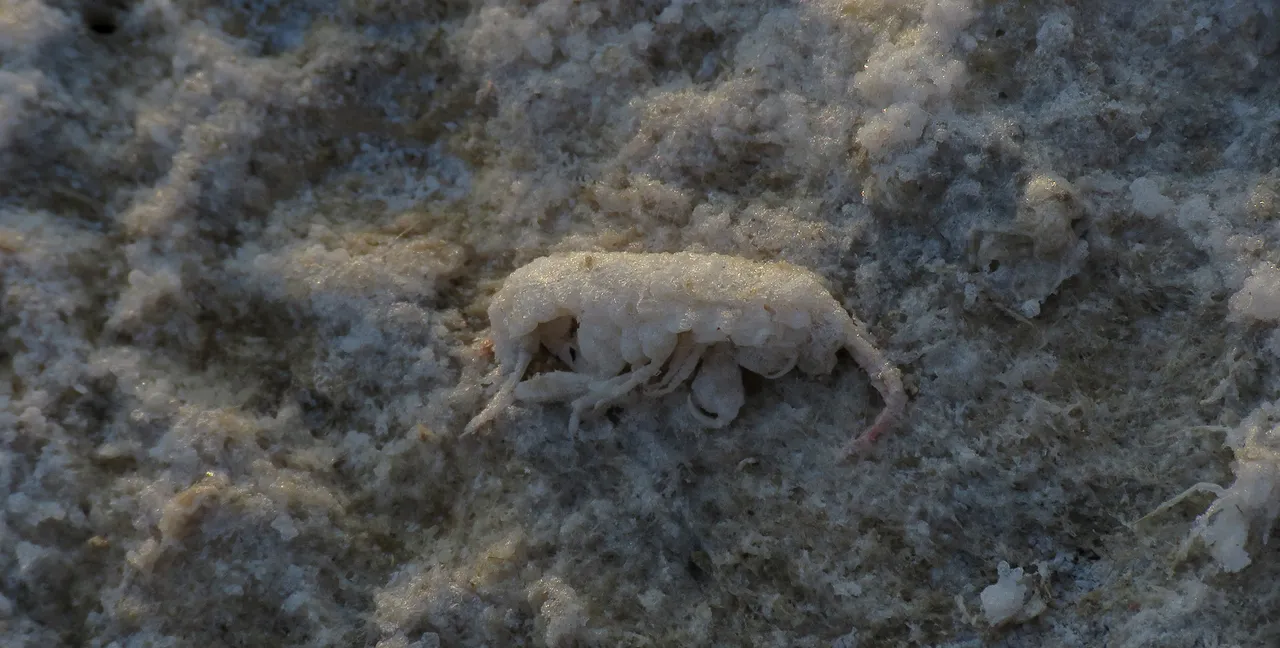
For most of these photographs I used the macro lens that weren't used in previous posts, and with those lens I was able to photograph many small details and interesting species that were out of reach before.
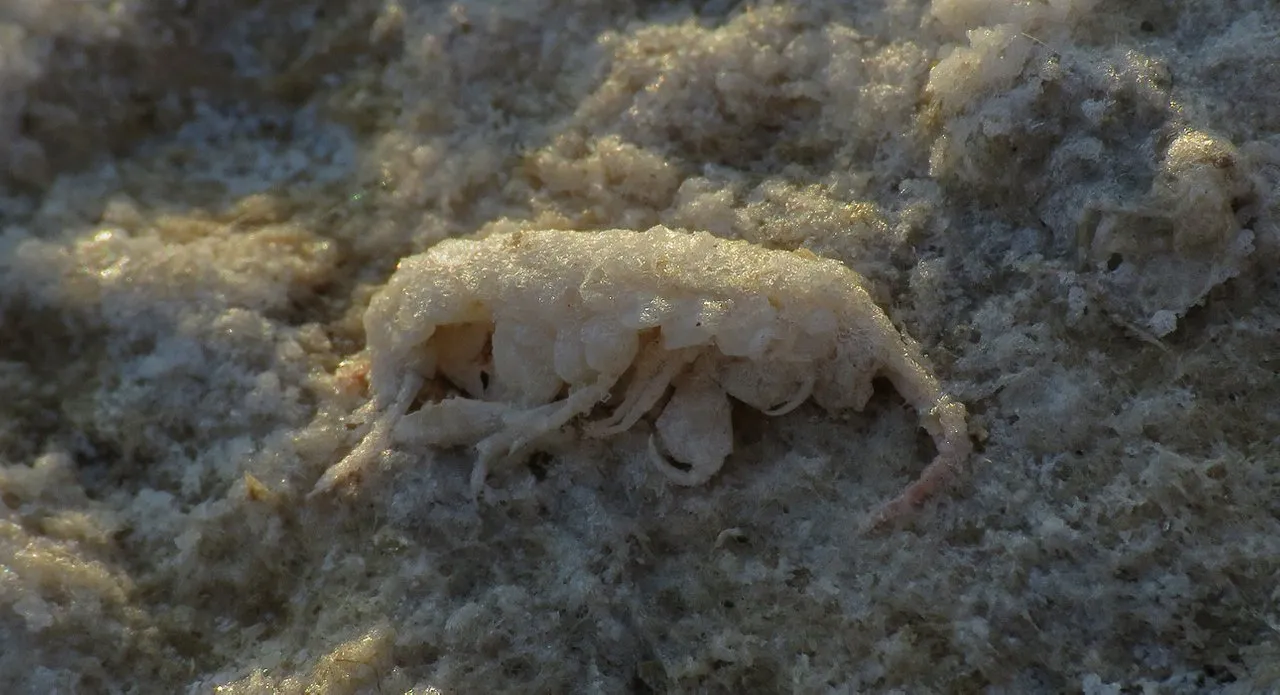
Here you can see a desiccated carcass of an amphipod that didn't find a humid shelter in time, so was killed by the intense sun. Now is laying like a sculpture made of salt.

The minuscule bug on the following photograph ...
... is watching its surroundings from the small hill overlooking the dried out, salty mud. This is the Halosalda lateralis, a bug from the Saldidae family, commonly known as "shore bugs" They are predators and scavengers in search for other small insects, mites and various meaty particles scattered around this place. The color of Halosalda lateralis bugs can vary, this one is basically black with pale markings ...
... and if you enlarge this enlargeable photograph, you may notice a mostly pale specimen well camouflaged in the center of the picture.
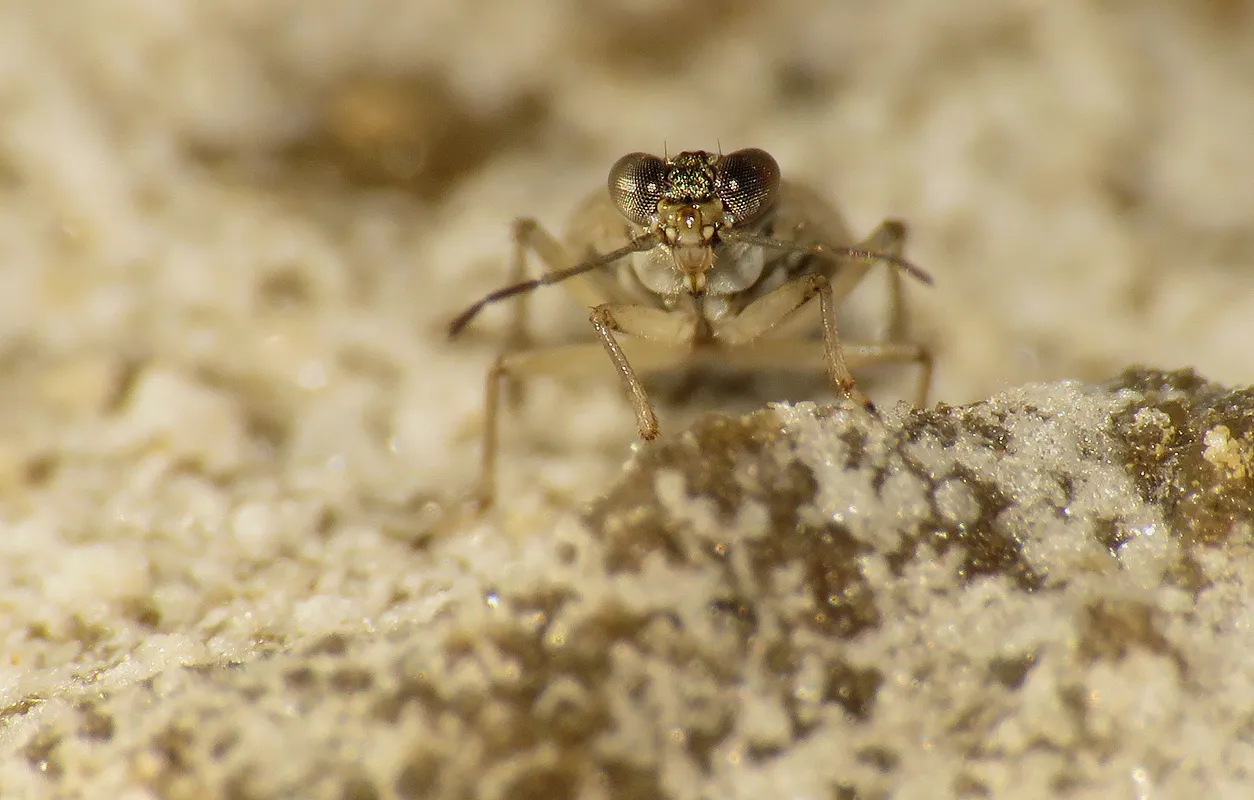
Besides being minuscule and almost invisible due to their mimetic colors, these bugs are also very fast and shy, always ready to run or fly away, very hard to catch with the camera. I spent many hours to get just these three shots.

The young wingless nymphs of this species are much easier to photograph ...
... but harder to find, because they are hidden in dark, humid places during the long summer day. You can find them under the stones and various peaces of garbage scattered around the dried out pool ... but only if you are lucky. I found only one during the three days od shooting for this post.
Since the environment, when not dry like now, is a mix of salty water from the sea and fresh water brought by the rain, the fauna is also a mix of sea and freshwater animals ...
...so now, in the summer, you can find desiccated remains of crabs ...
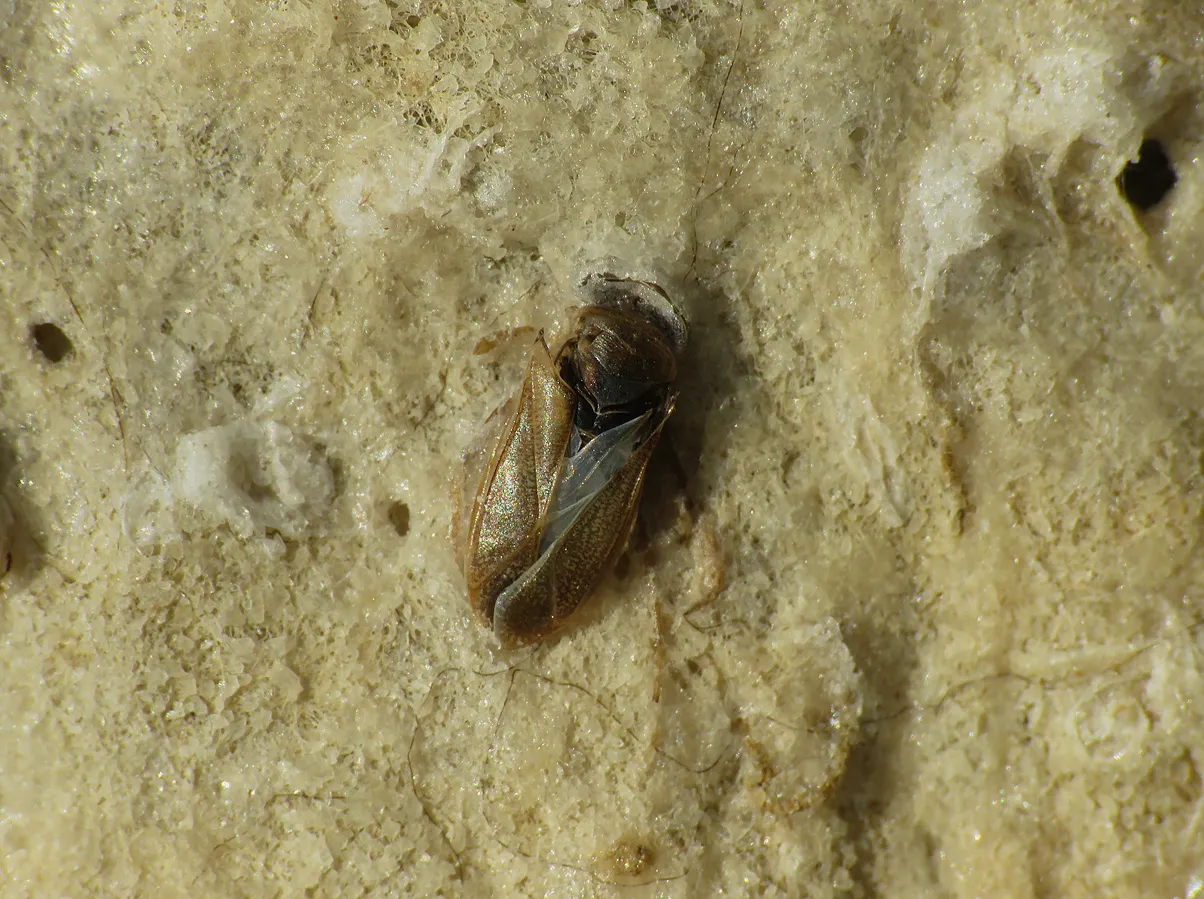
... and various aquatic insects, like this mummified Corixidae bug, ad example.
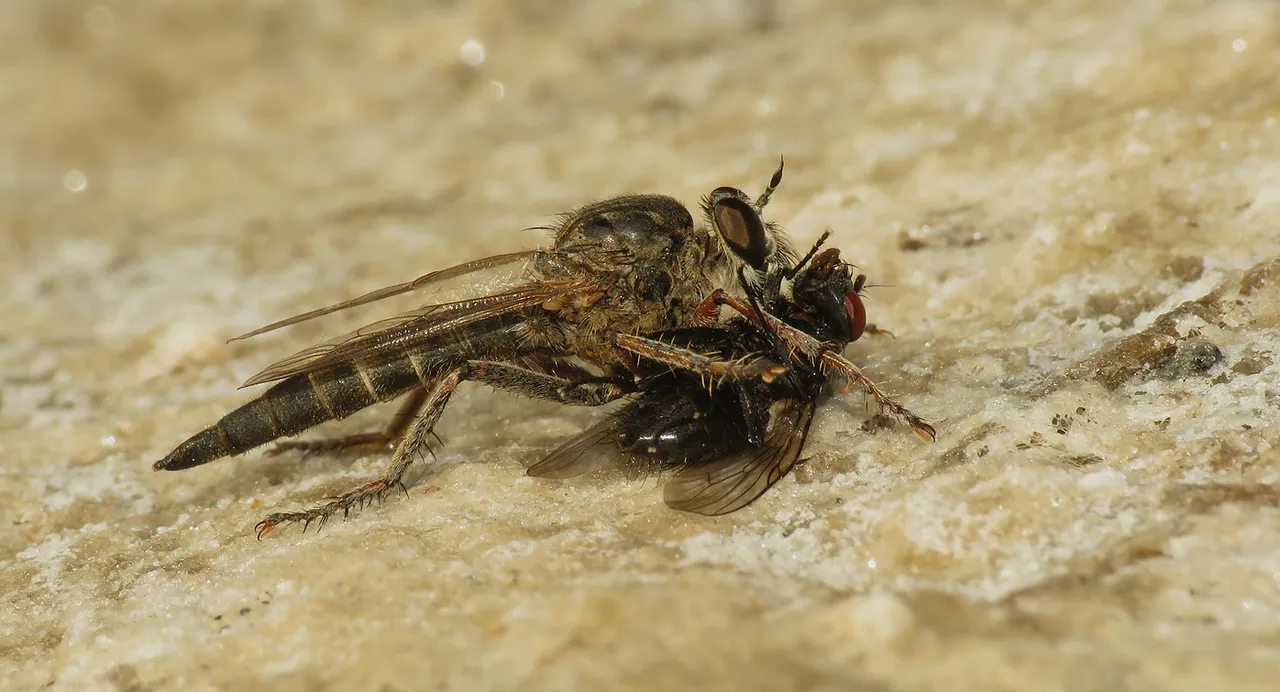
The general decay of this place attracts many kinds of flies that feed on rotting stuff ...
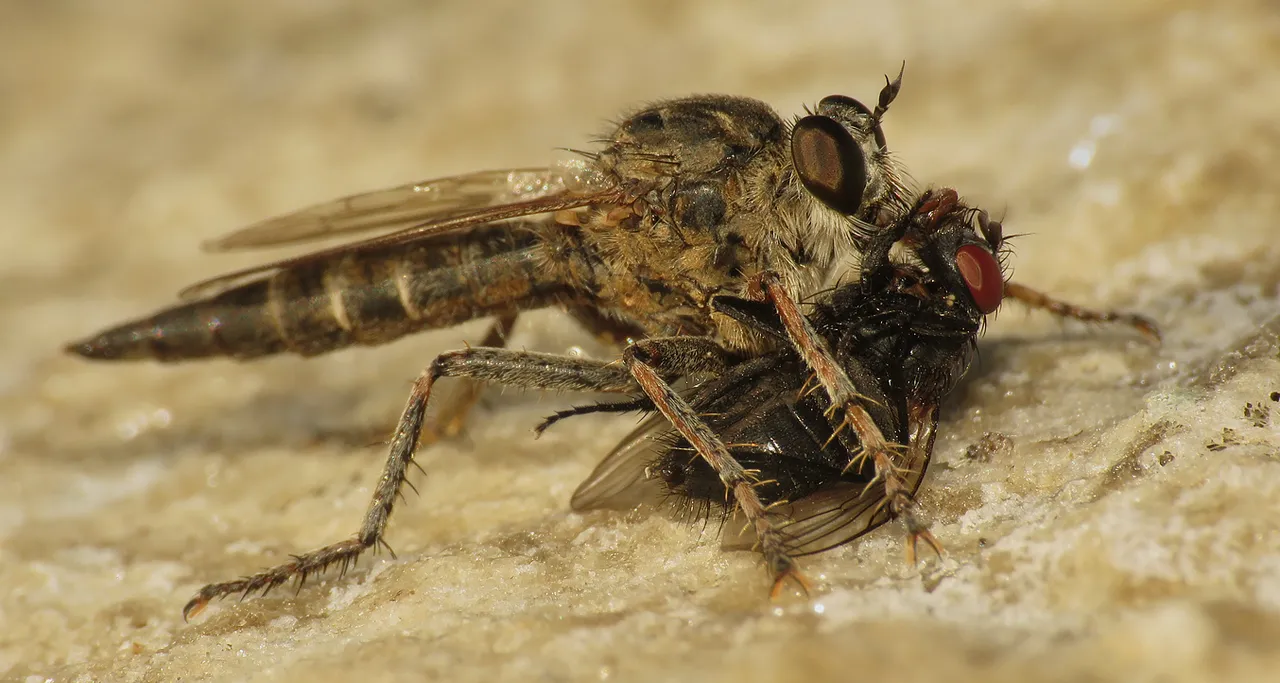
... and this robust robber fly (Asilidae family, don't know the exact species) is preying on those scavenger flies.
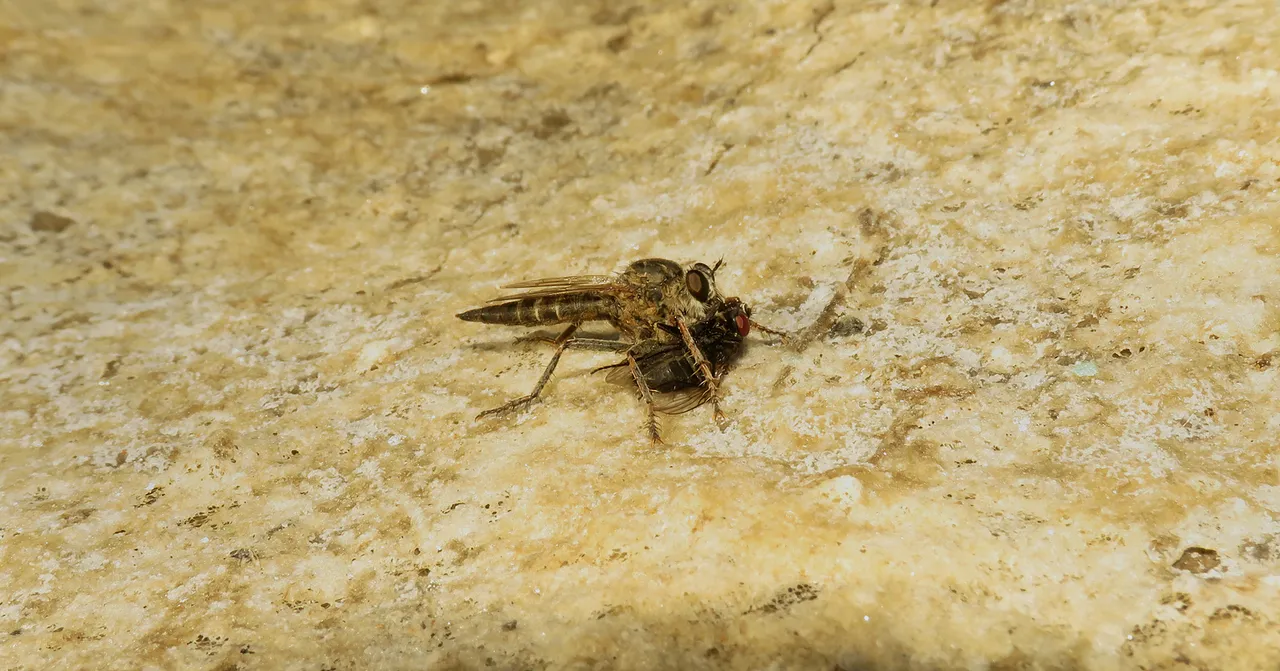
While the majority of insects present in the area are here for food or shelter ...
... some, like the Otiorhynchus cardiniger weevil on these photographs, are just passing through.
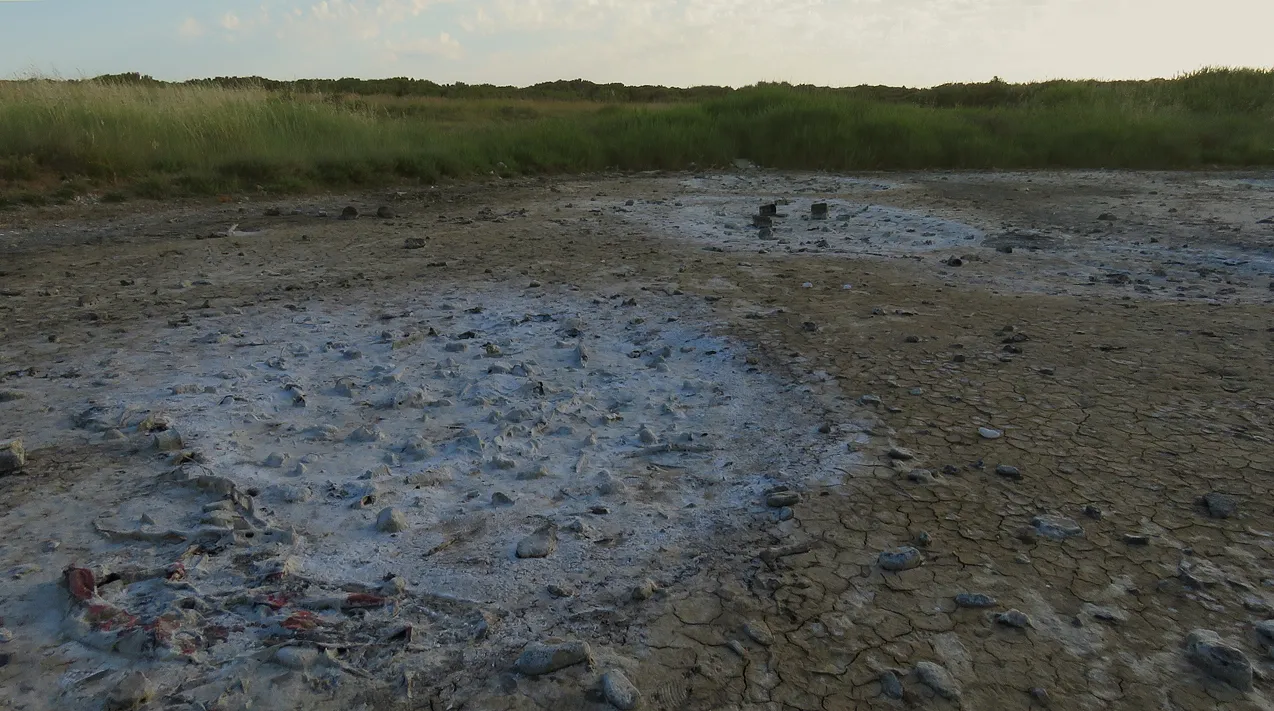
There is nothing for this species in the dry, barren valley covered with salt ...
... but the Otiorhynchus cardiniger weevil has fused wing covers. It's unable to fly, so it has to walk across this small desert to reach the next host plant - a blackberry shrub or some wild grape vine. Here you can see the weevil approaching the dead amphipod ...
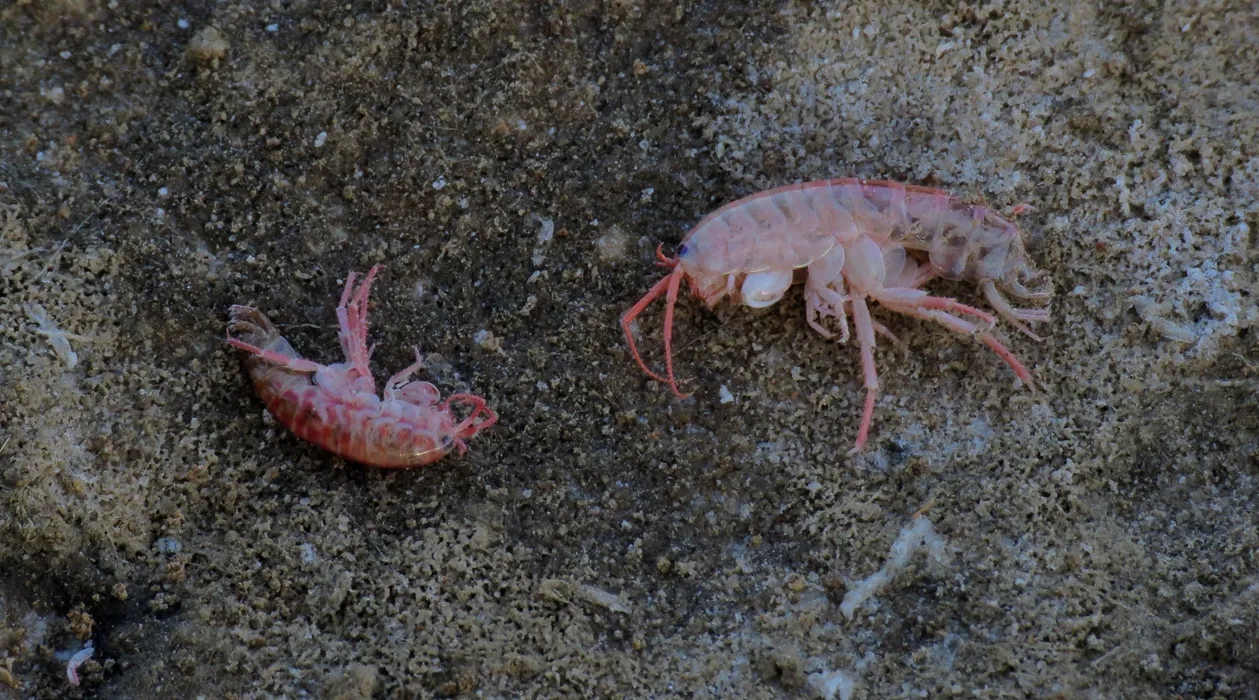
... one of the many miniature carcasses scattered all around the place.
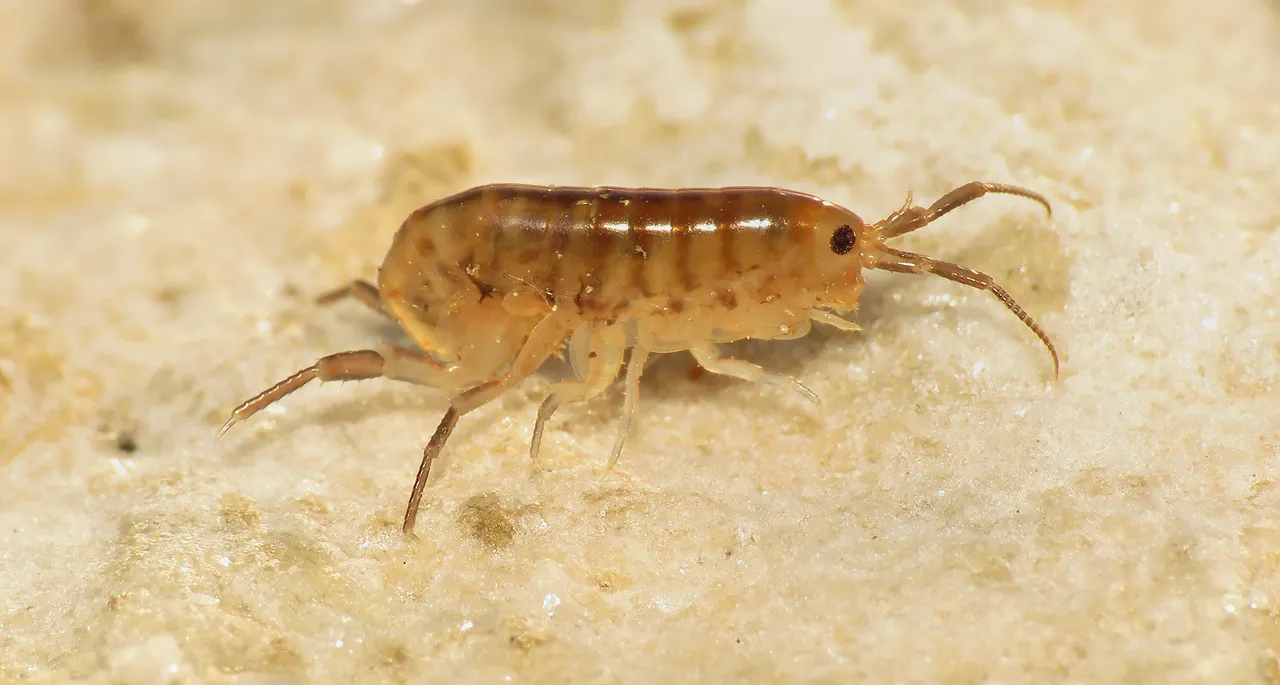
Despite the harsh conditions, not all the amphipods have died. This one is alive and in good shape.
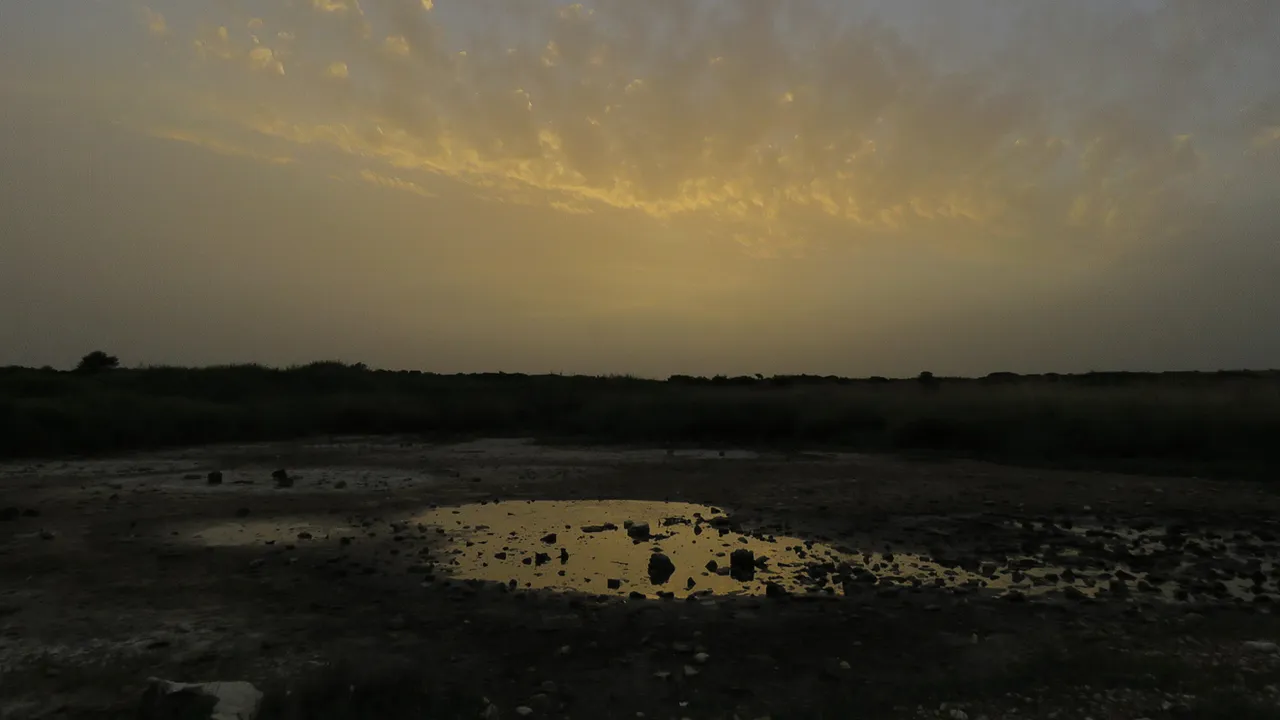
The shot was taken in the evening ...
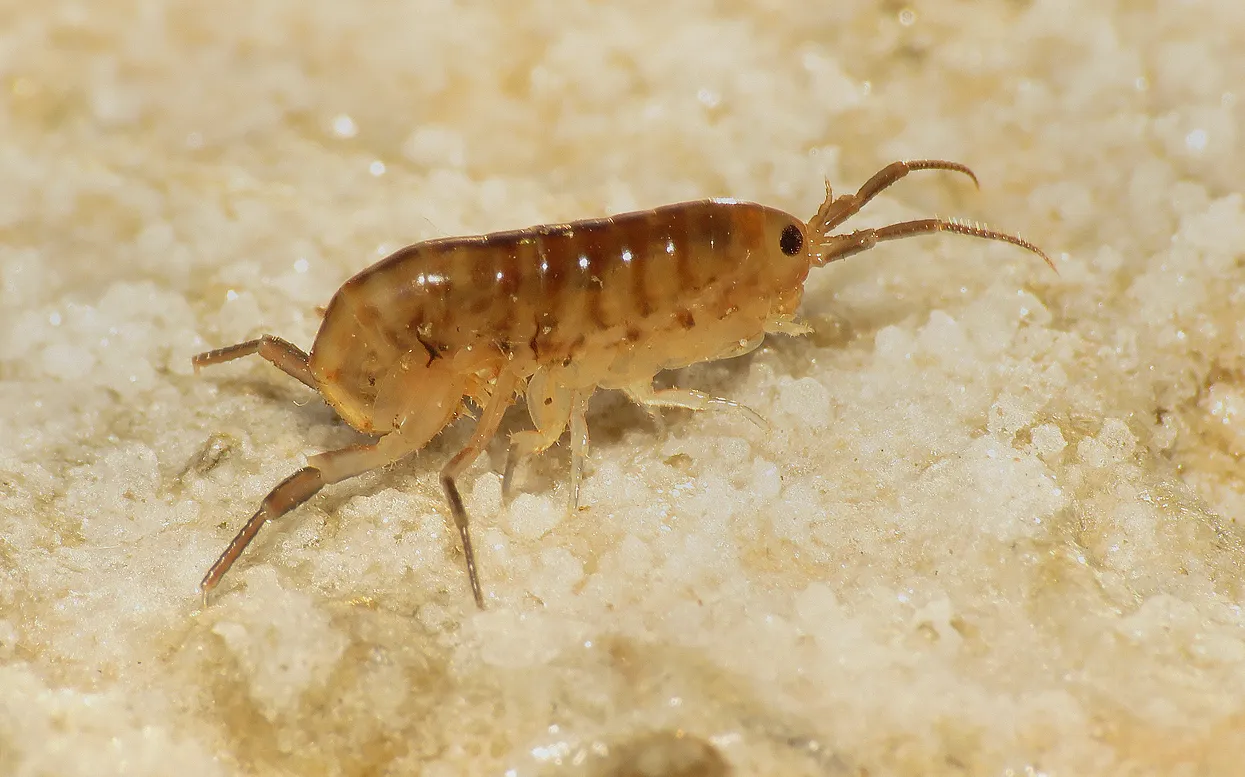
... when the small marine crustacean can be seen out in the open, traveling from shelter to shelter.

The strictly terrestrial crustacean, Trichoniscus pusillus woodlice, also come out of their dark humid shelters when the sun is down. They will feed on decaying algae during the refreshing night.
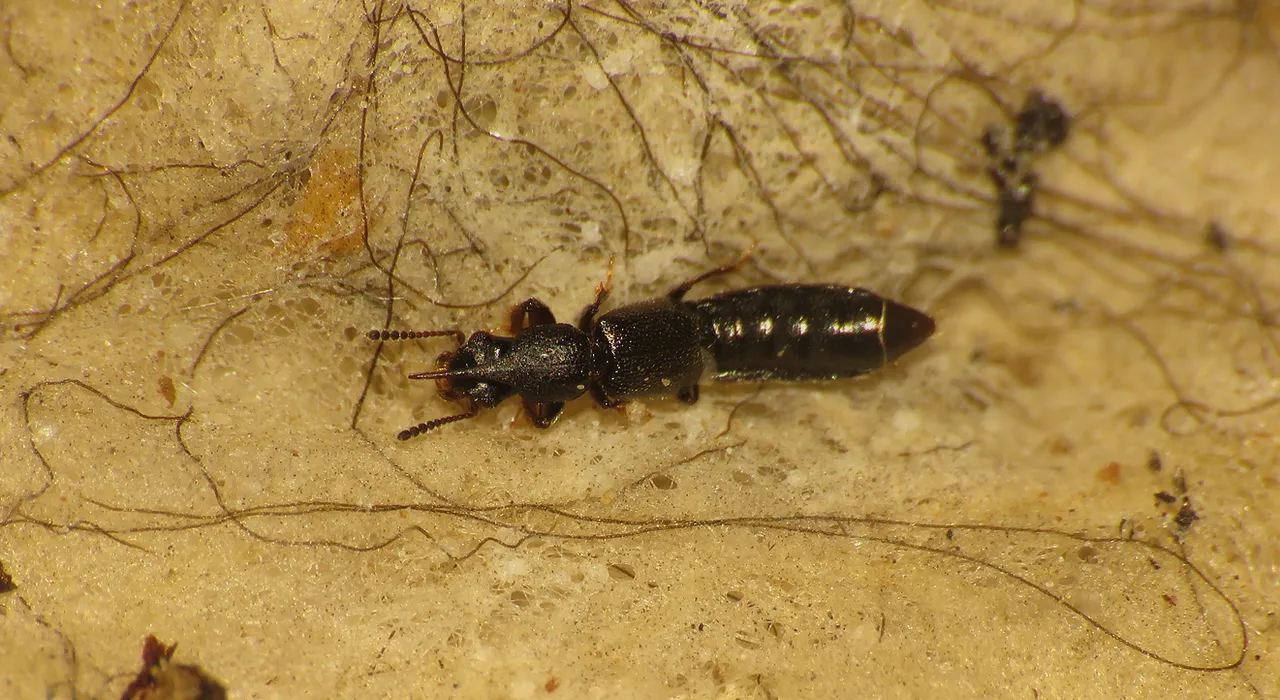
This interesting rove beetle, with a distinctive horn on its thorax, is yet another species that becomes active at dusk.
Bledius unicornis beetles live and burrow in the mud of the tidal zone. This is a truly marine species that occurs below the high tide line, and survives by trapping the air in its burrows for breathing during the high tide. Late in the evening, you can see them crawling around the dry mud and flying above the vegetation at the edge of the dried out pool.
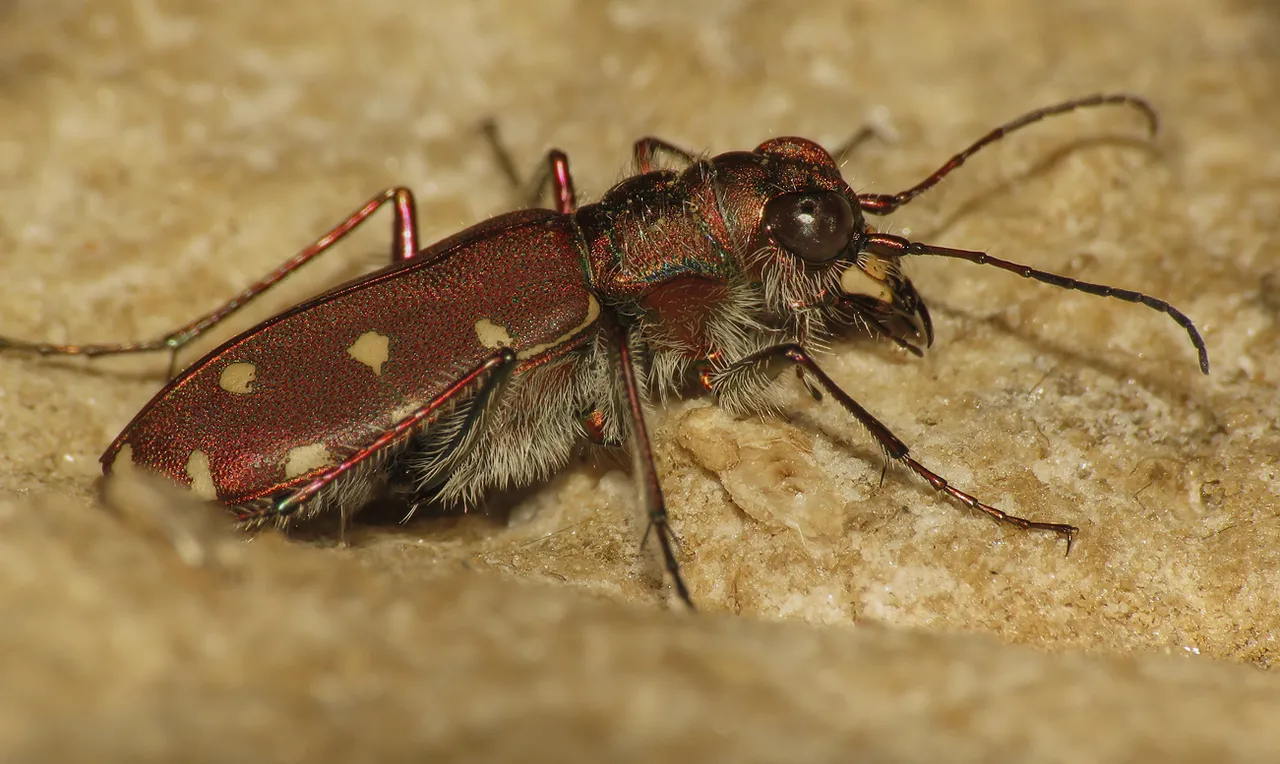
This tiger beetle, the Cicindela maritima, is patrolling the area during the whole day, even under the strongest midday sun ...
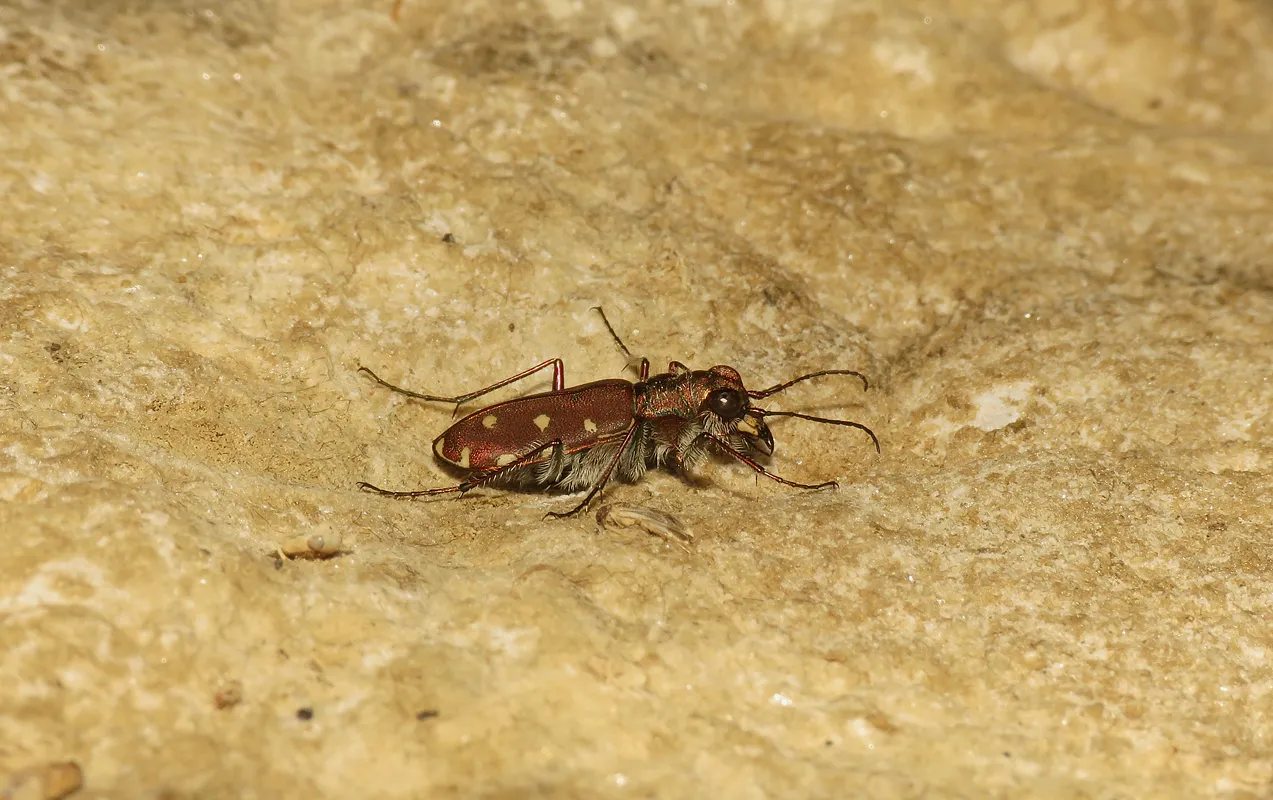
... but only now, in the evening ...
... I was able to take a couple of photographs. They are very fast predators that, during the day, rarely stand still long enough for a good up close shot. At evening they calm down, so it's easier to approach them.
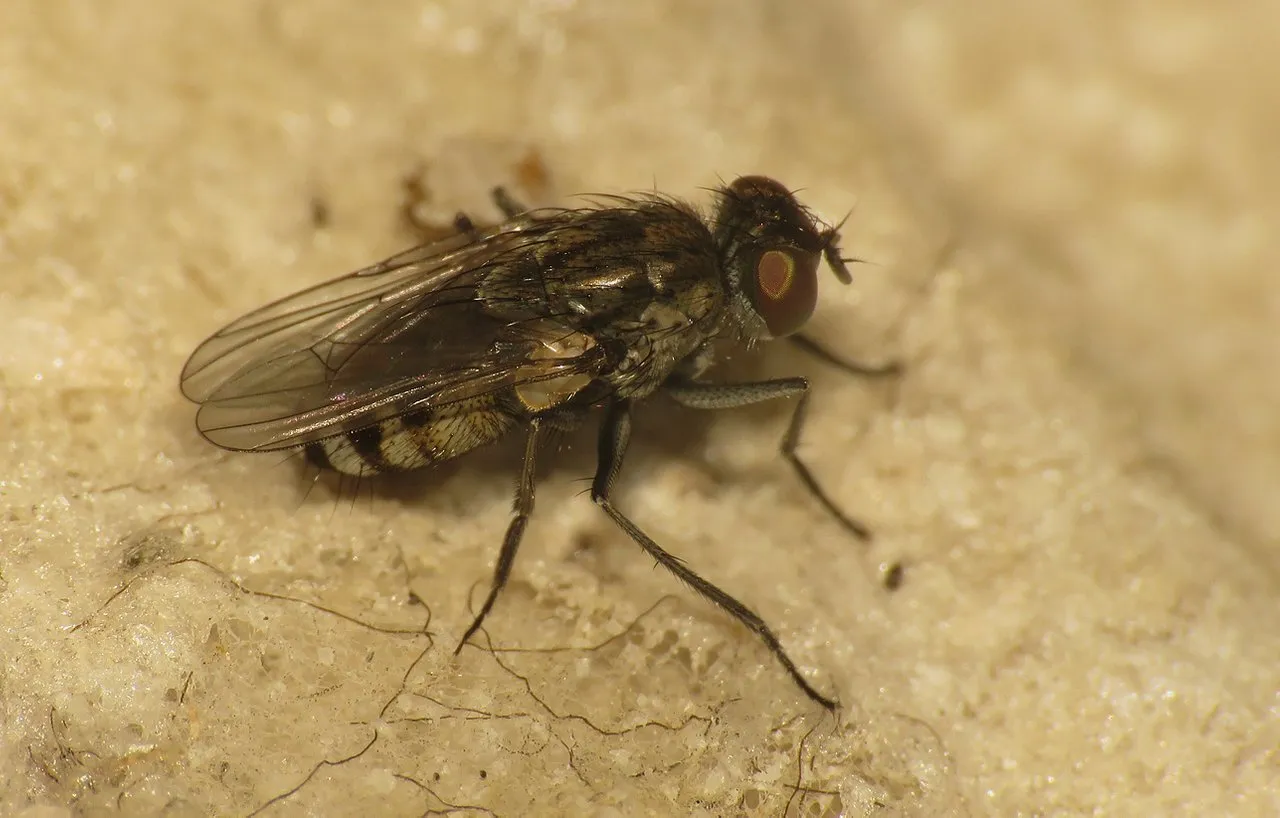
I saw this fly many times before ...
... but only when these photographs were taken, about a month ago ...
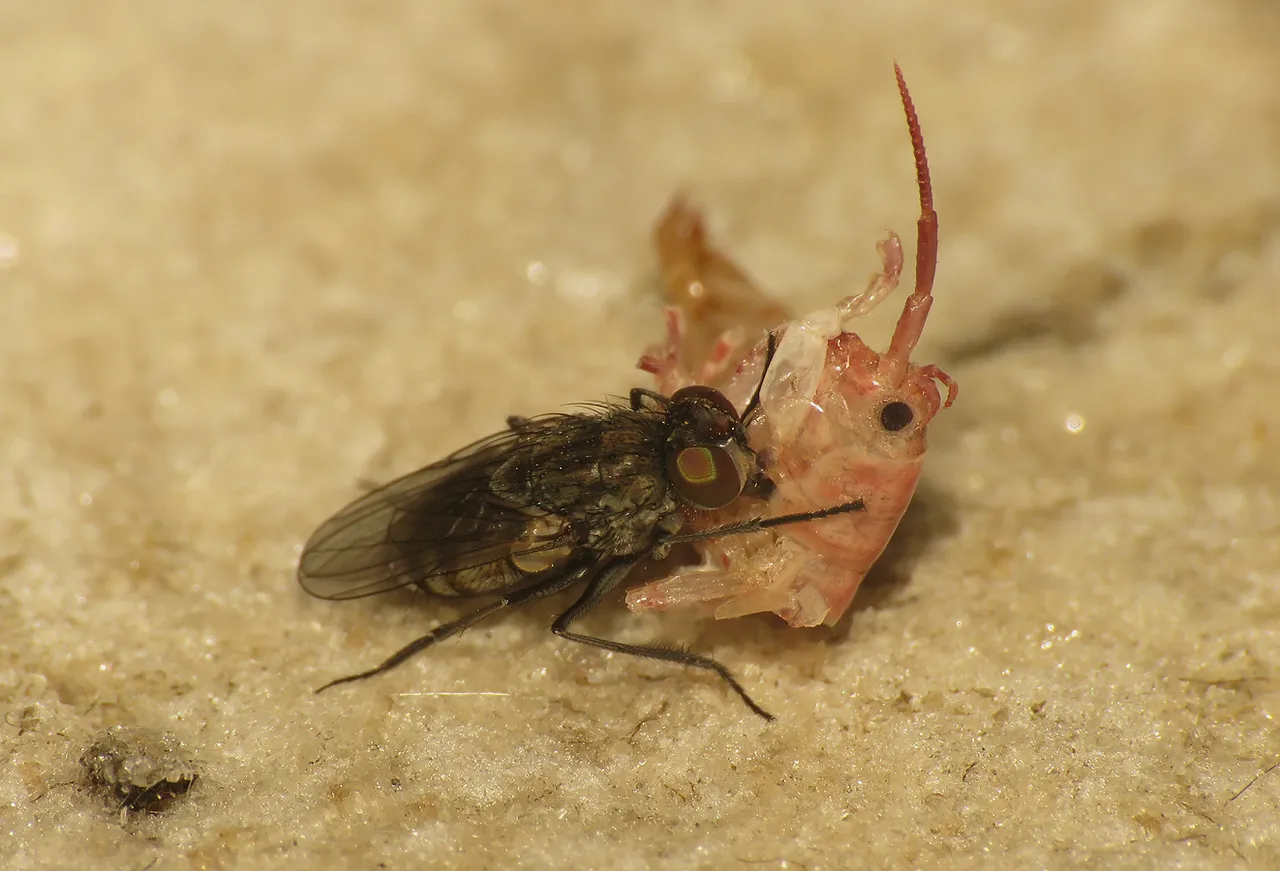
... I caught it for the first time in this situation ...
... while feeding on the dead amphipod.
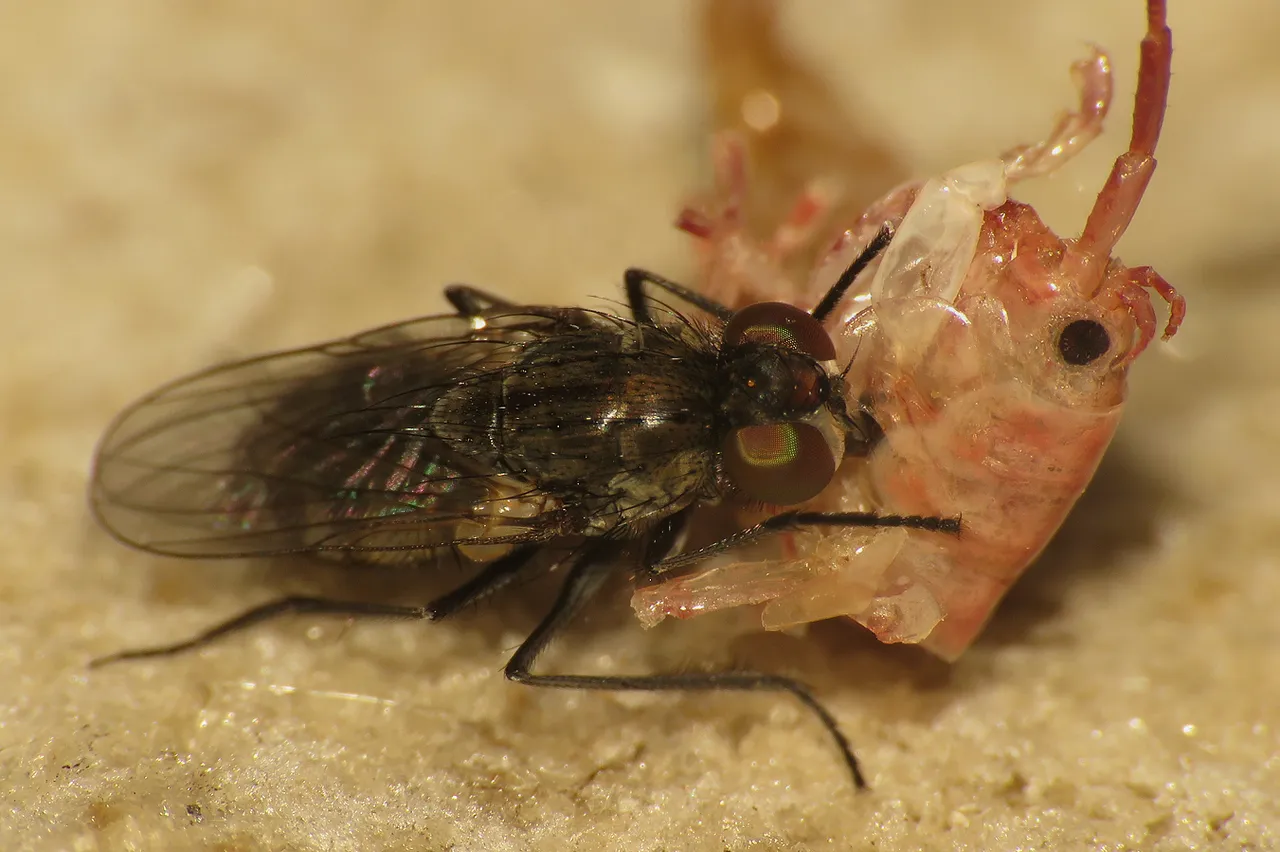
This is the Lispe tentaculata ...
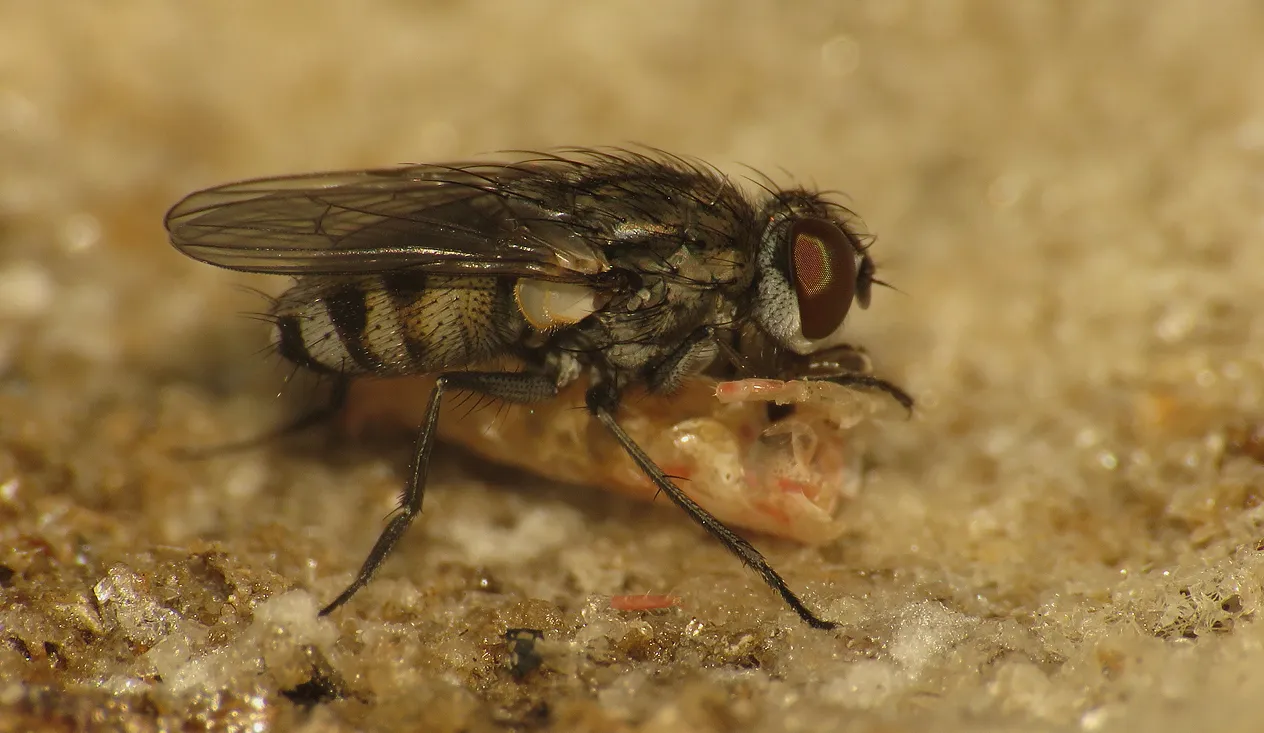
... fly from the Muscidae family that lives in the muddy habitats near ponds, rivers or lakes and shallow, sheltered inlets along the sea shore. Adults of his species feed on various small arthropods and their carcasses.
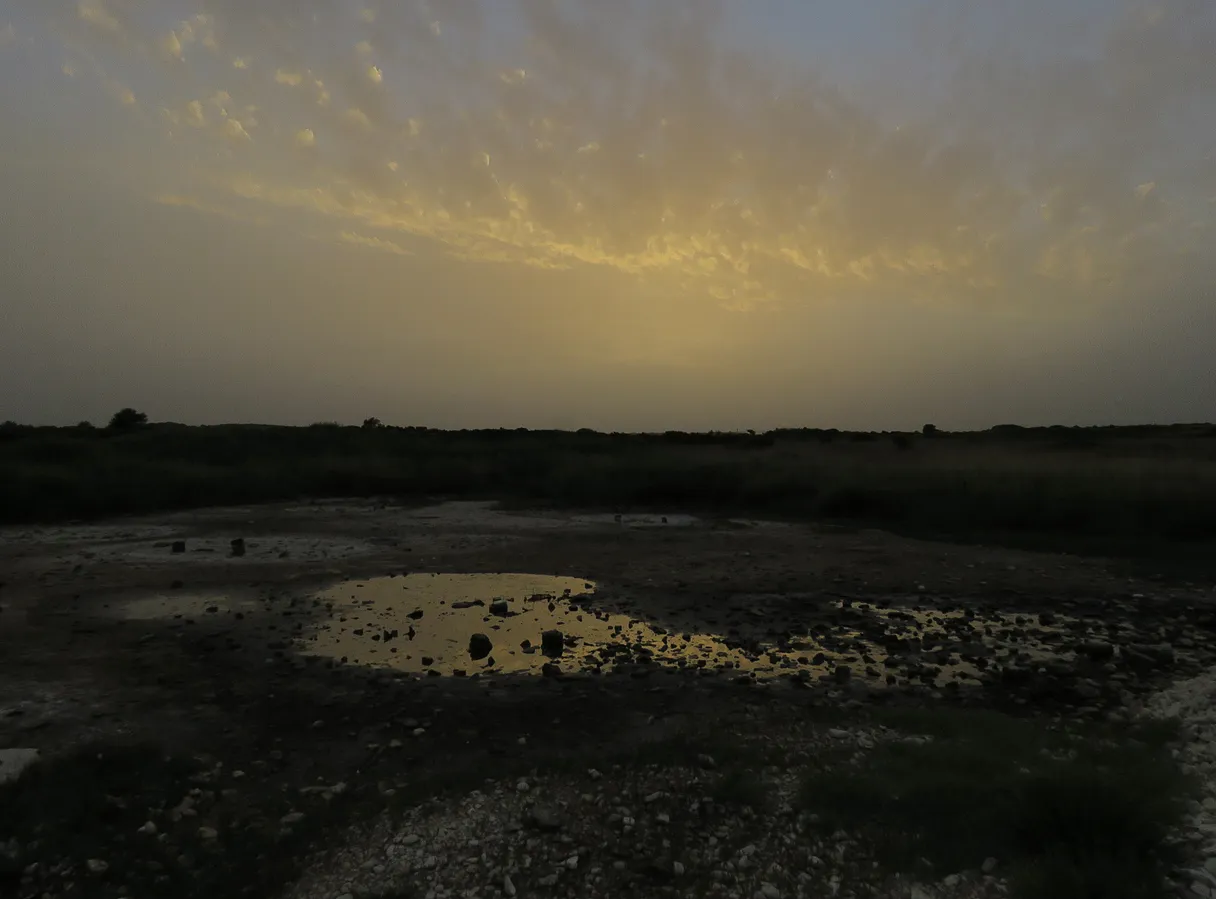
There is plenty of activity in this short period when the sun is down, but there is still enough light to search and photograph without the need for a torchlight or headlamp.
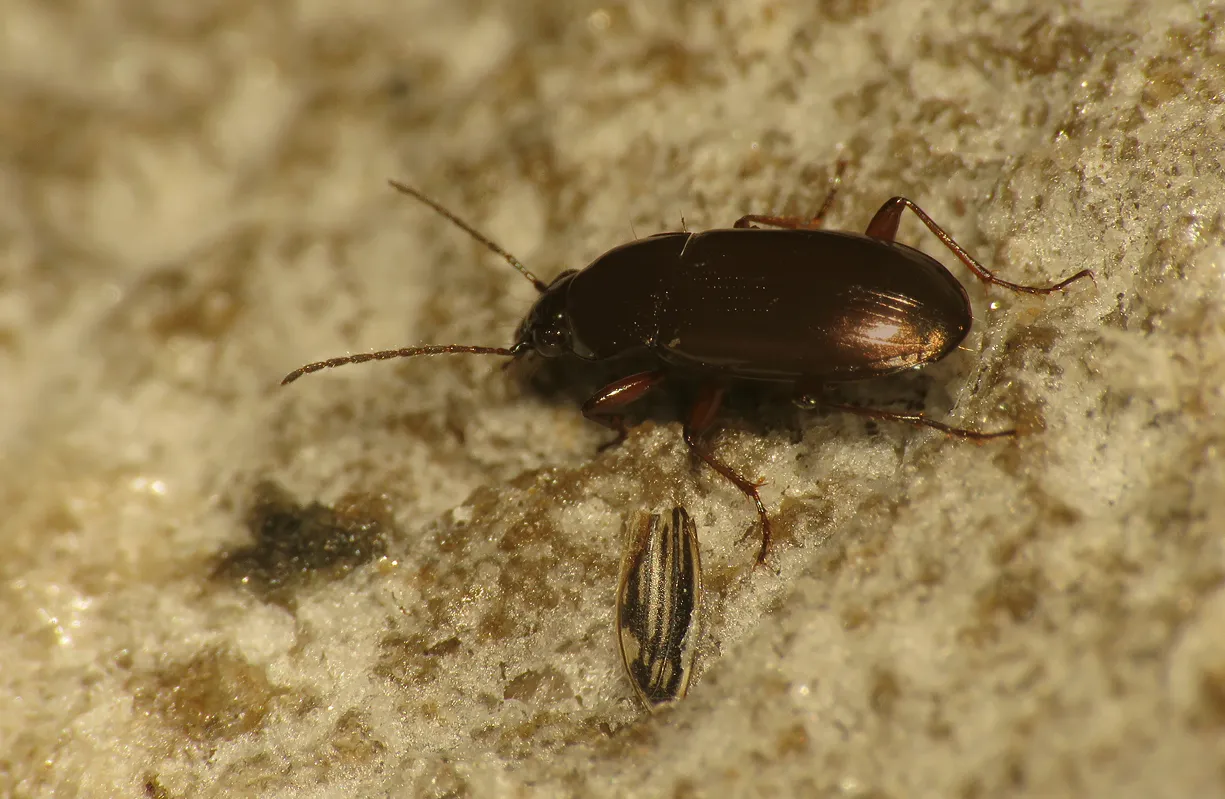
This is some small ground beetle. The family is Carabidae, but I can't tell you the exact species because quite a few similar looking ones are present in this area. They are well hidden in the slightly humid mud during the day ...
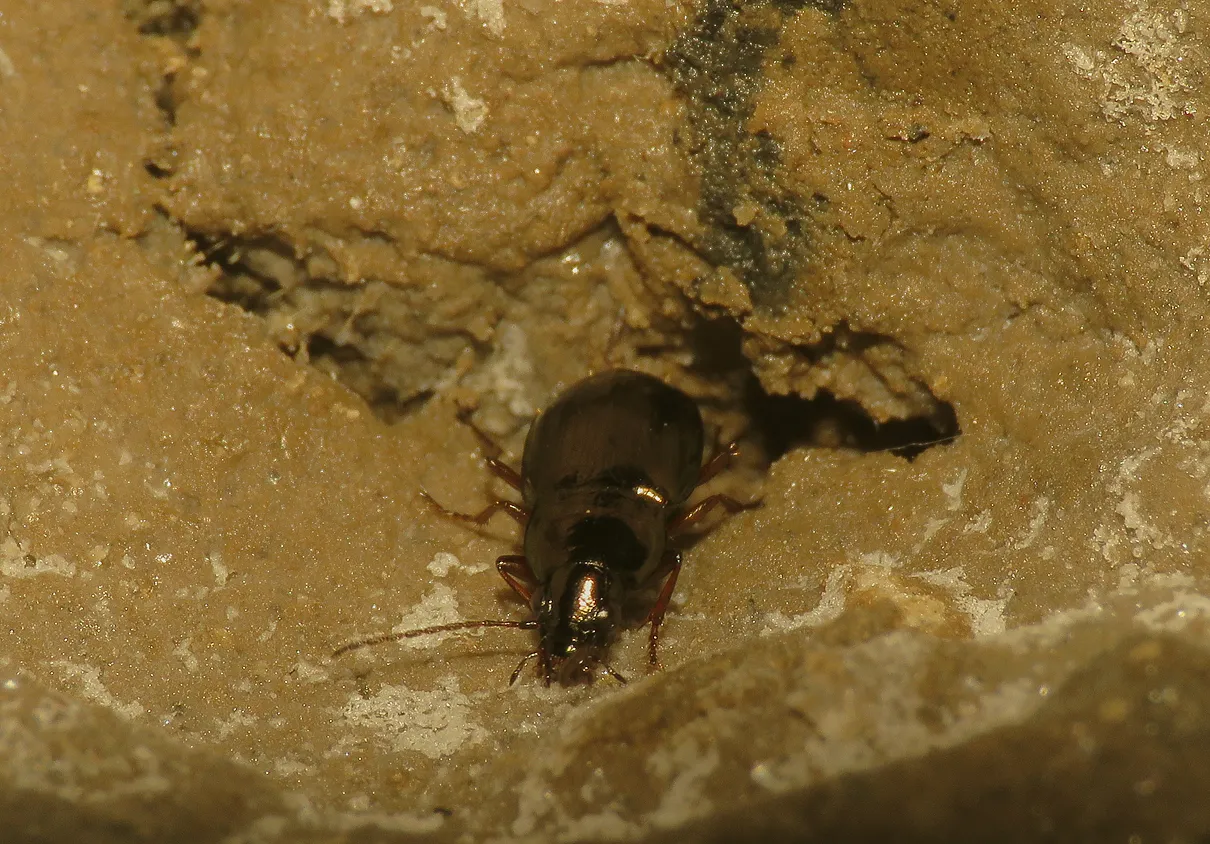
... and now, just minutes before night, I was able to take a couple of shots. They are extremely hard to photograph. Not only are they fast and shy, but also their shine is practically impossible to catch with the flash on, and whiteout the flash you can't photograph moving insects in this almost - dark. These aren't great shots, but I'm very satisfied that they still can show how this insect looks in its habitat.
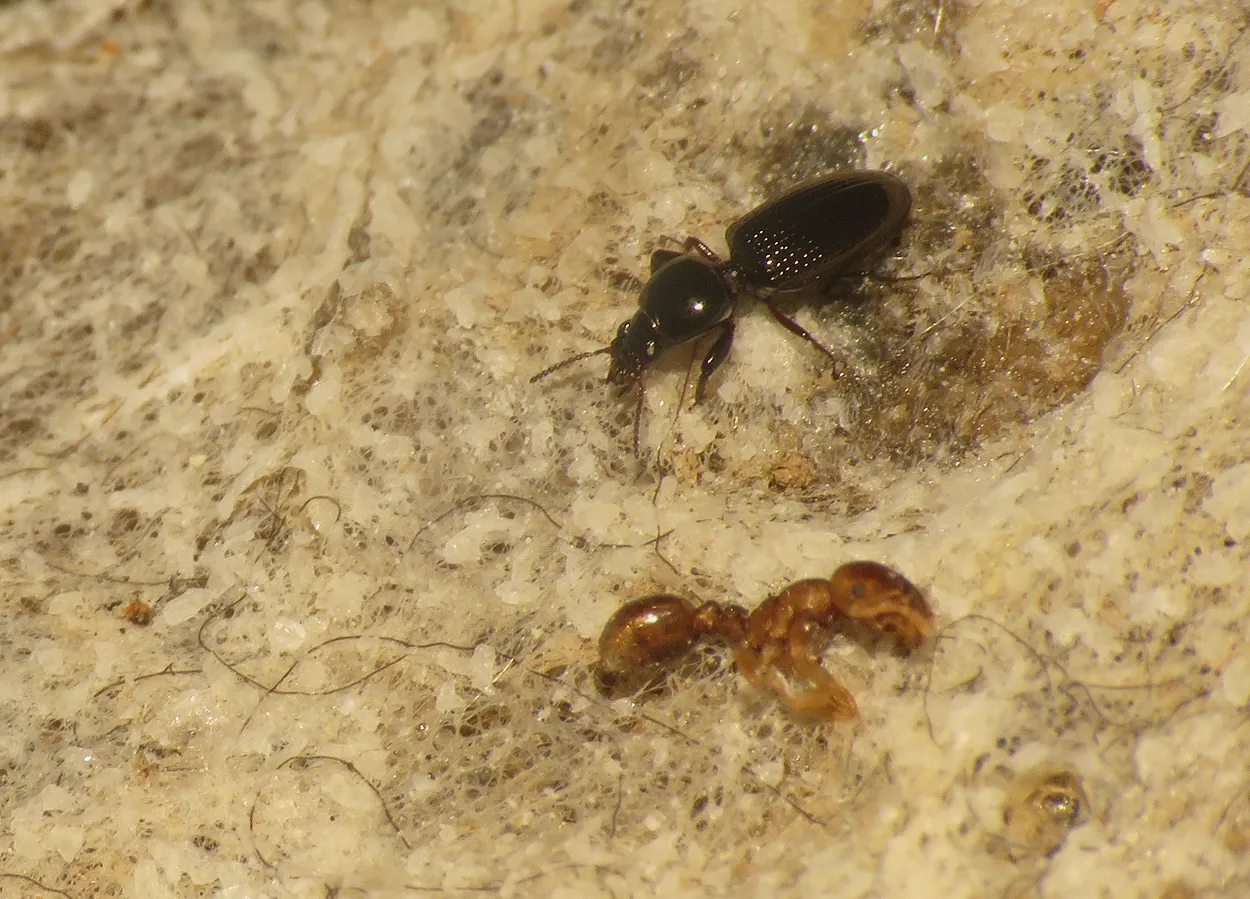
Here you can see another ground beetle of the night, the minuscule Dyschirius salinus. I never saw this species before ... or since, taking this photograph. You can see a dead ant laying near the beetle.
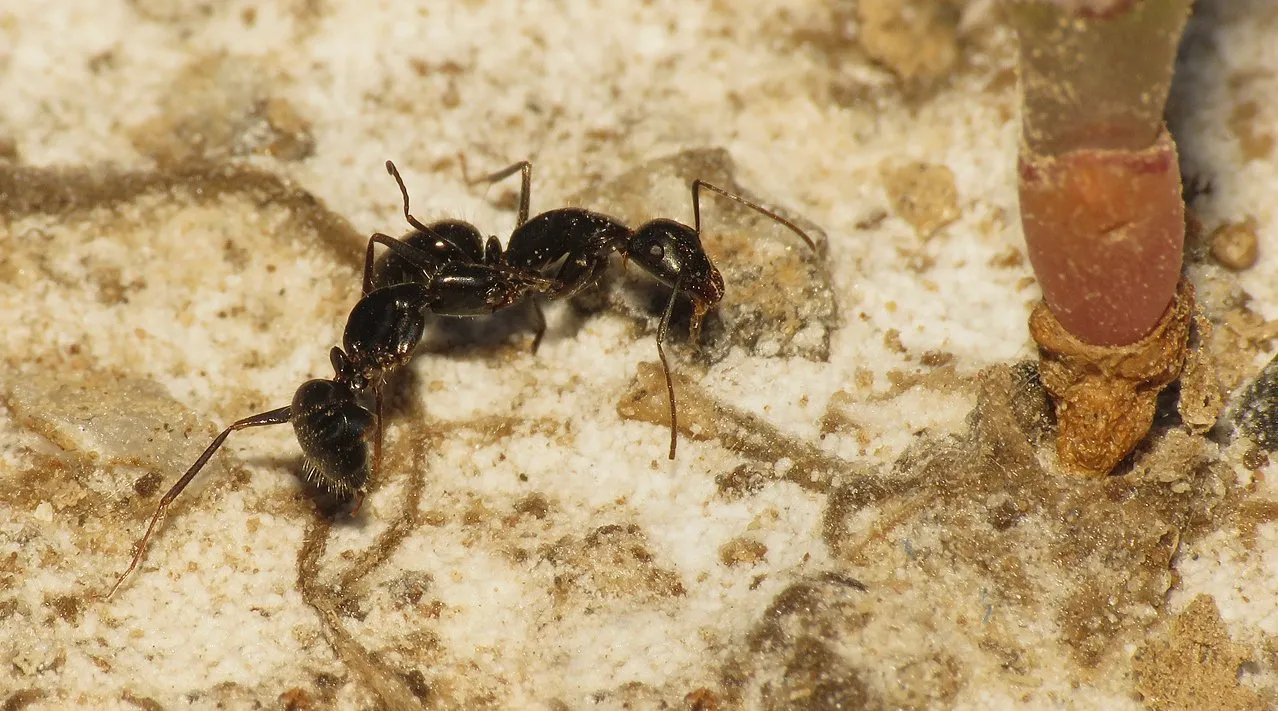
Many ants were alive and active on that evening. Some were fighting.
Some were just running across the barren land ... alone ...
... or in groups.
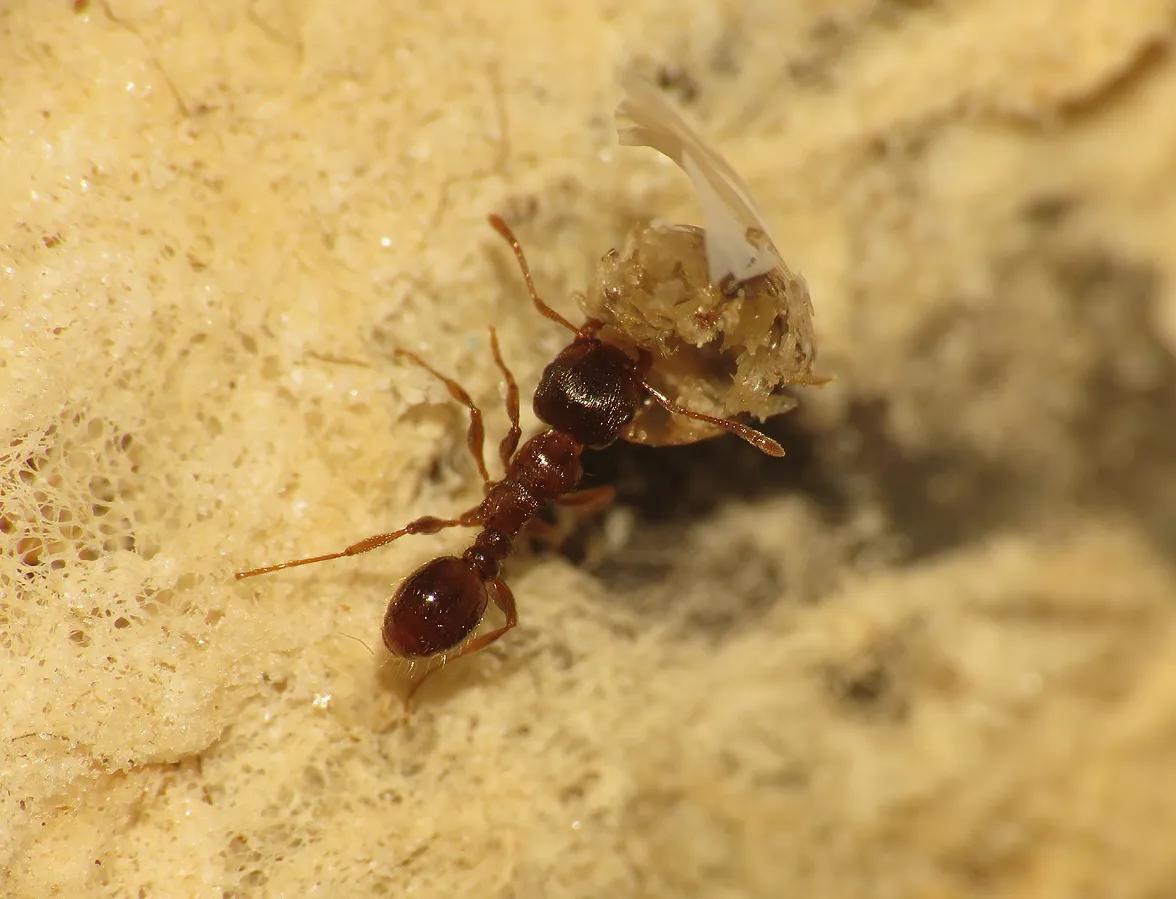
This one was transporting something edible. Probably a piece of some dead crustacean.
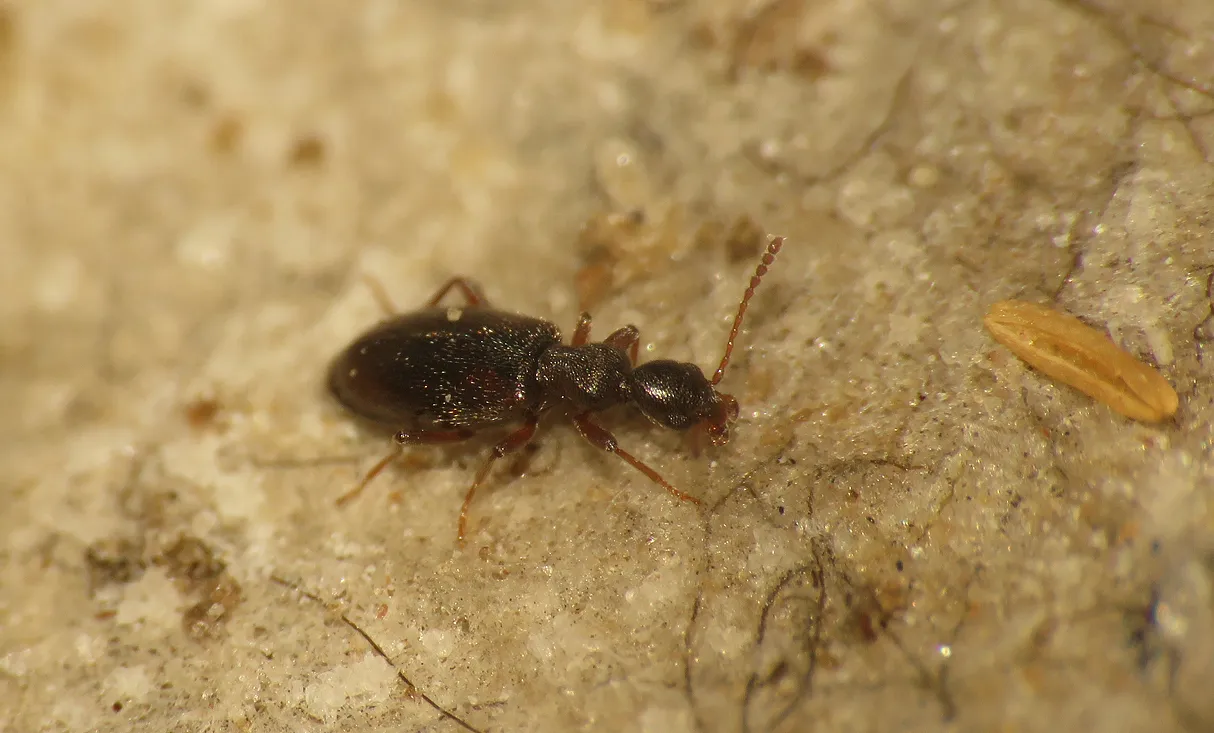
Here you can see a minuscule beetle that looks a bit like some kind of ant. This is some species from the Scydmaenidae family ...
... a family commonly known as Ant-like stone beetles. They live in humid habitats, in the soil under the stones, in and under the rotting wood, in the leaf litter or like here on the coast, in the layer of still humid mud of the dried out coastal pool. On this series of six shots, the beetle was photographed while resting on the rhizome of the reed that grows at the edge of the pool.
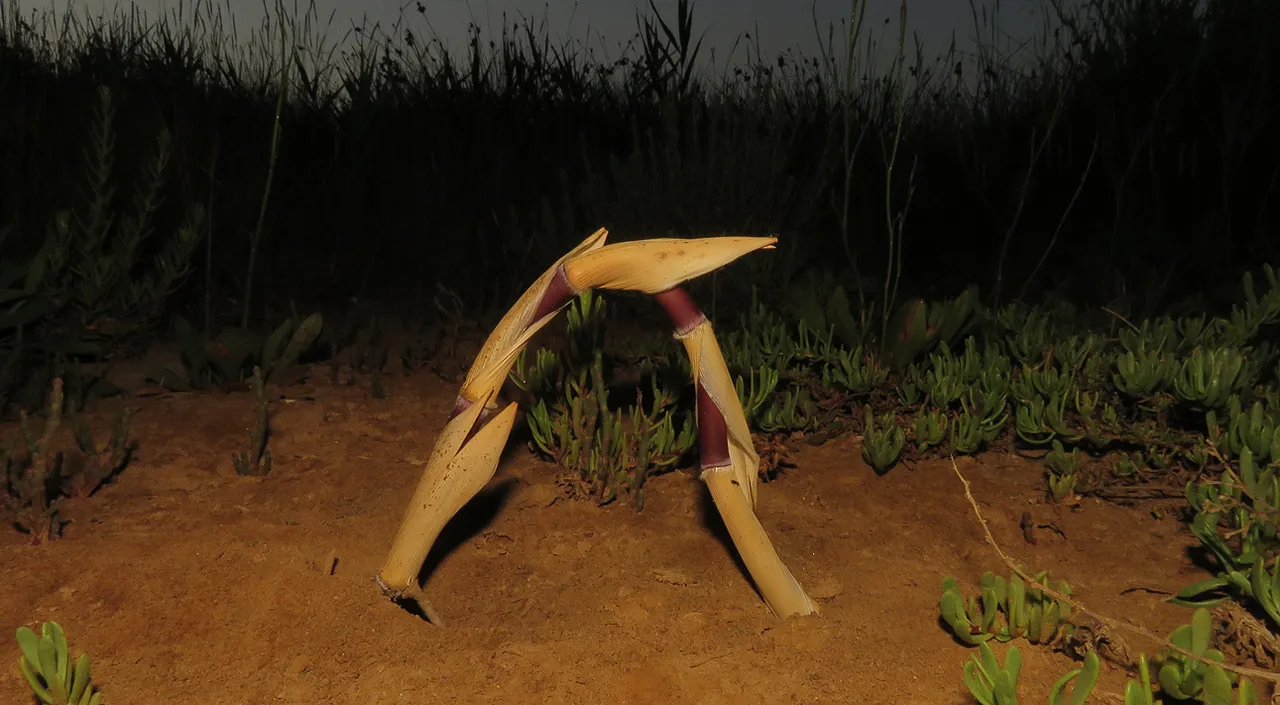
Here you can take a wider look at the scene. The interesting rhizome came out of the ground, formed an arch, and continued expanding into the soil again.

Some days later, during the day ...

... I continued exploring the vegetation around the pool. Here you can see the Sporobolus maritimus, a type of grass that grows on soft mud in the salt marshes and other coastal areas sheltered from the big waves.

On this photograph you can take a look at the small fluffy flowers ...
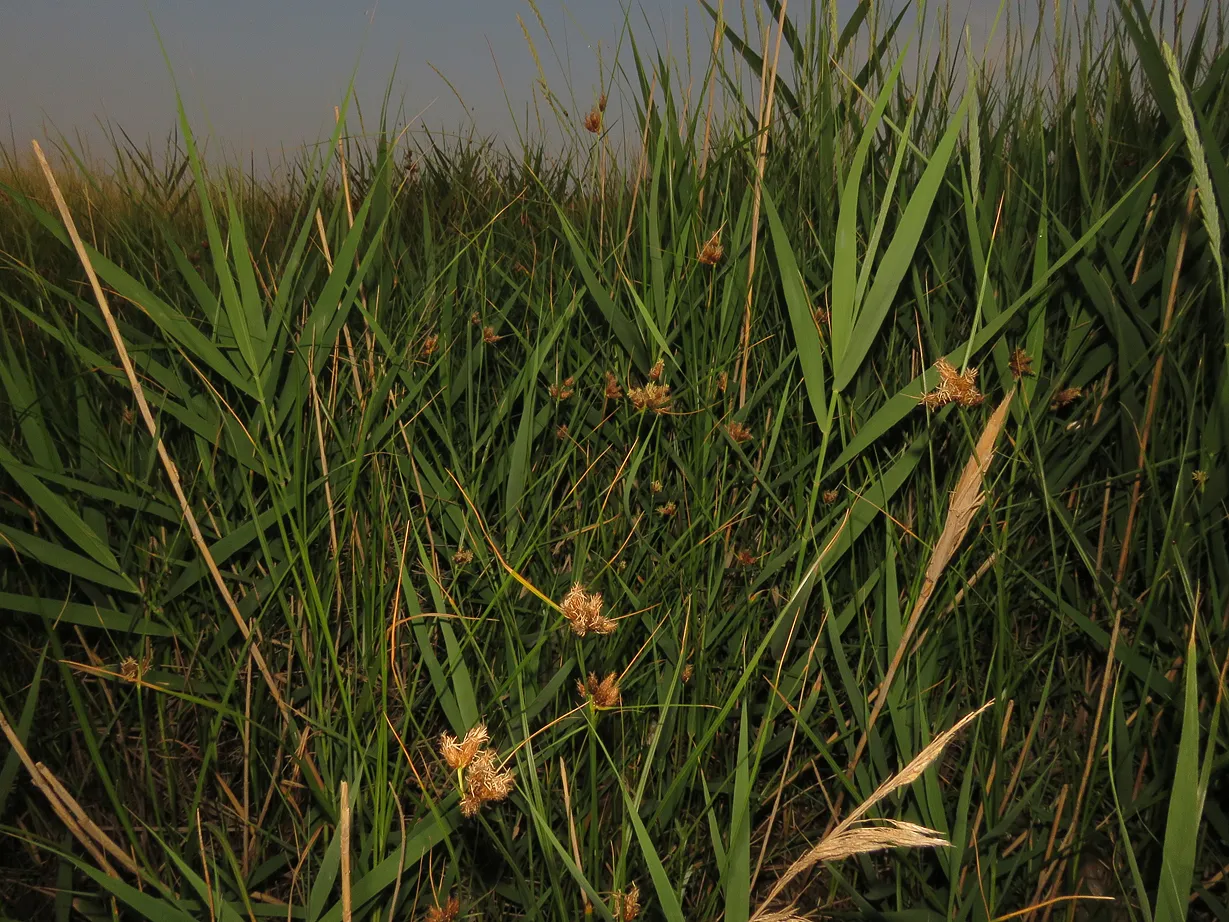
... of the Bolboschoenus maritimus plant.
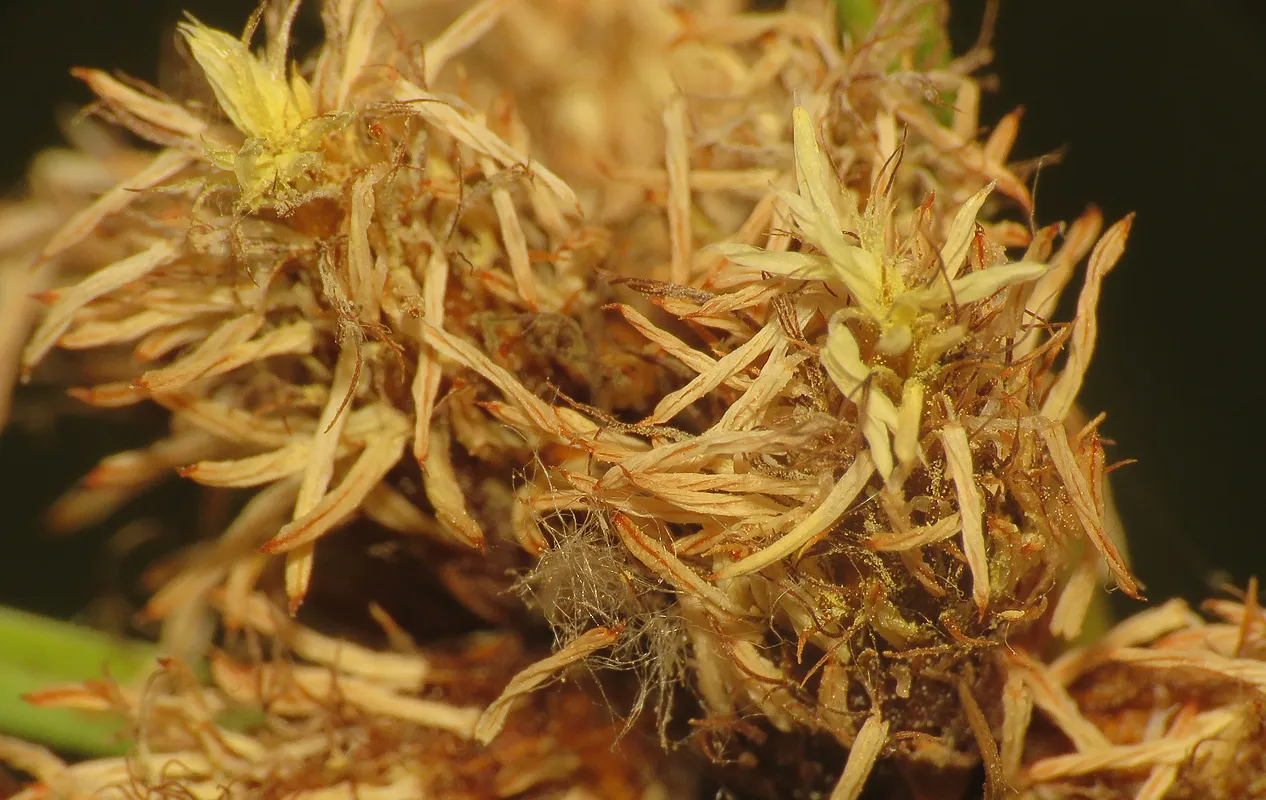
This sedge is another typical plant of the salty seaside habitats.
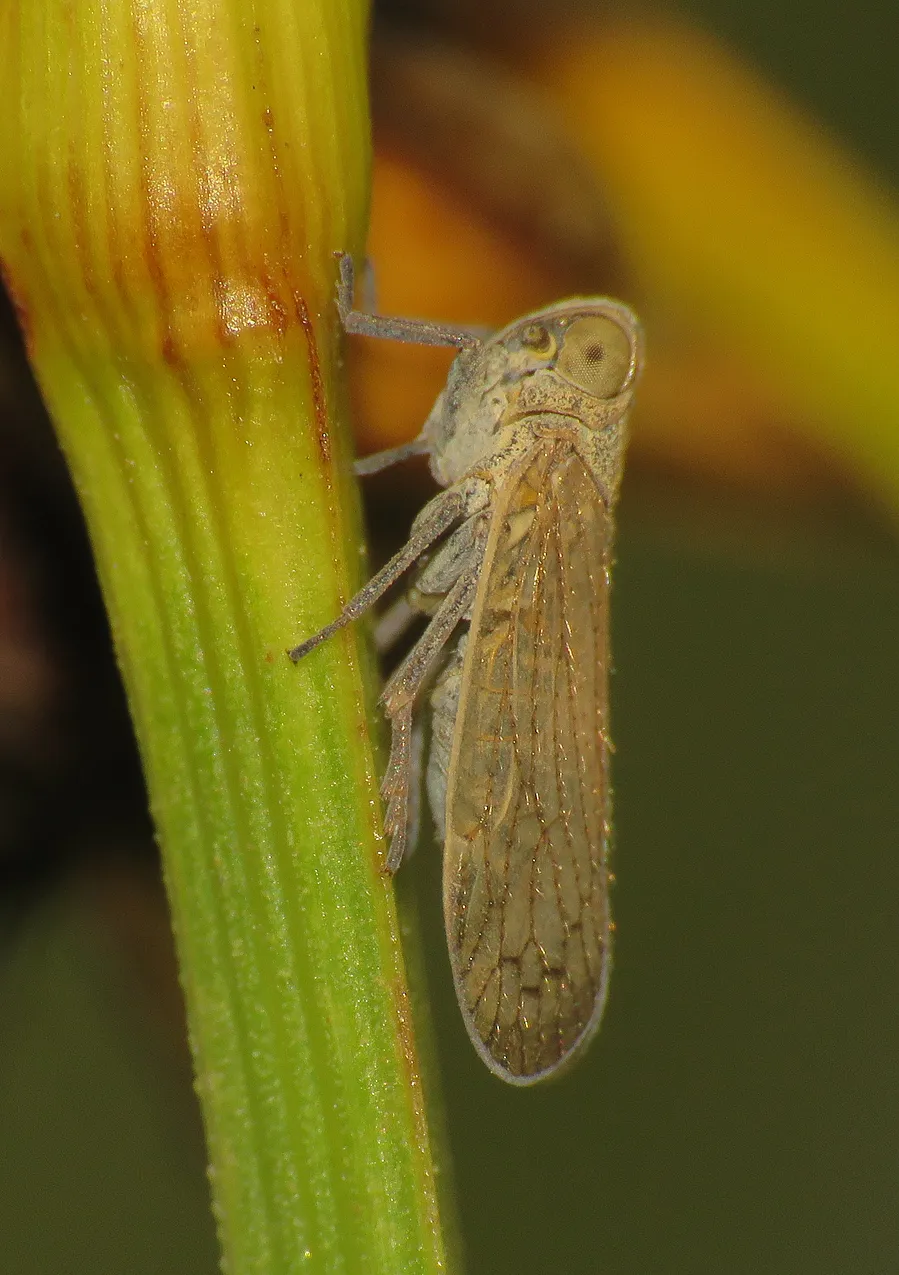
This lacehopper, Cixiidae family, don't know the exact species ...
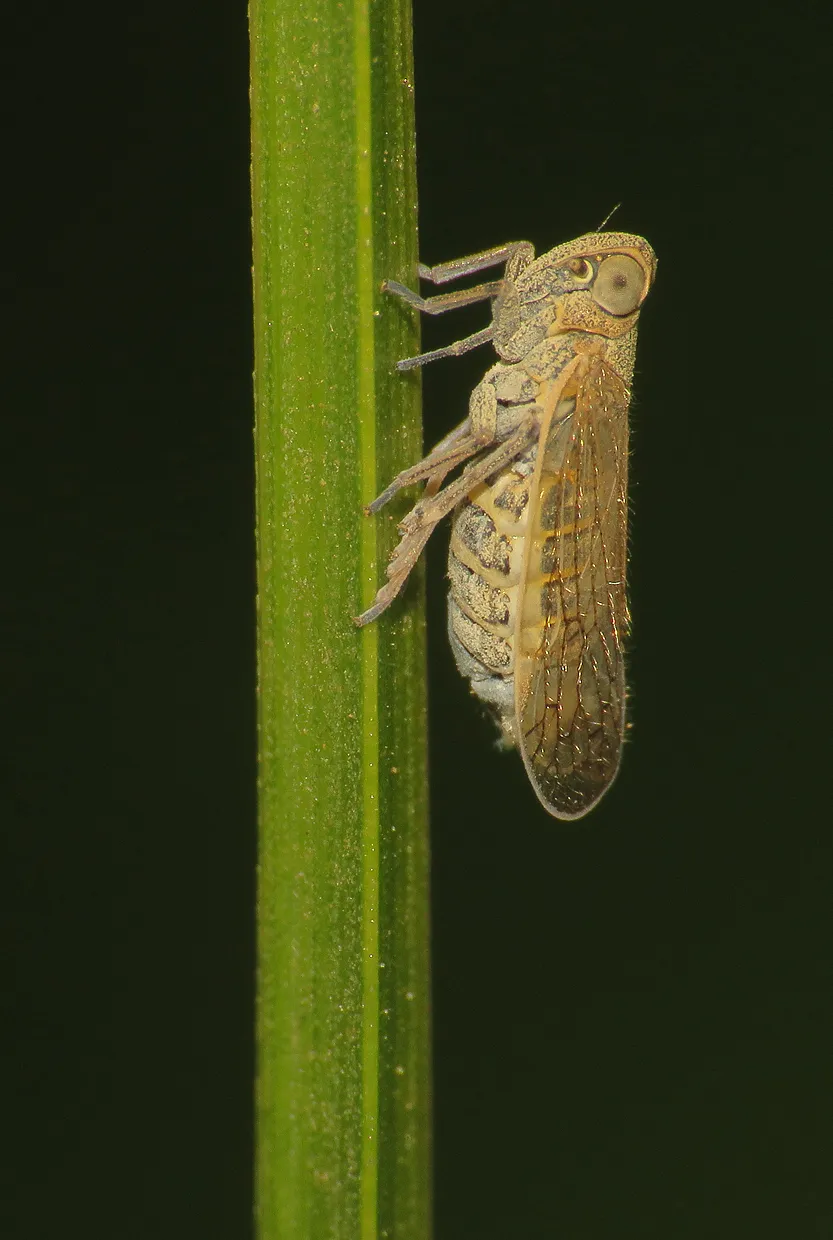
... was photographed on the same plant.
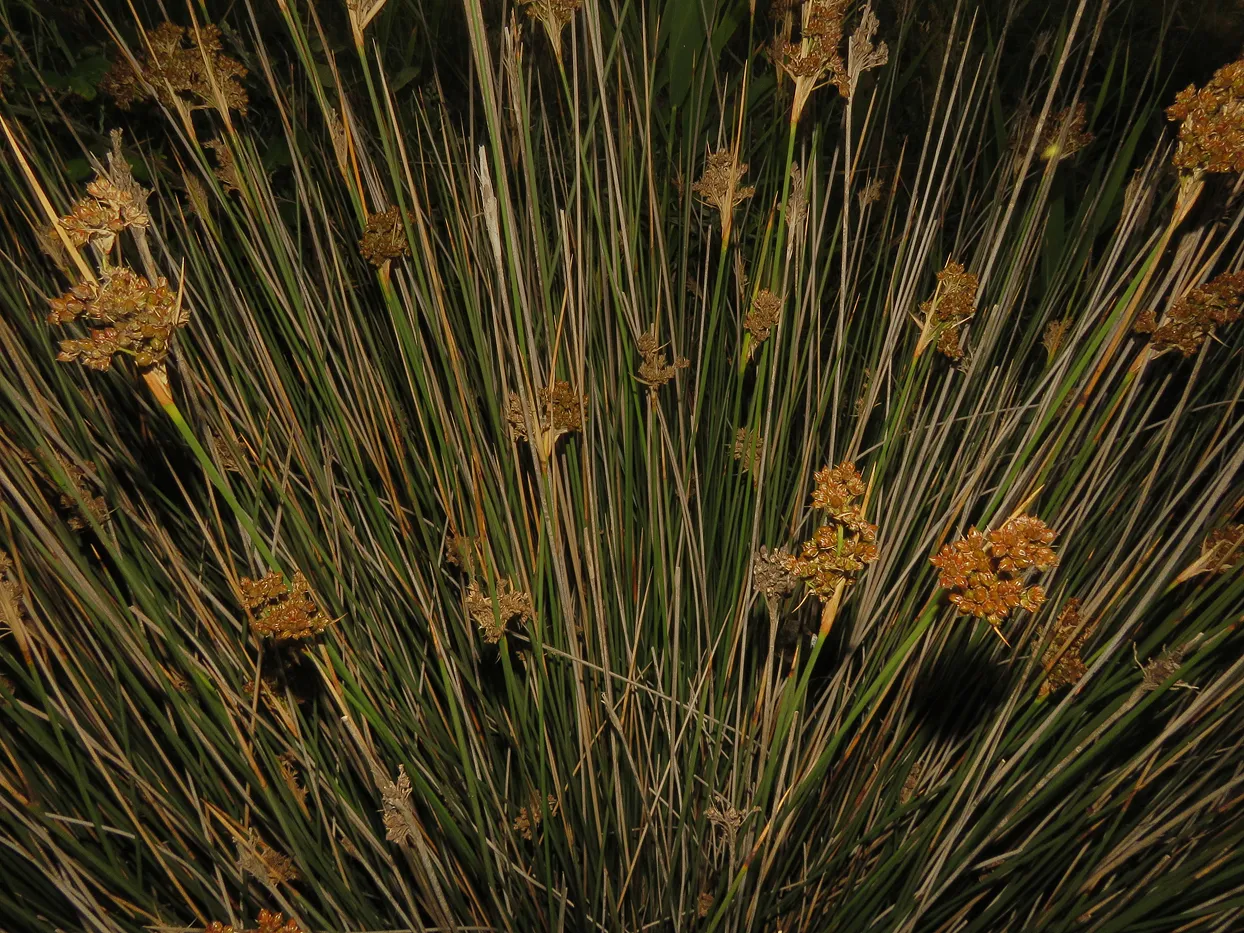
This is the Juncus acutus, commonly known as the spiny rush, another coastal plant typical for this area. It looks a bit like some kind of green porcupine, with the head buried in the mud.
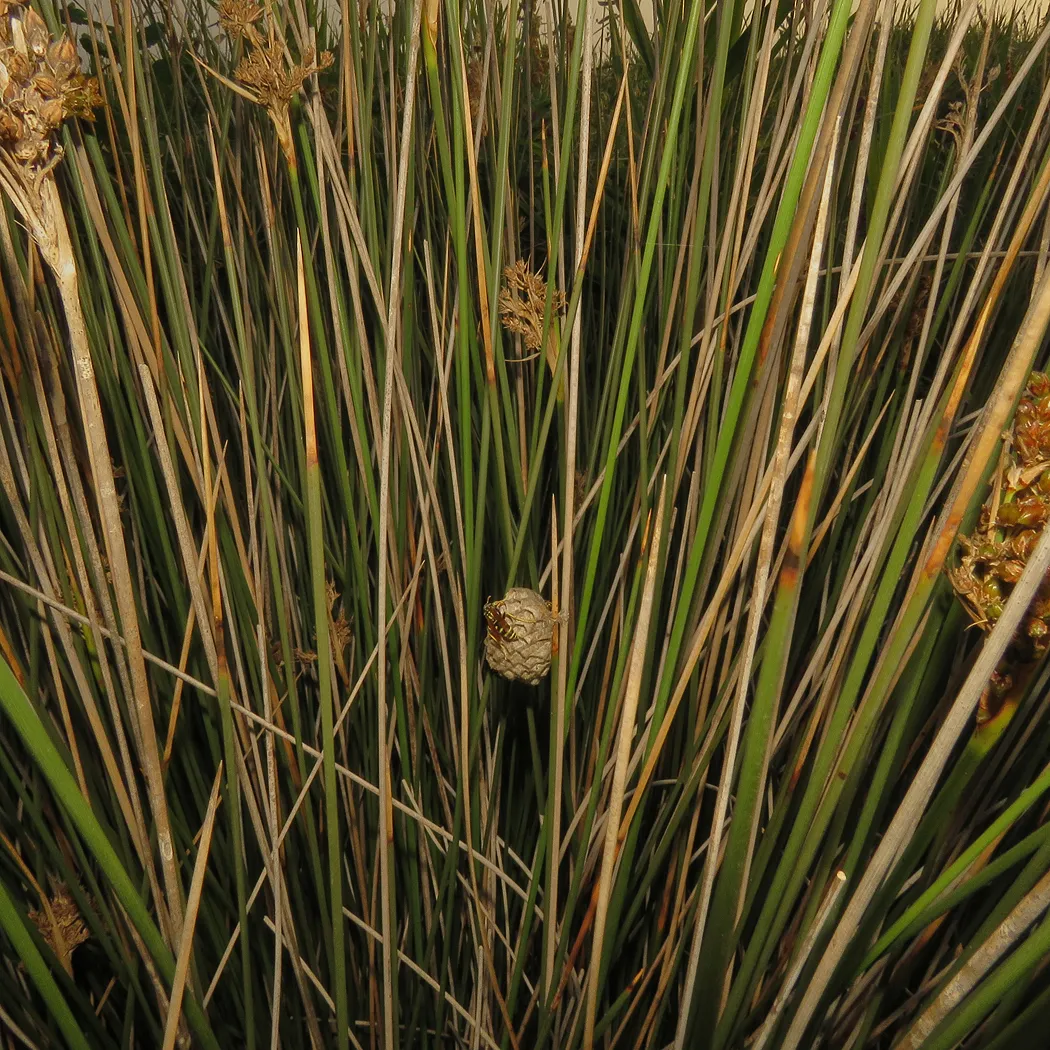
While walking through the dense growth of this spiky plant ...
... I came across the nest of the Polistes gallicus paper wasps.
The nest was well hidden and protected with long spears from any threat that could come from above.
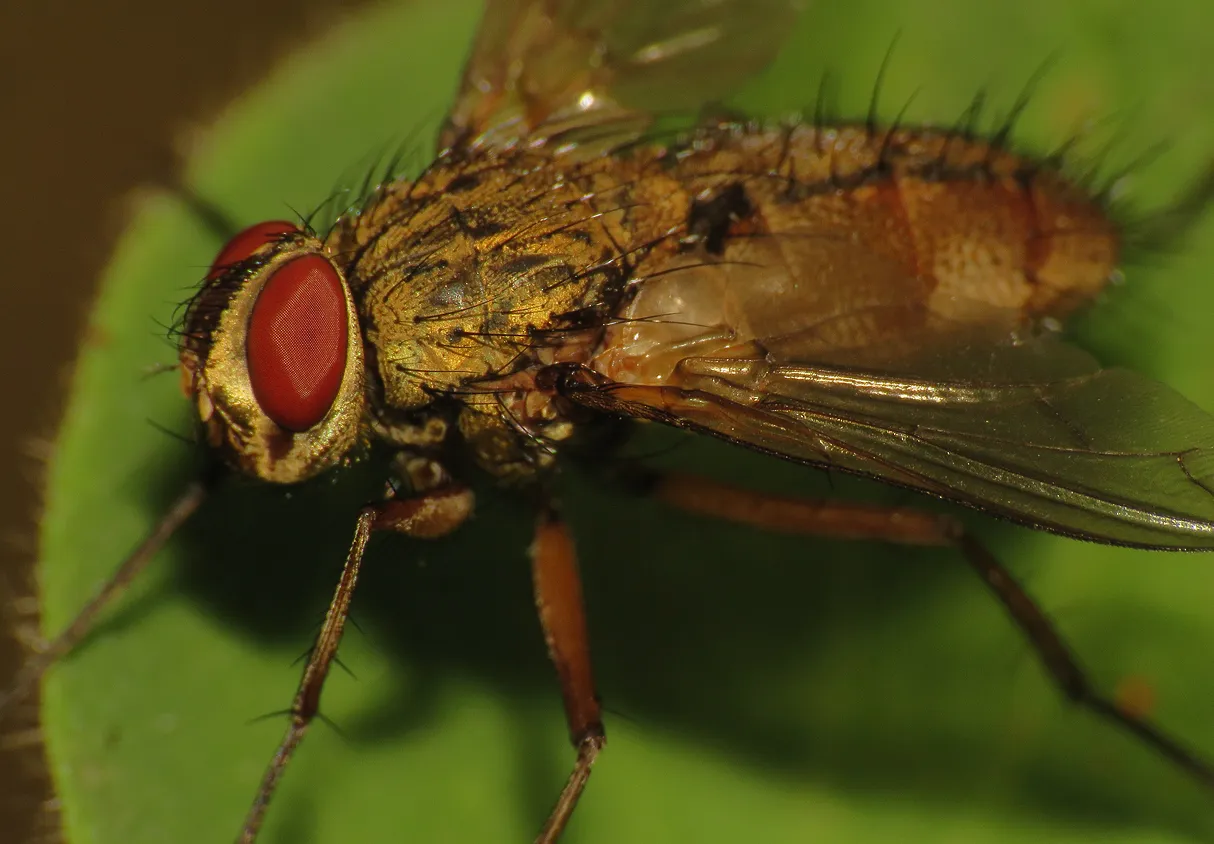
This pretty big fly from the Tachinidae family ...
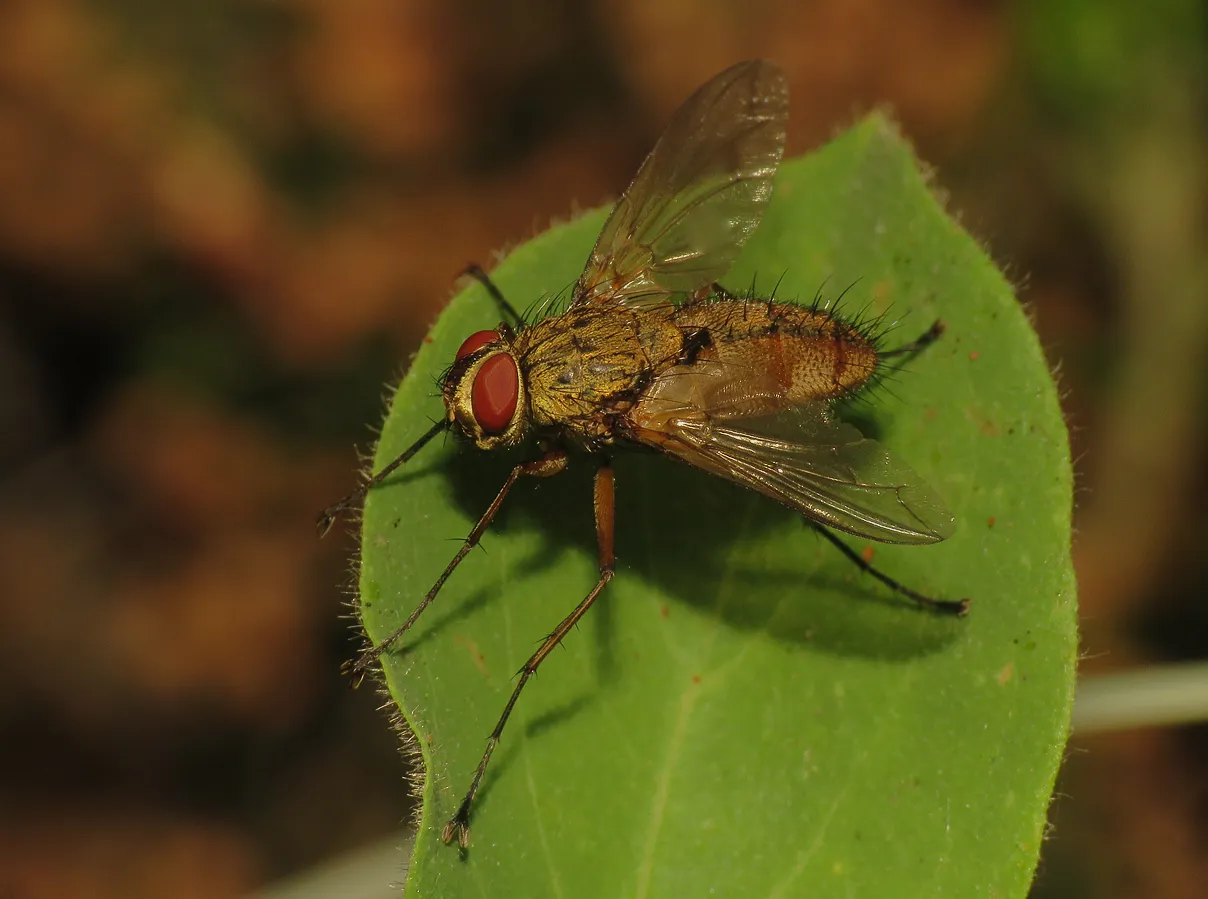
... was resting on the leaf of some climbing plant that was growing around the reeds.
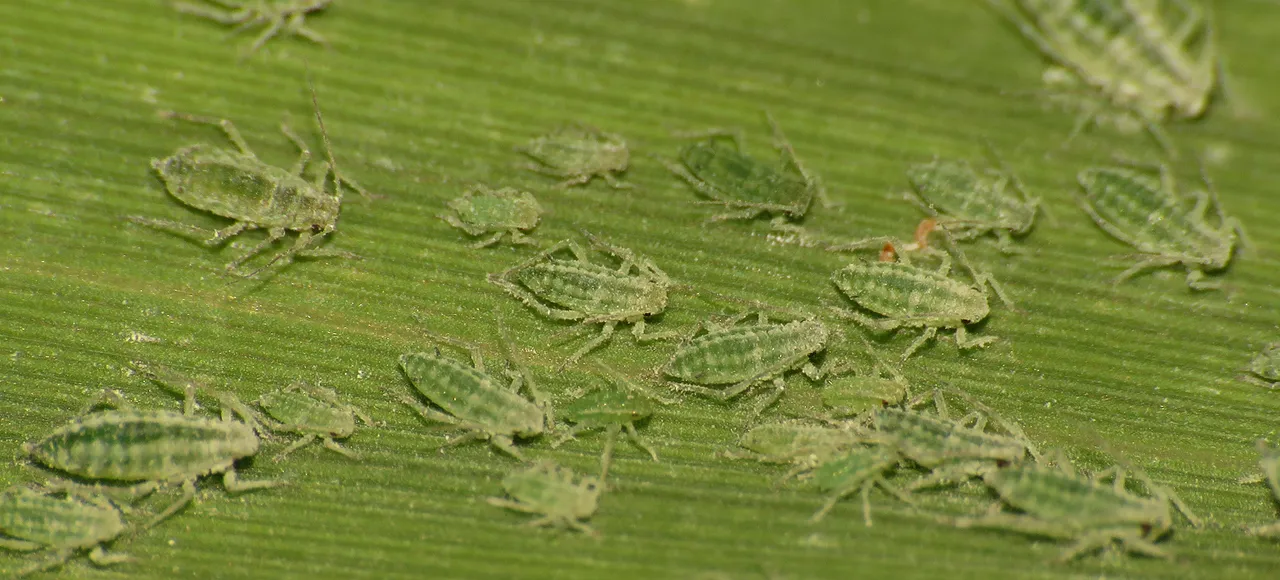
These aphids ...
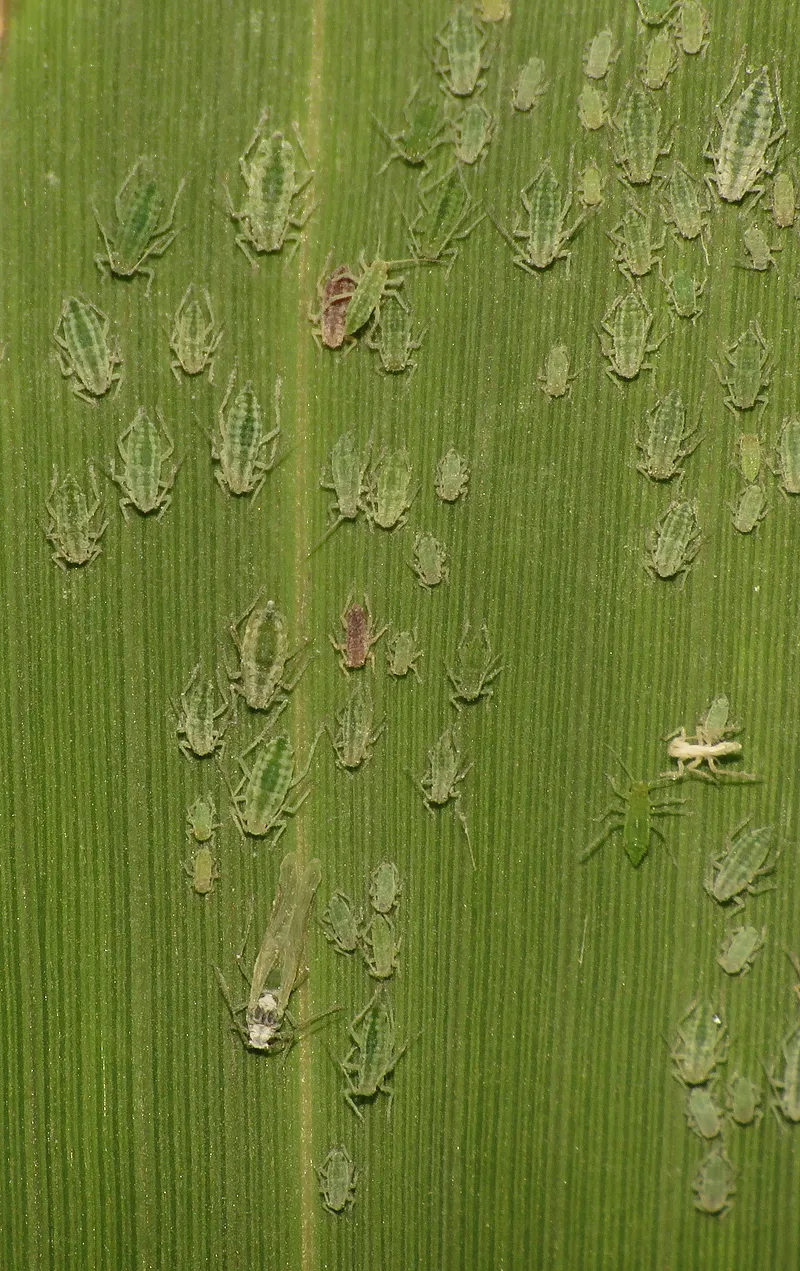
... the Hyalopterus pruni, commonly known as the mealy plum aphids, members of the species that feeds and reproduces on Prunus plants, wild and cultivated like plum, peach and almond, but also on some species of reed and various grasses ...
... were photographed on the large leaf of the Phragmites australis, commonly known as the common reed.
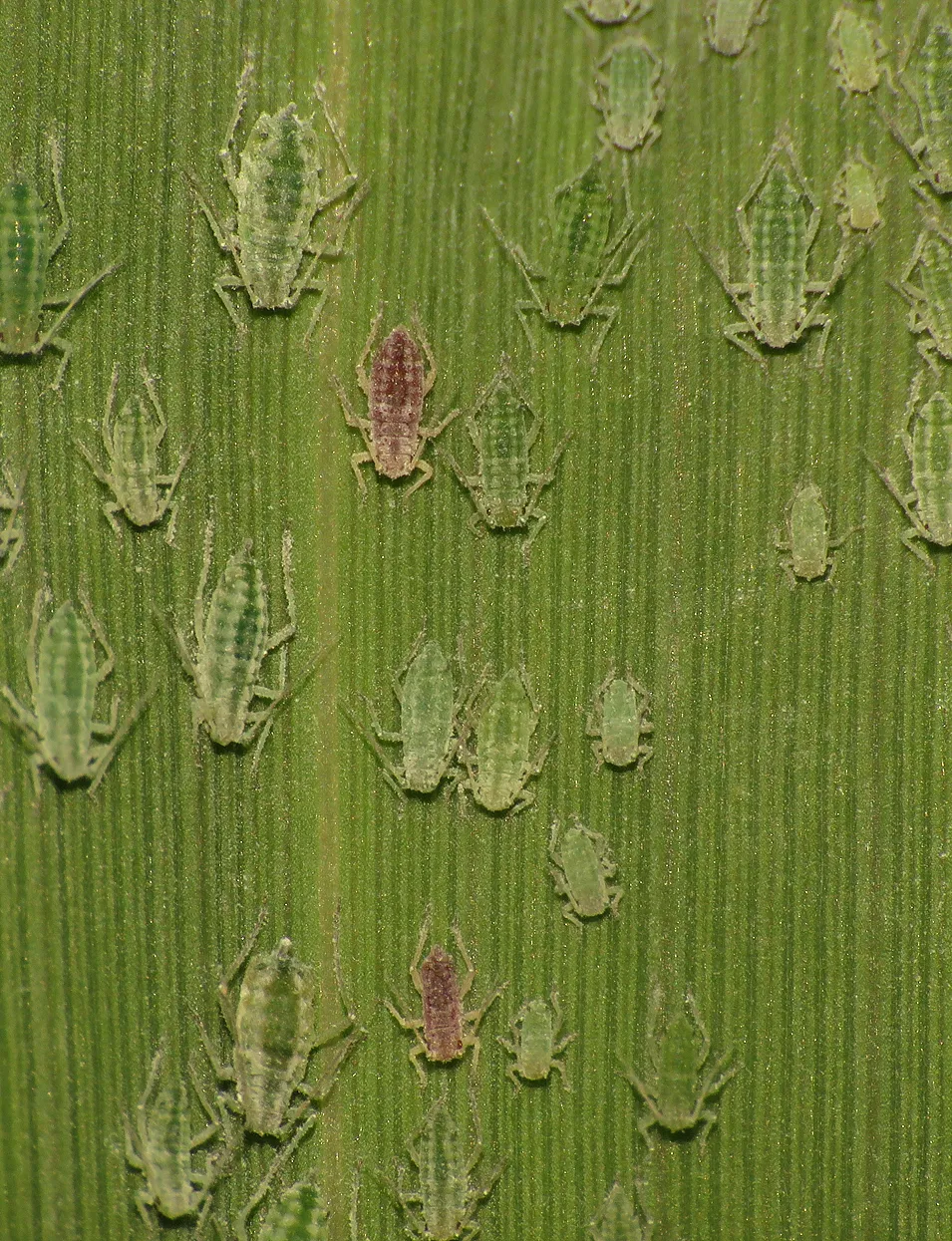
The majority of aphids were green, only a couple of them were kind of red - violet, and that looked pretty stylish on the photographs.
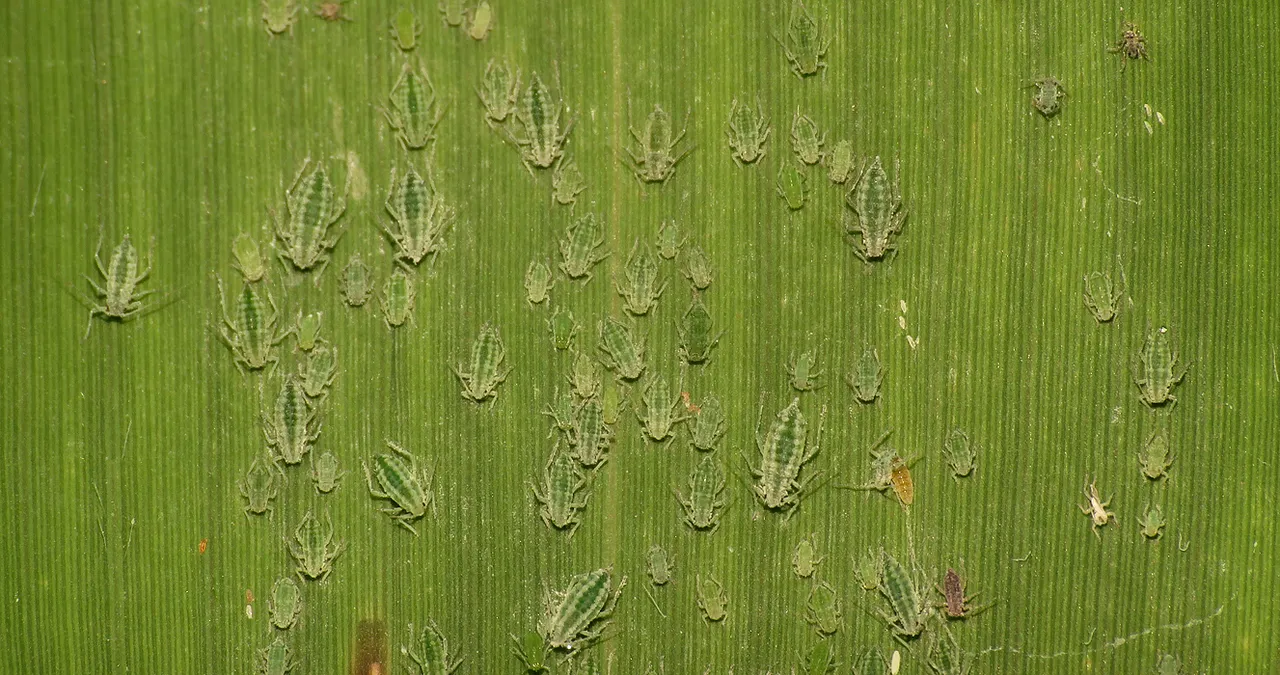
I noticed only one leaf infested with aphids.
![]()
Behind the aforementioned plants that grow in the narrow belt around the pool, the terrain is covered with vast meadows with many interesting species.

The wind brought from there this parachute seed of the Urospermum dalechampii plant.

Maybe the wind will move it again, so the seed will end up on more promising soil.
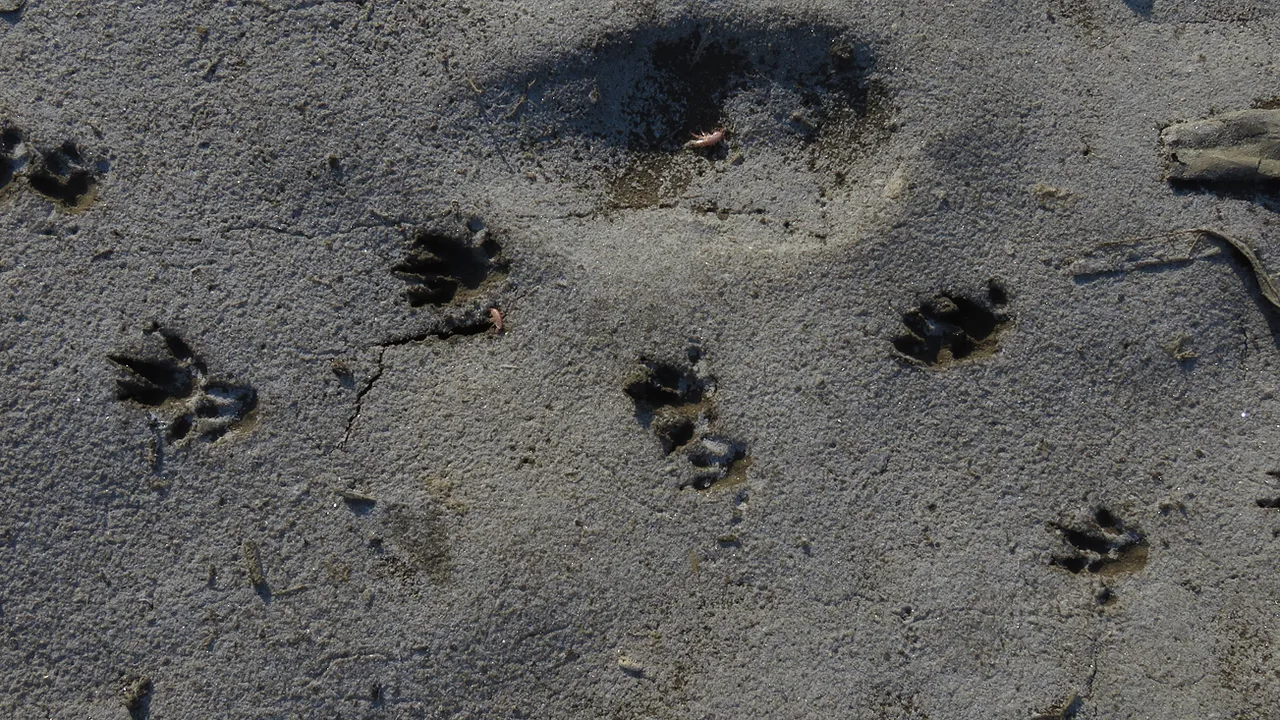
According to many tracks found in the mud ...
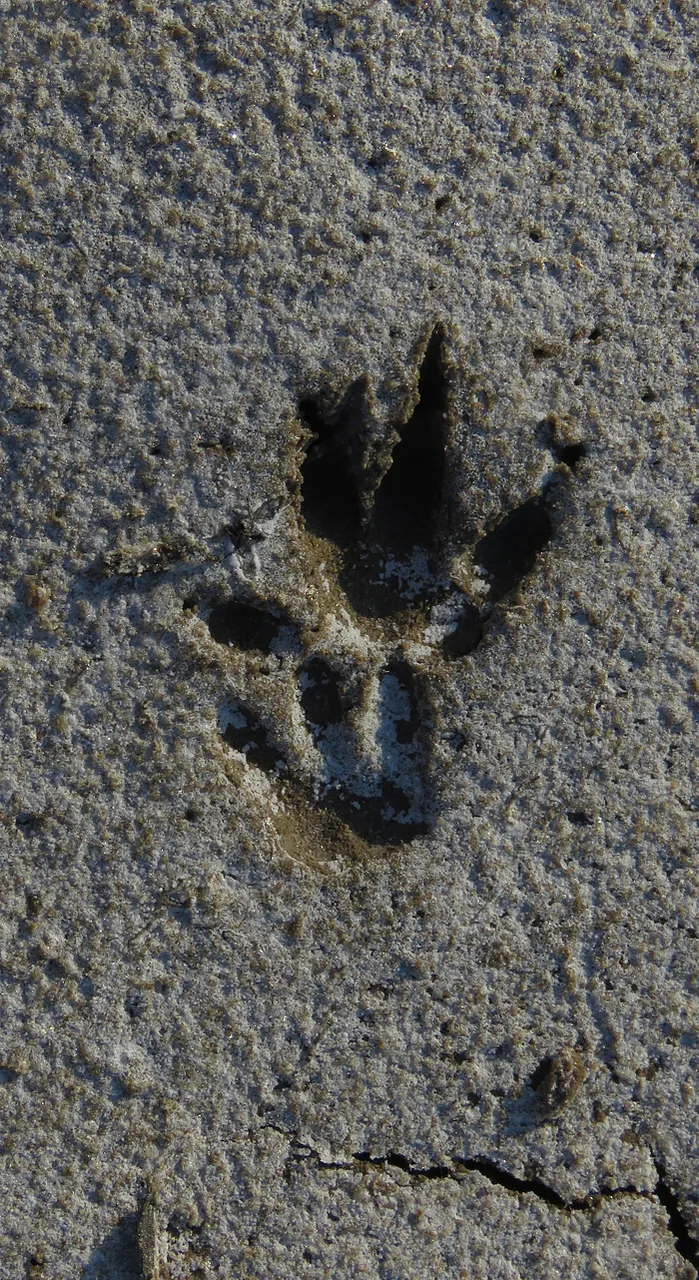
... some mammals also visit the place from time to time ...

... I can't tell you much about these tracks ... well, practically nothing, to be honest. They look cool, that's all I know ...
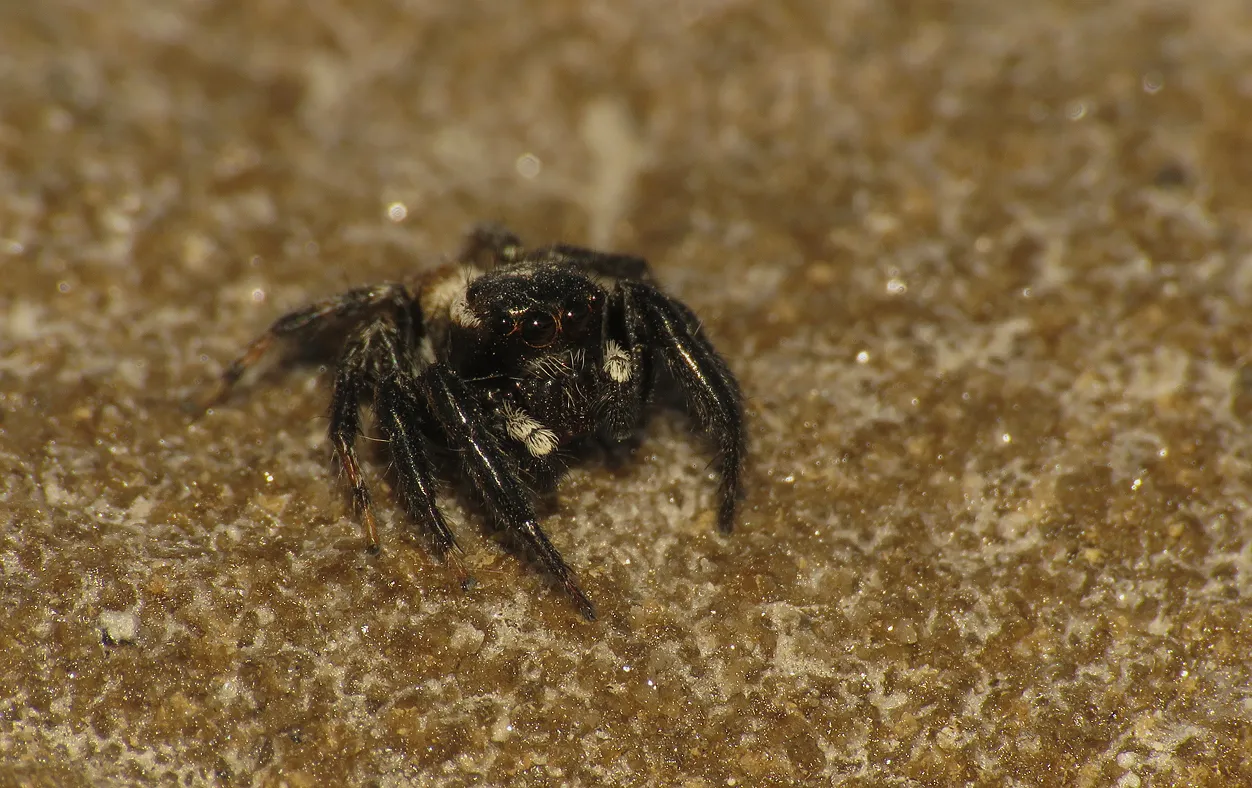
... so maybe it's better to go back to the insects, spiders and similar stuff.
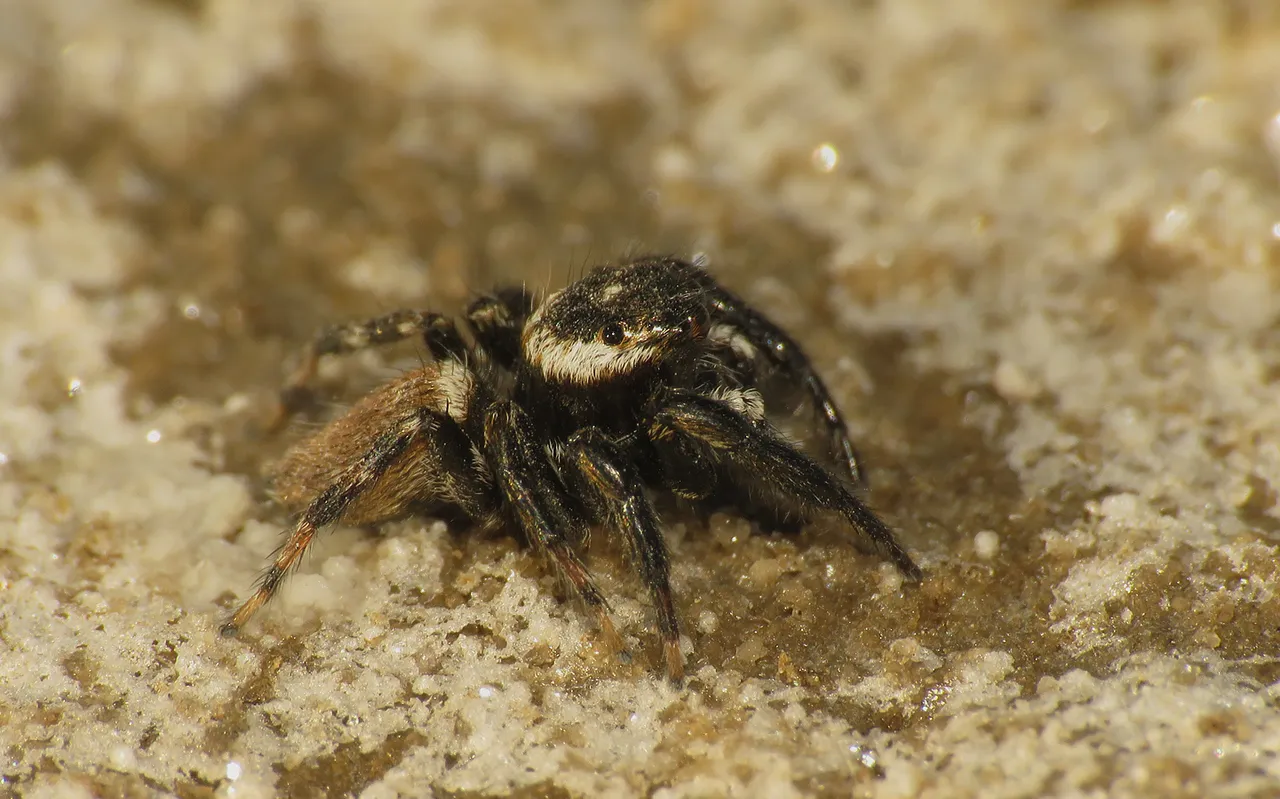
This is the Carrhotus xanthogramma ...

... a jumping spider that can be often found on the barren and stony terrains near the sea.
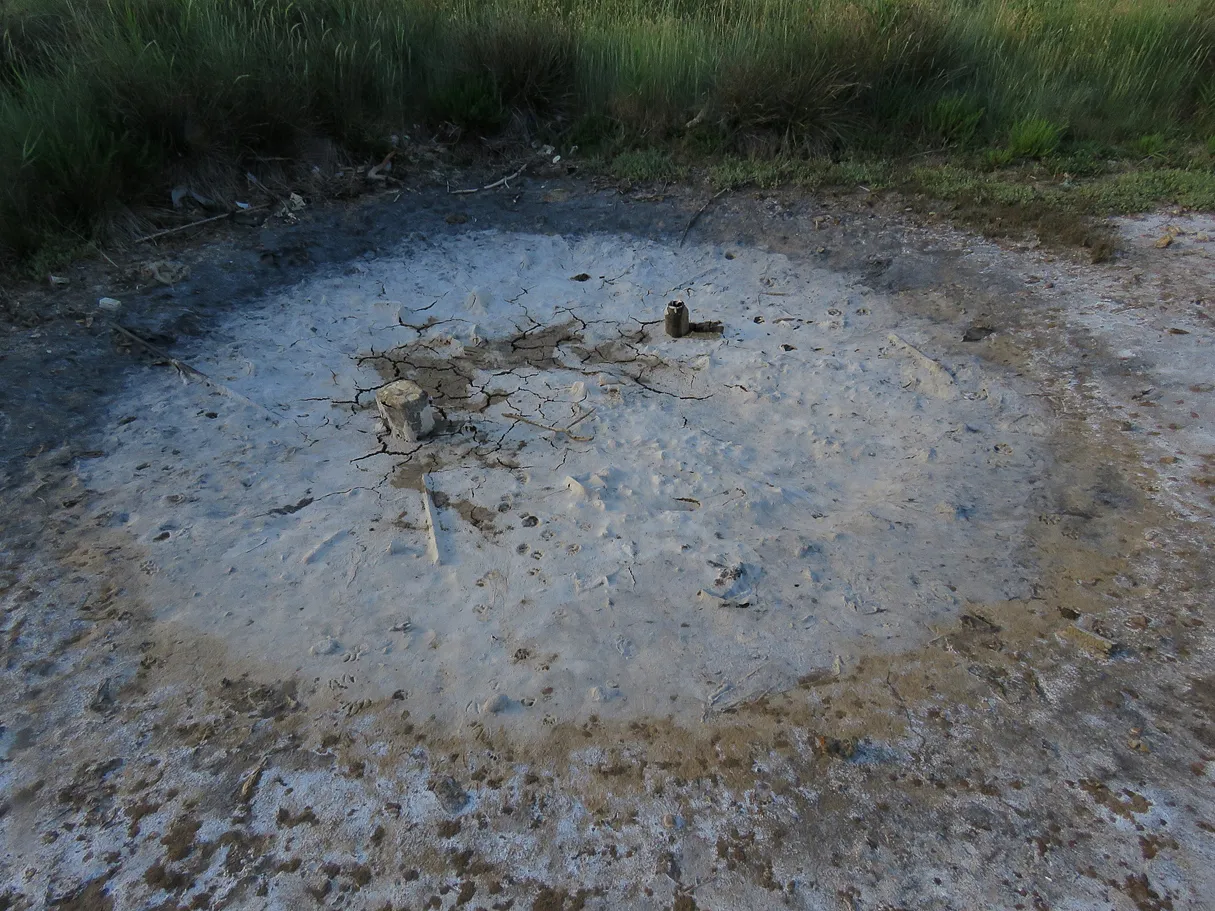
The spider was jumping around the area that looks like some kind of magic circle ...
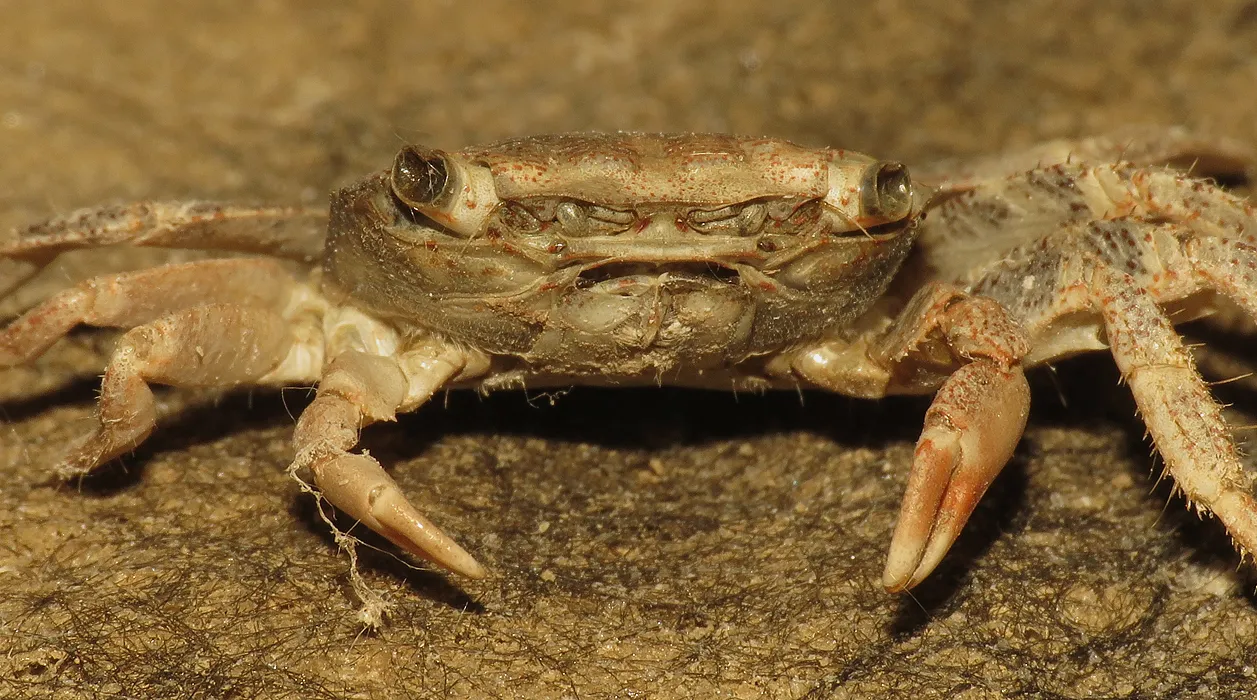
.... with many mummified marine crustacean in it ...
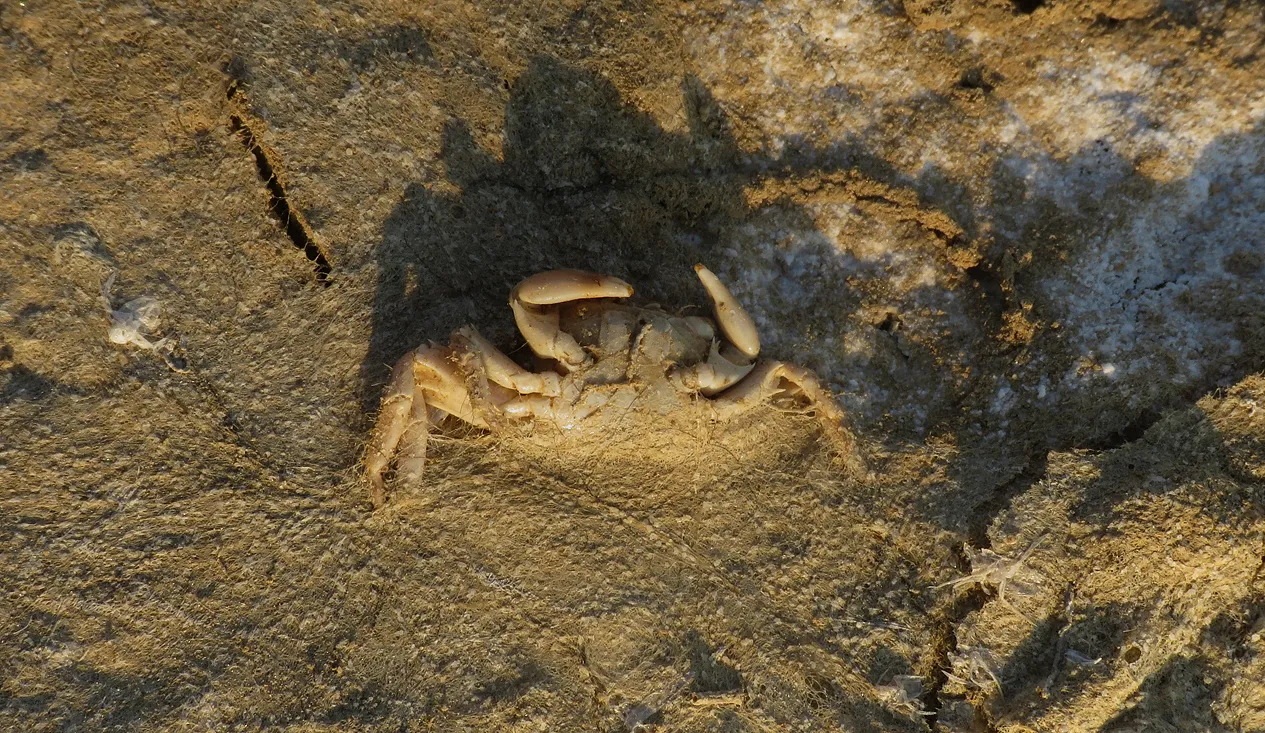
... you can see the empty exoskeletons of Pachygrapsus marmoratus crabs ...
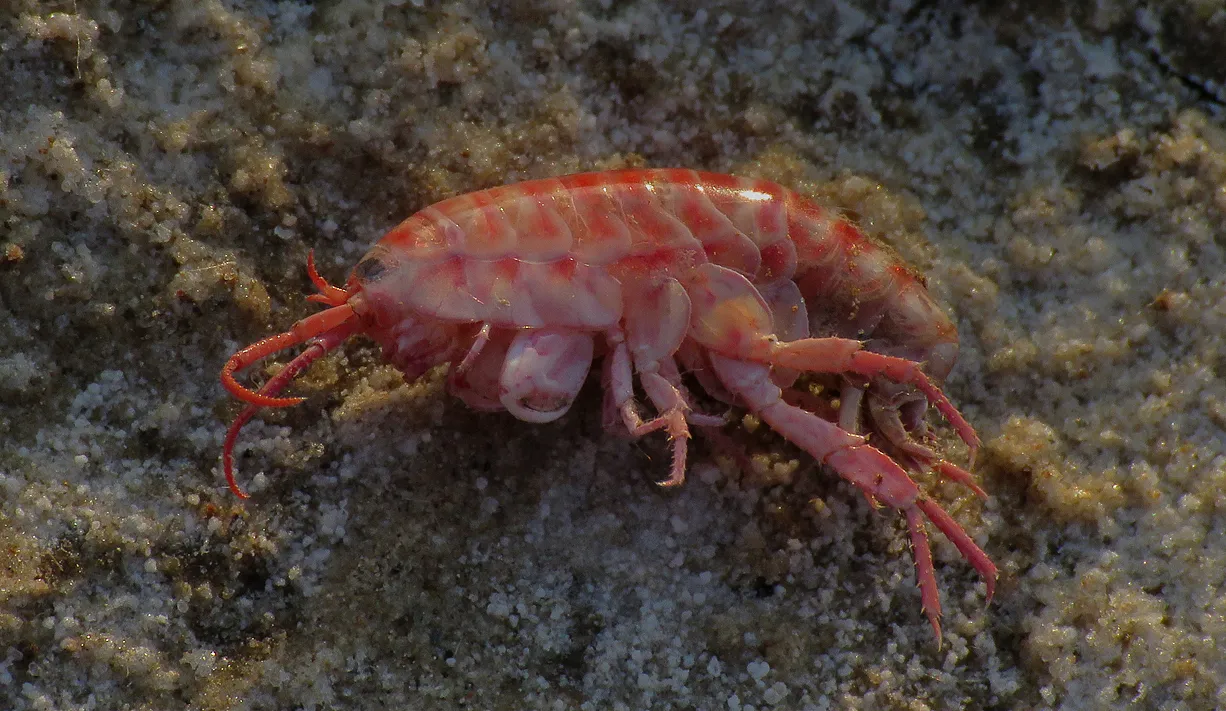
... and various amphipods ...
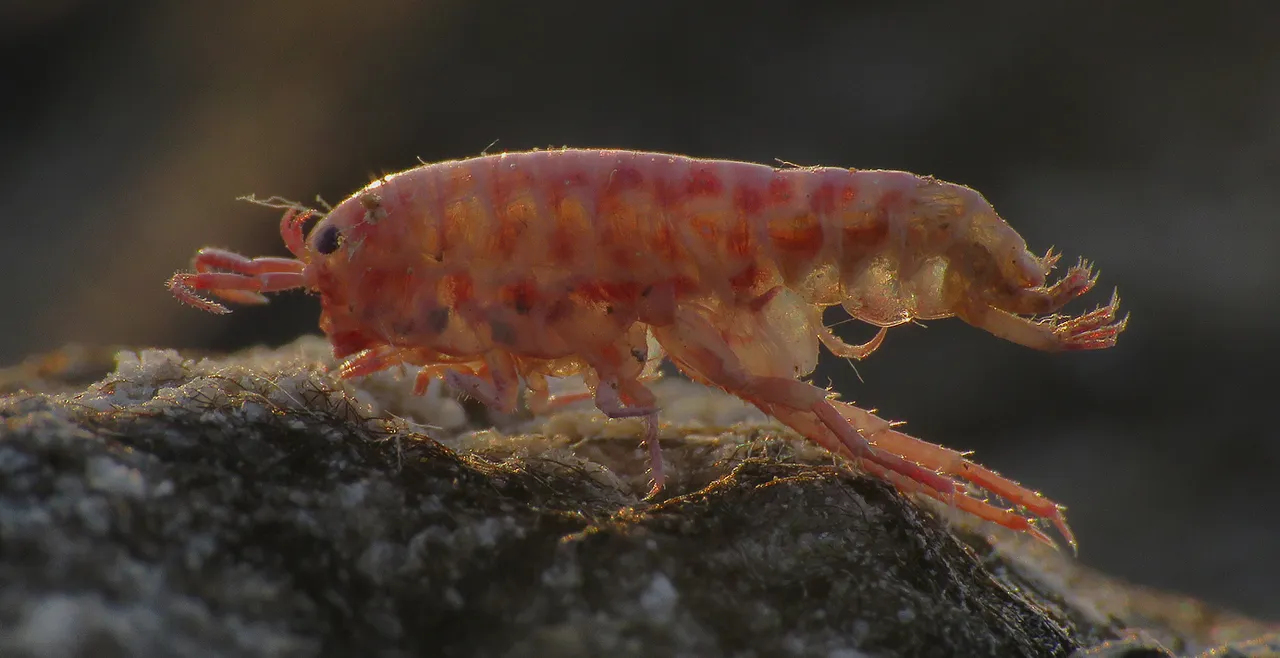
... some are red or pink ...
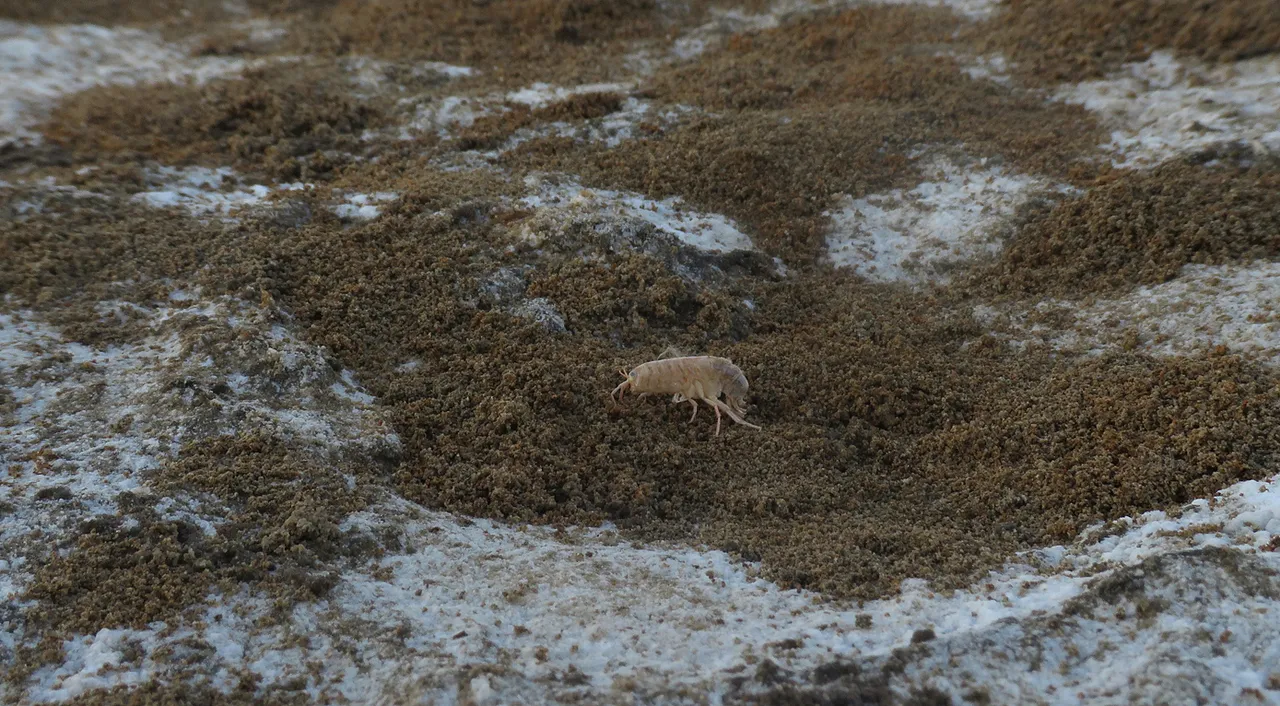
... other very pale, washed out ...
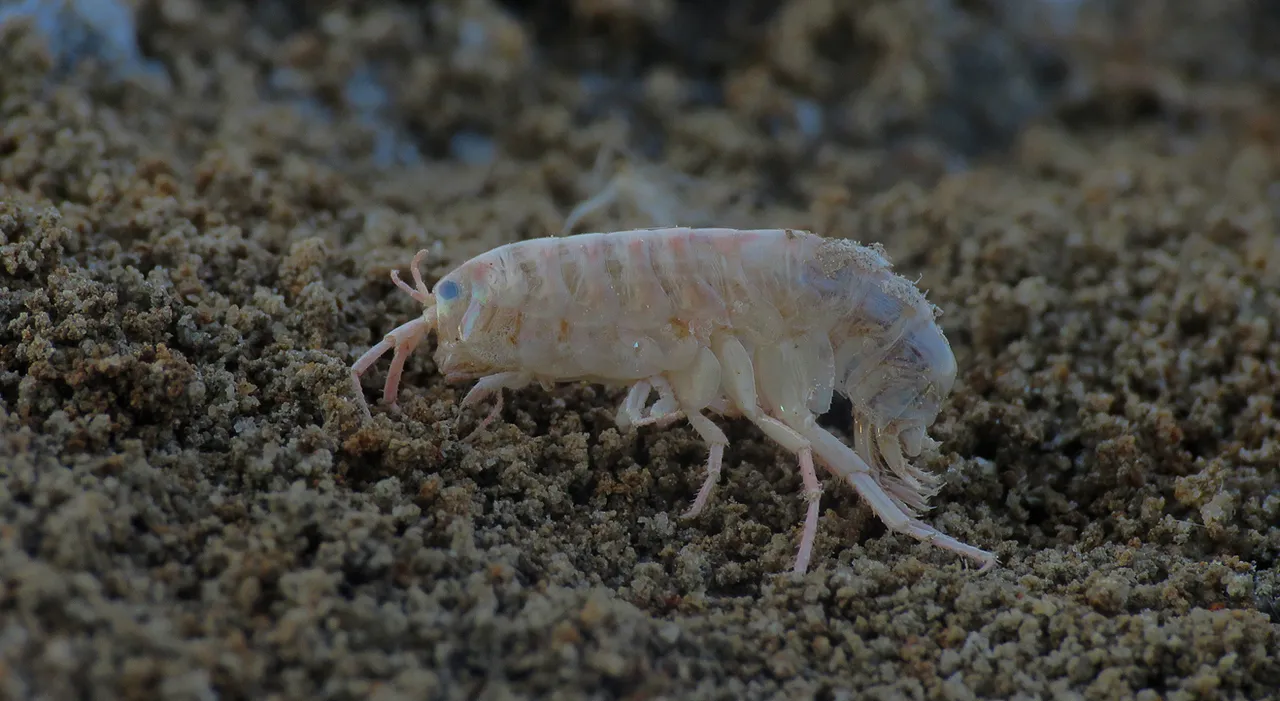
... almost white ...
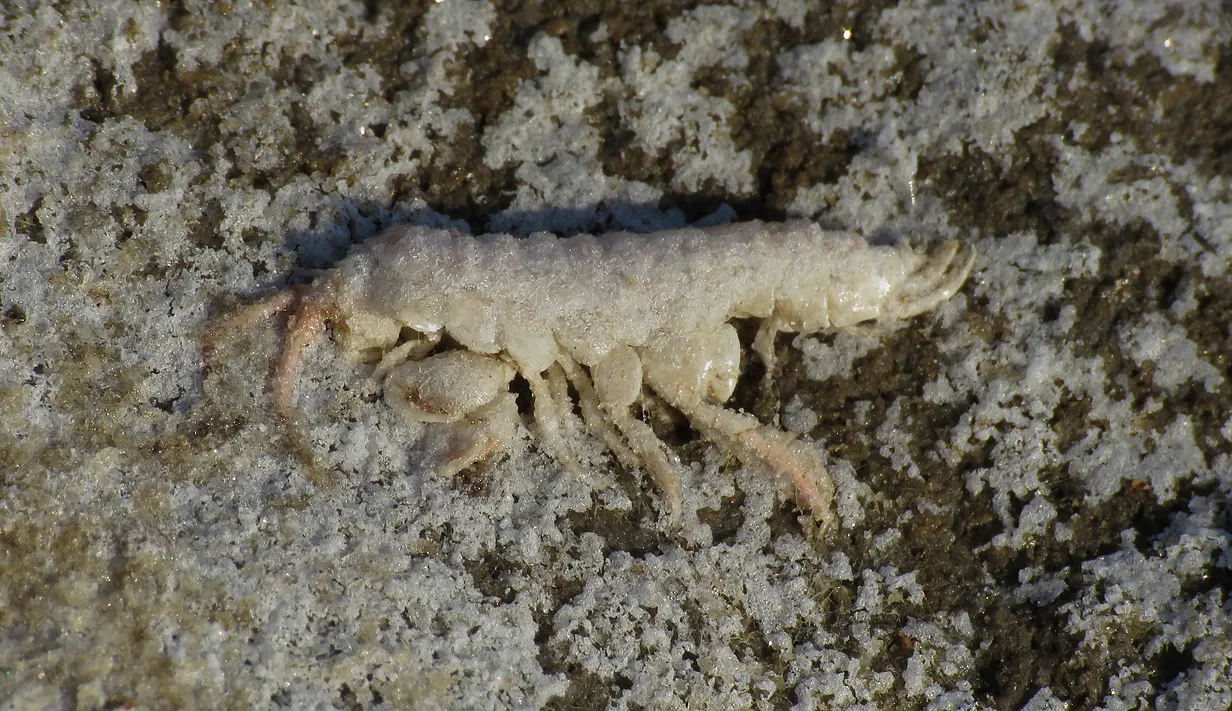
... sometimes covered with salty crust.
Here you can see a combination of terrestrial and freshwater corpse. The Galeruca pomonae leaf beetle somehow died in this place. Maybe along the way across the empty pool, or more probably drowned in shallow water some weeks before the final drought ... and ended up laying next to the small nymph of the Corixidae bug, killed by the strong sun and absence of water.
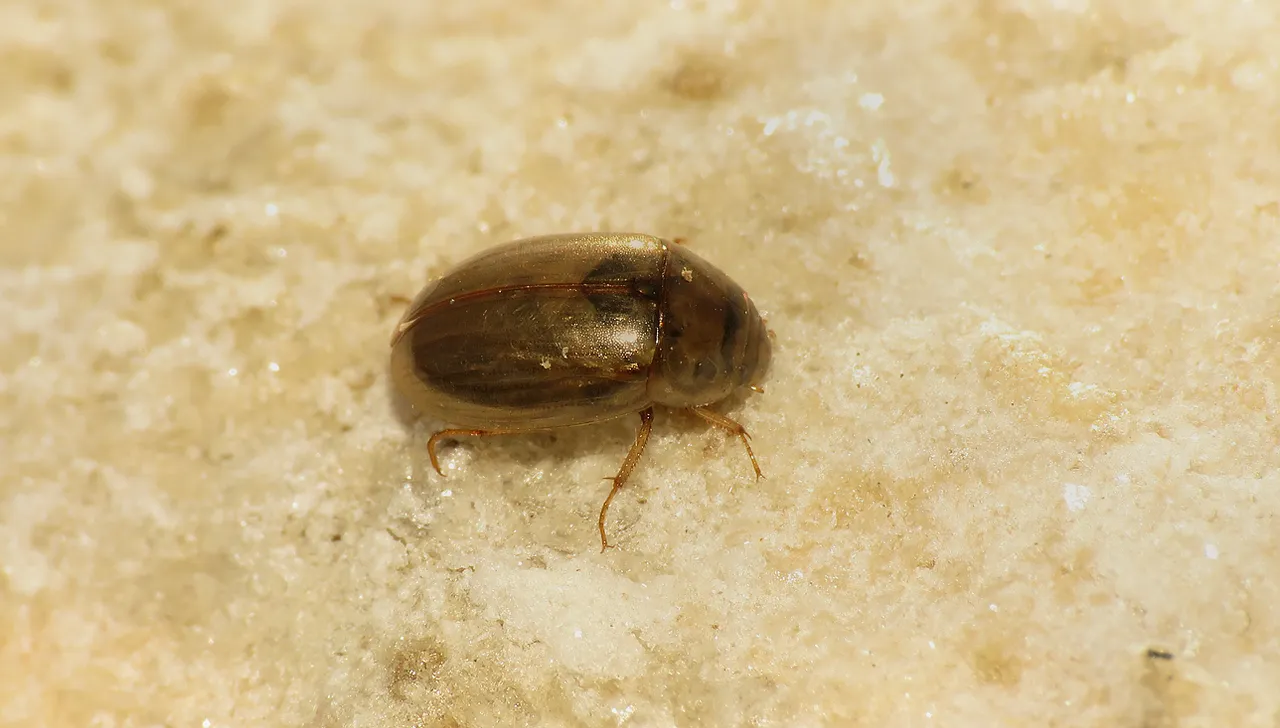
This water scavenger beetle from the Hydrophilidae fmily, maybe Enochrus fuscipennis - maybe some similar semi - aquatic beetle from that family, is still alive. I found it under some garbage, put it on the open, took a few shots ...
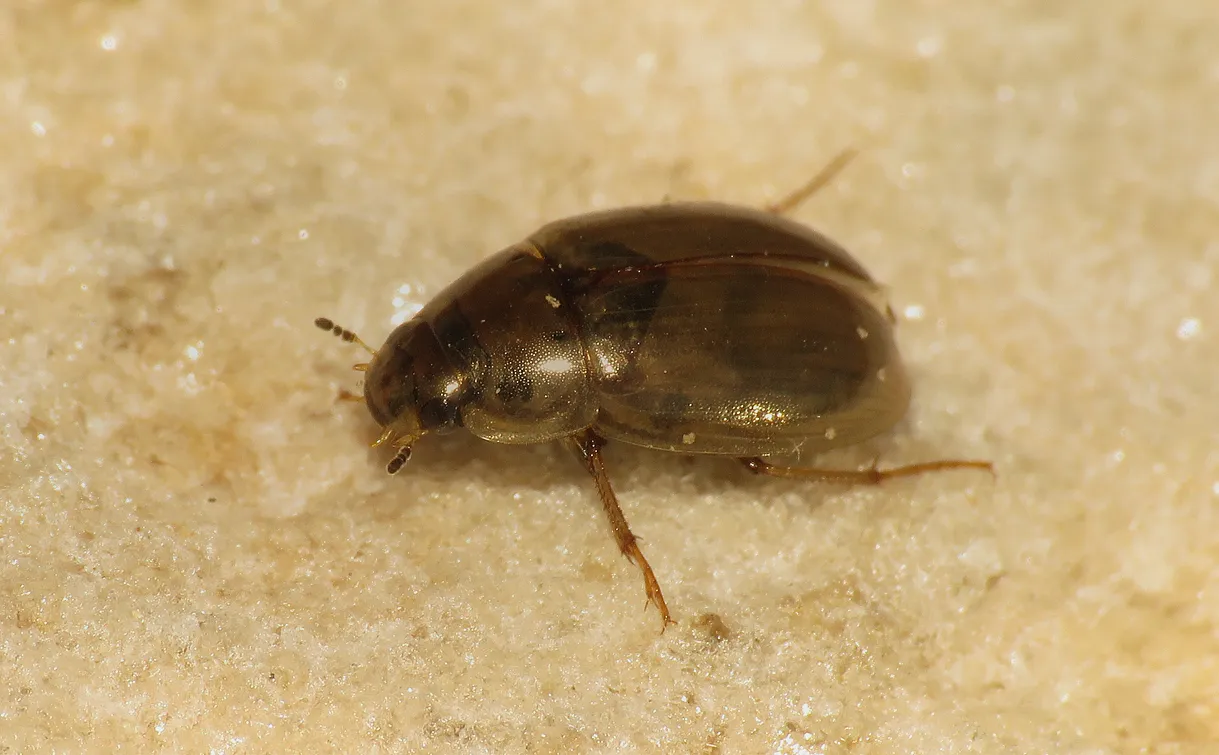
... and then watched the beetle run to another shelter, another unique piece of garbage.
The old garbage covered with layers of dust, salt and dead algae can be pretty photogenic in its own right, so it ended on a couple of post - apocalyptic photographs.
This is some lovely fly from the Dolichopodidae family, a family commonly known as the long-legged flies.
I haven't found the name of the species, but I can tell you that these flies are pretty common in muddy habitats near the sea.
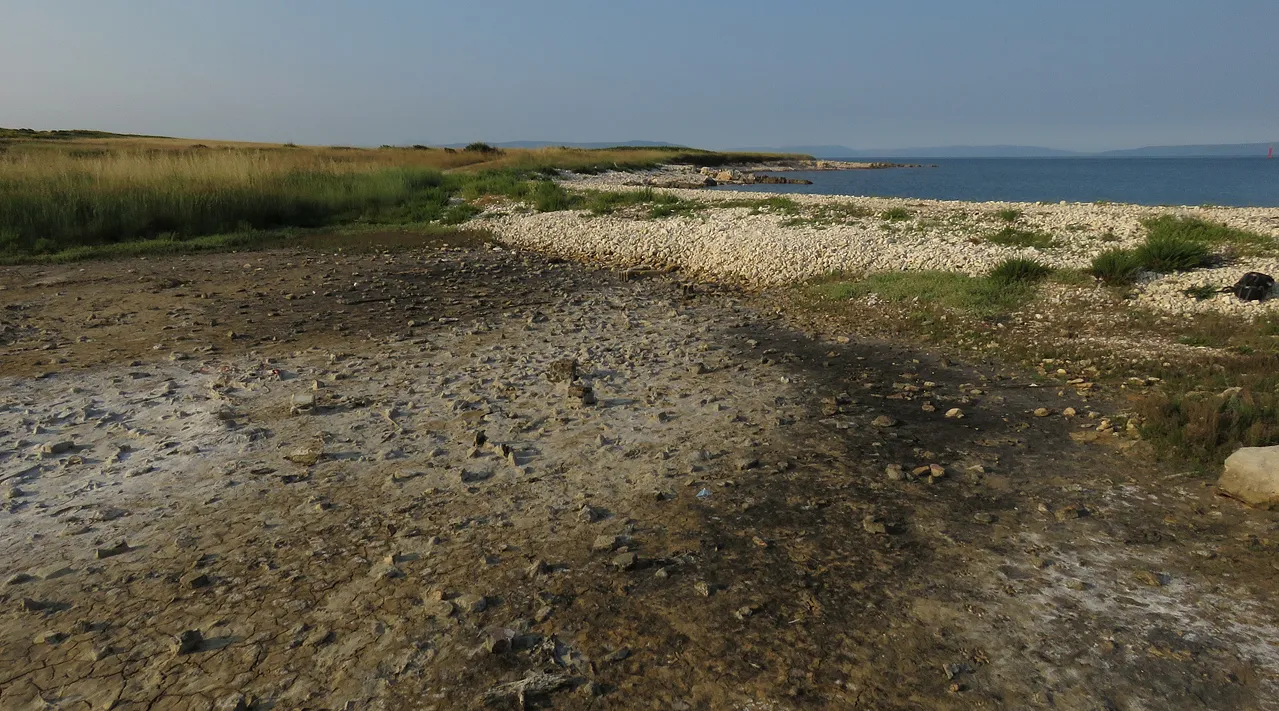
After this wide, diurnal shot, that shows the position of the dry brackish pool in relation to the sea ...
... as the post is slowly crawling to its final part ...
... just like this small larvae that drags its shelter made of silk, mud and various minuscule particles ...
... was crawling across the desolate macro - landscape at the end of a hot summer day in the mid-June 2021 ...
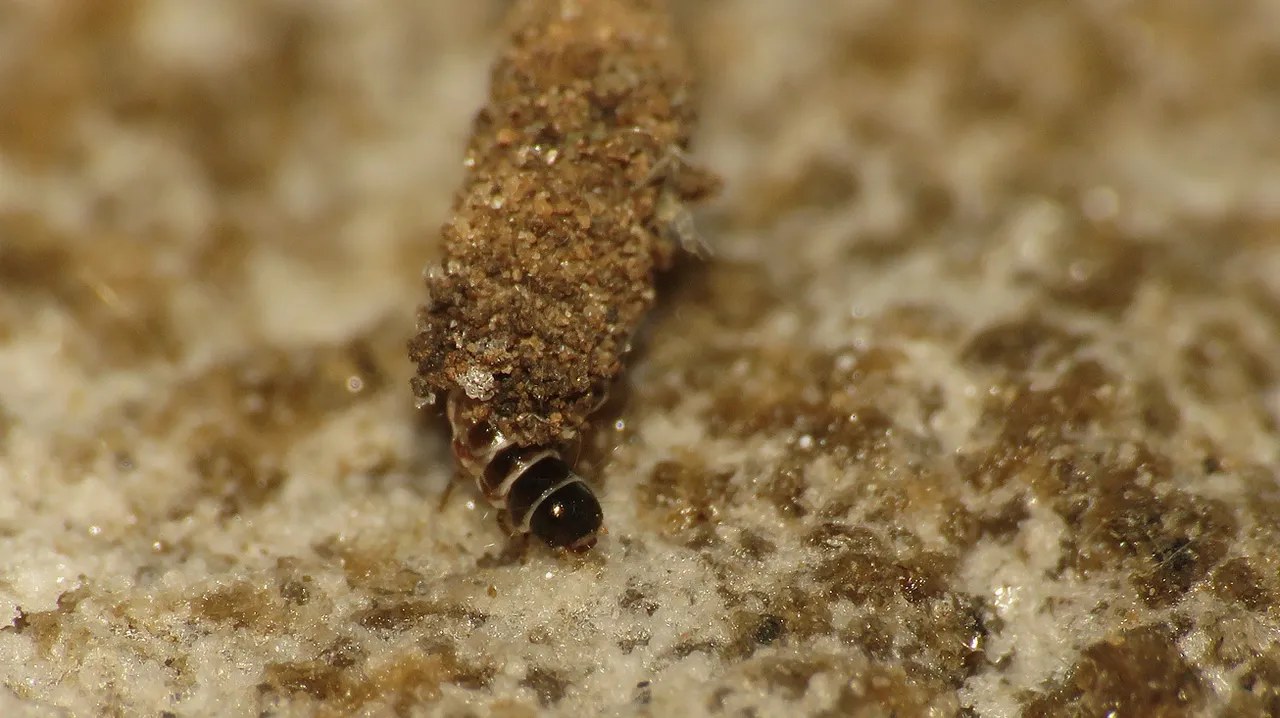
... is time to follow a line of old evening shots ...
... that lead into the night ... and the end of the story.
I don't know what larva exactly is this. Probably a larval stage of some casebearer moth, but I'm not sure.
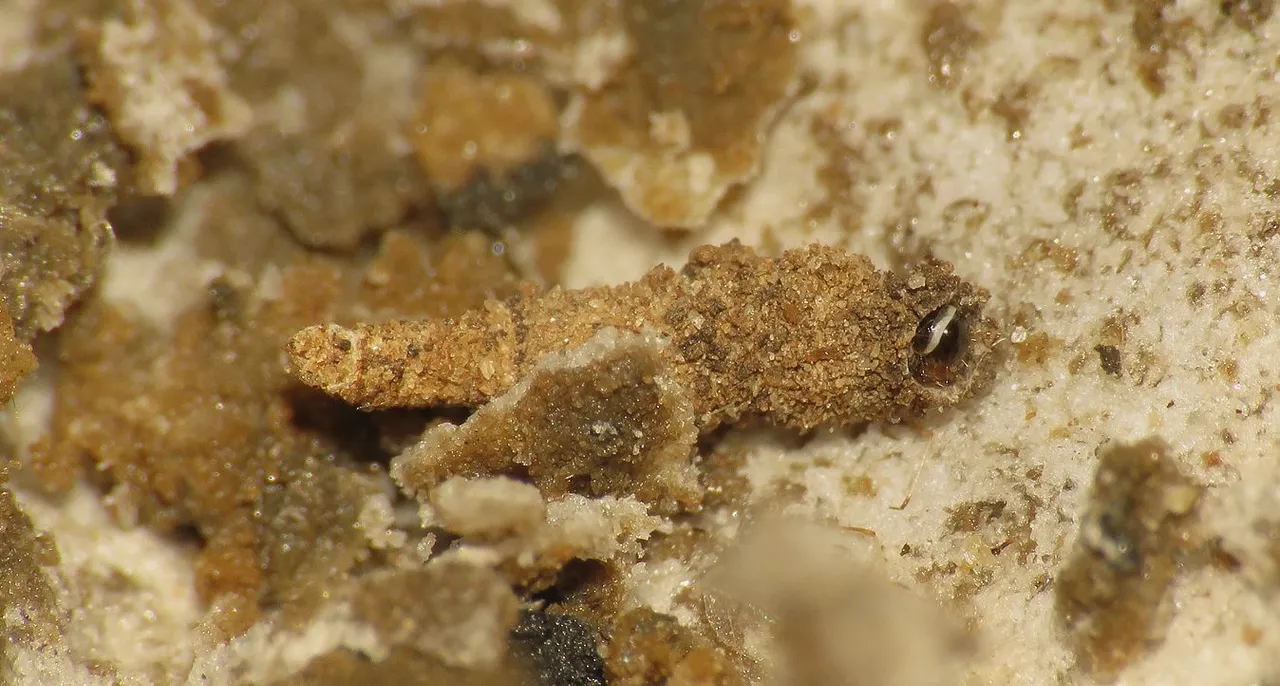
It was a fascinating encounter, so I took plenty of photographs. And most of them, maybe unnecessarily, are now part of this post.
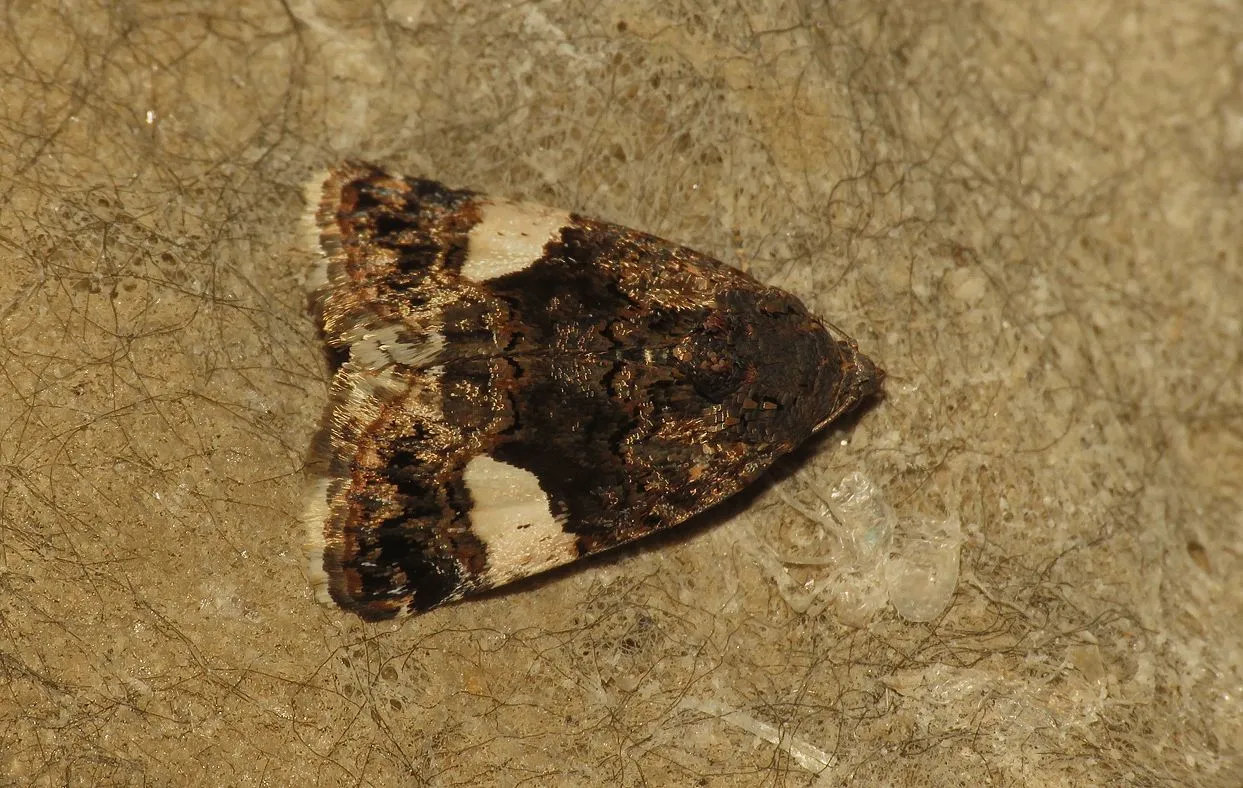
The Tyta luctuosa moth was resting on the ground nearby.
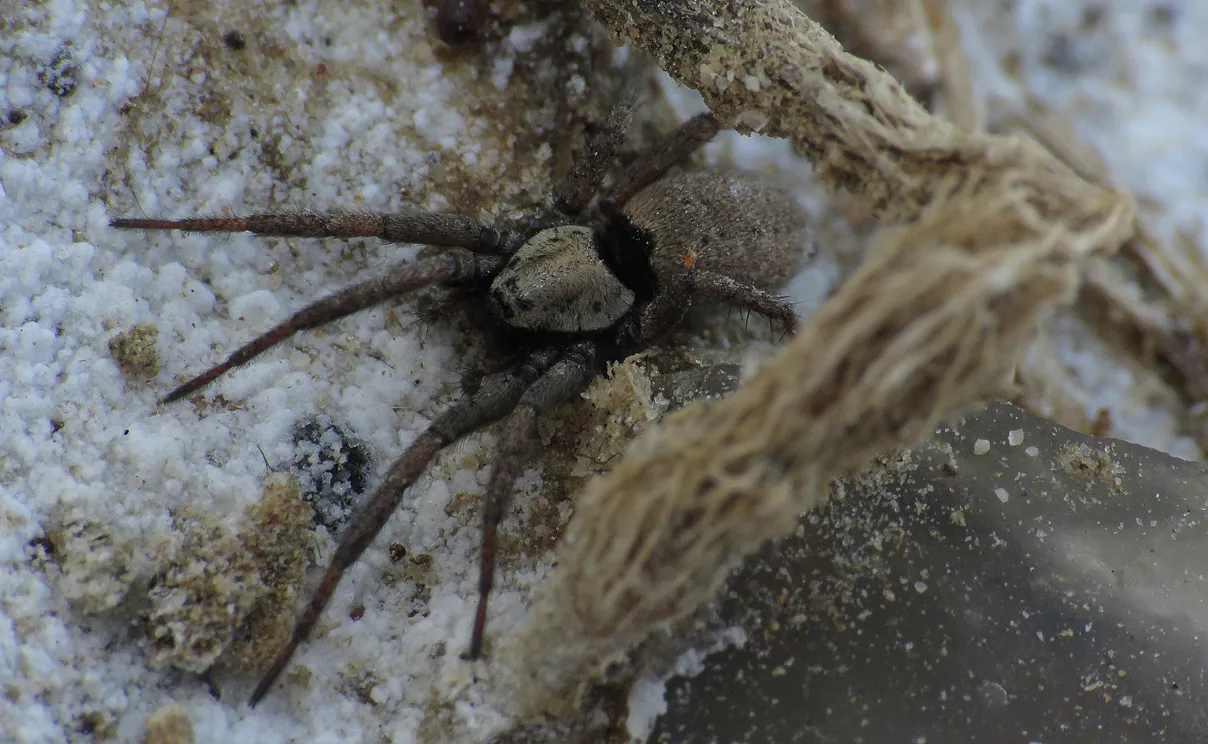
As the sun was going down ...
... I noticed a small, but robustly built spider ...
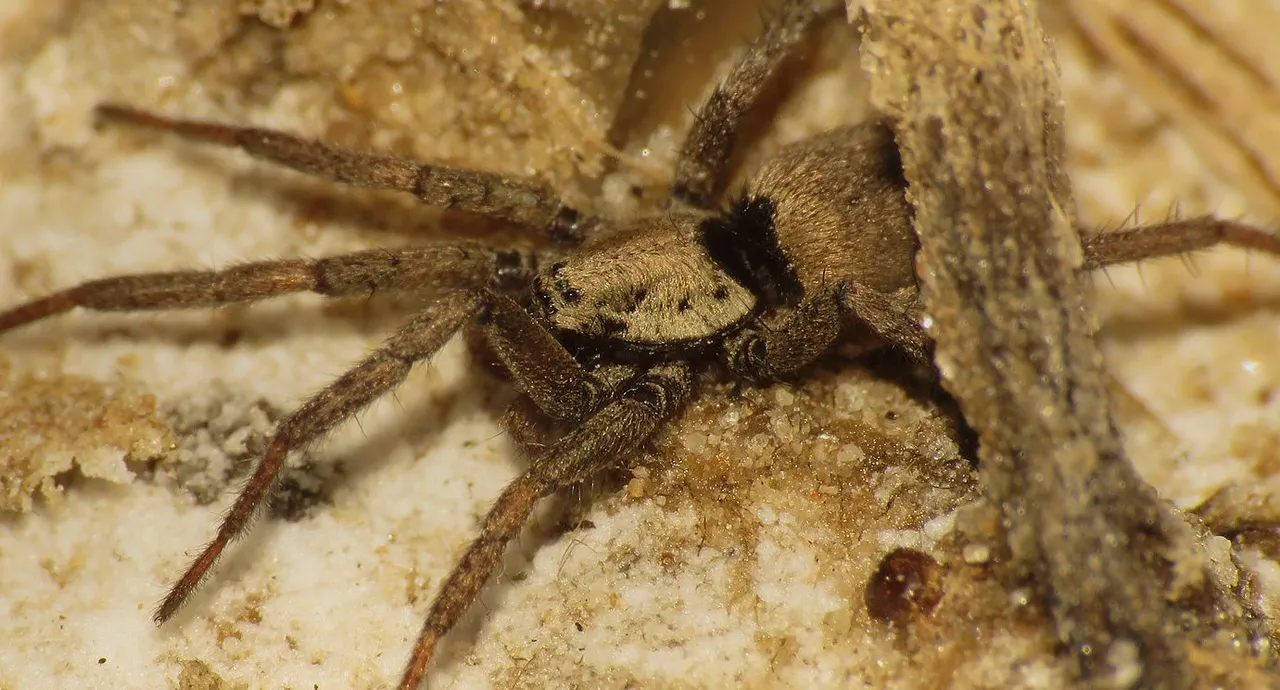
... that I never saw before ... or since.
Some ant was running across my field of view, so he ended up on this photograph.
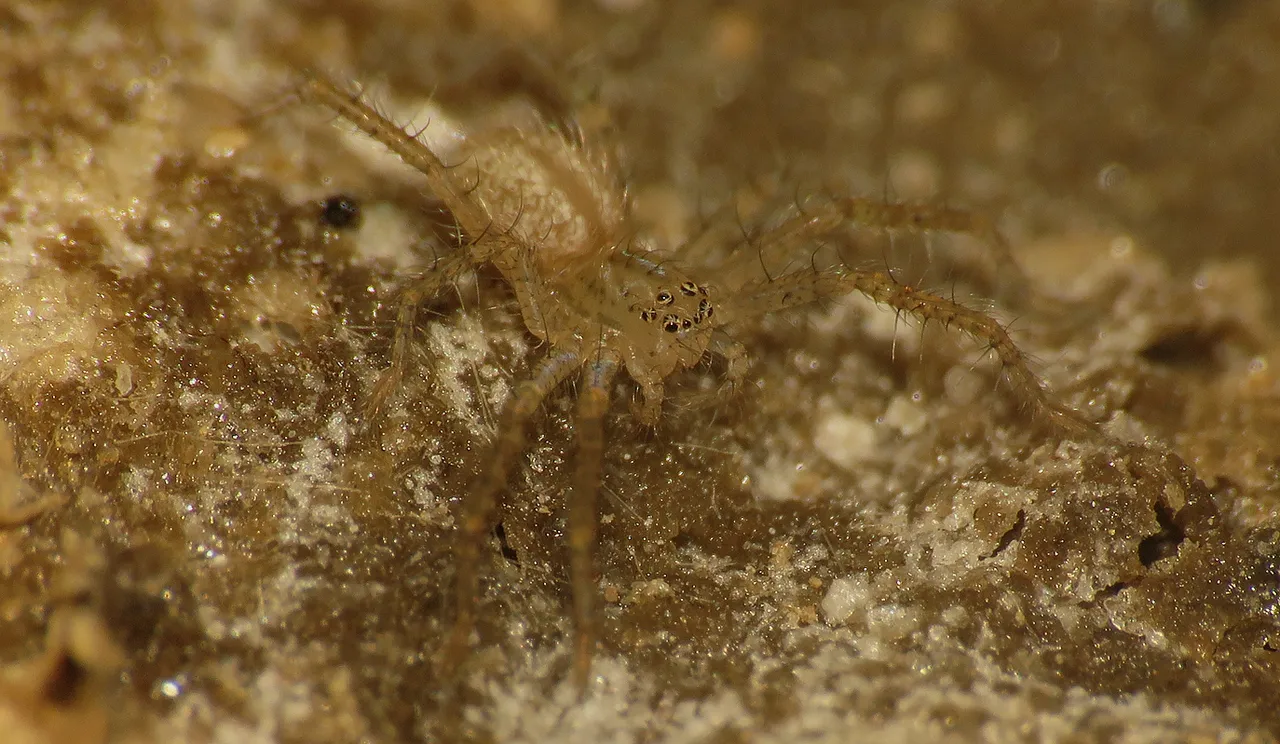
Some minuscule spider was well camouflaged, practically invisible, not far from me. At one point the spider moved, that's how I became aware of its presence.
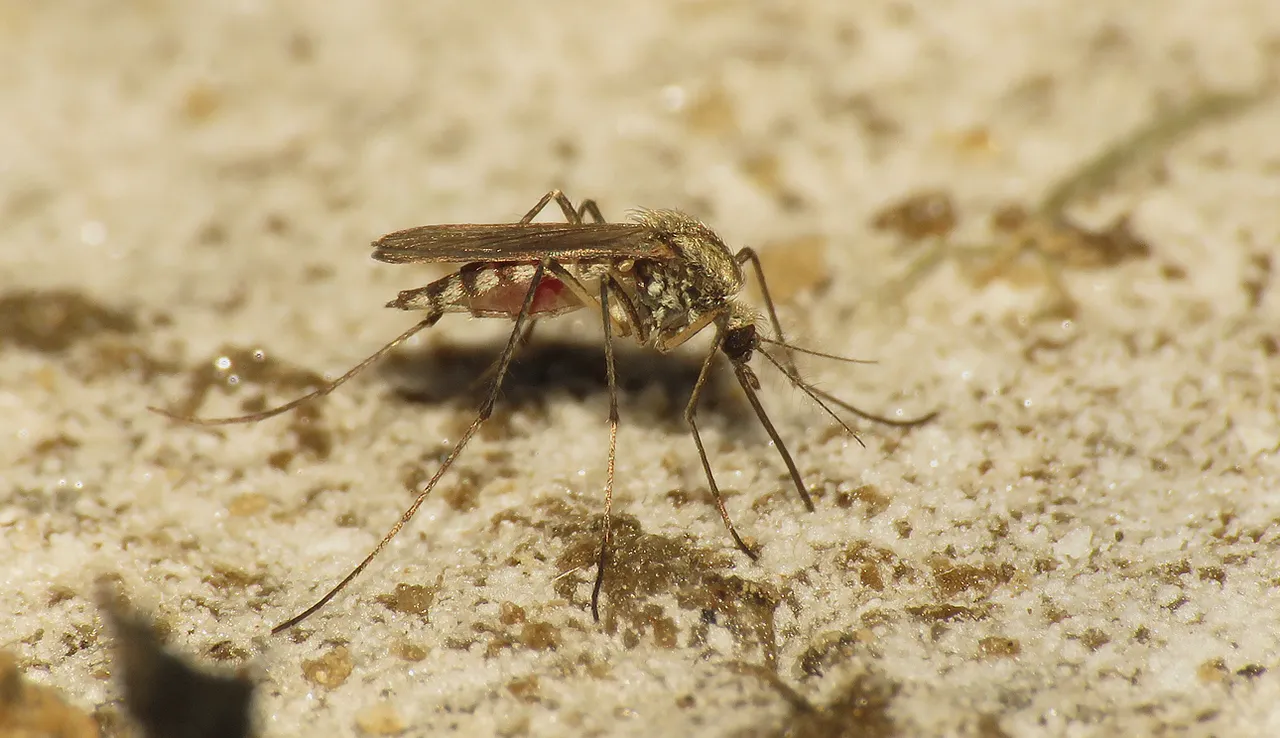
As I was photographing, the mosquitoes were buzzing all around me. This one's abdomen was red and slightly swollen from my blood.
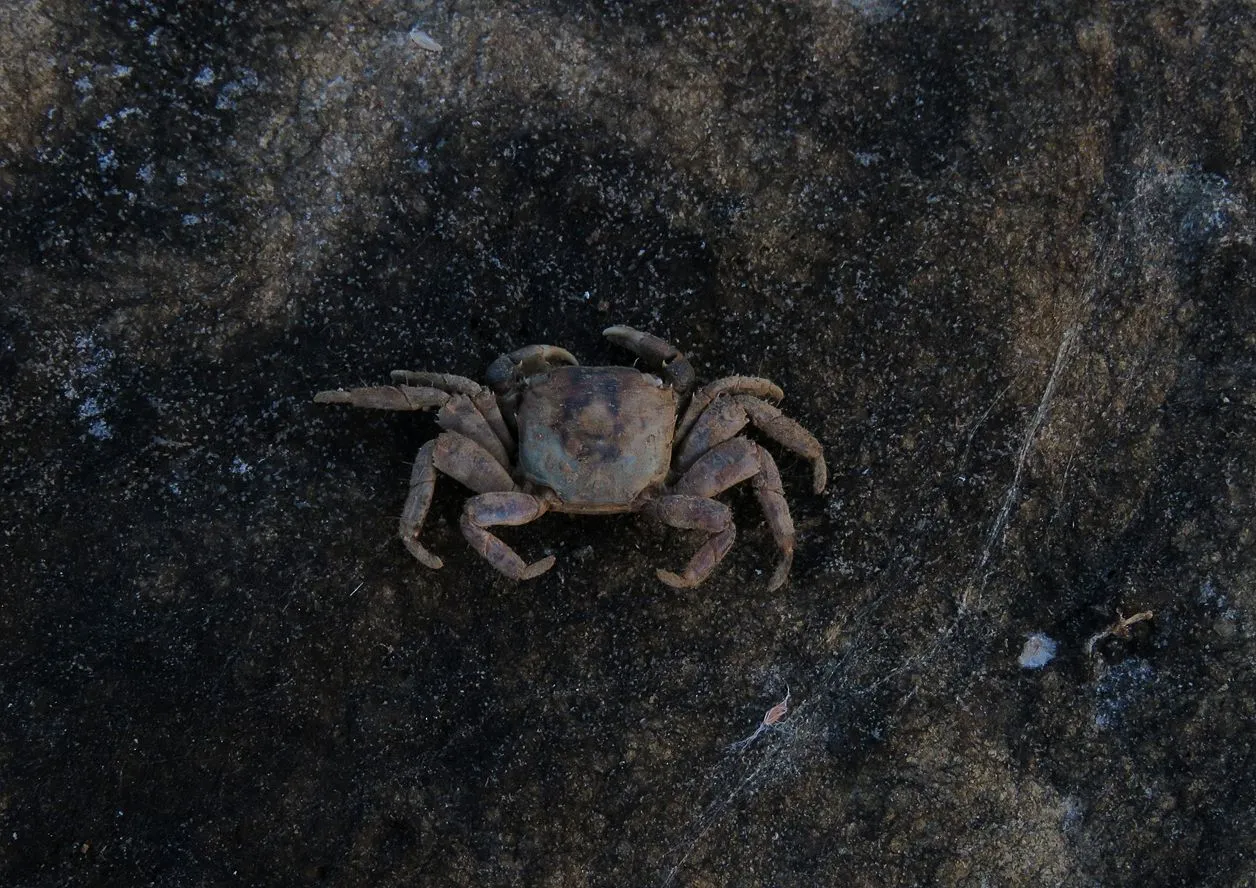
And now ... with this dead Pachygrapsus marmoratus crab ... it's time to end this little journey across the decaying, slightly creepy, but definitely very interesting habitat.
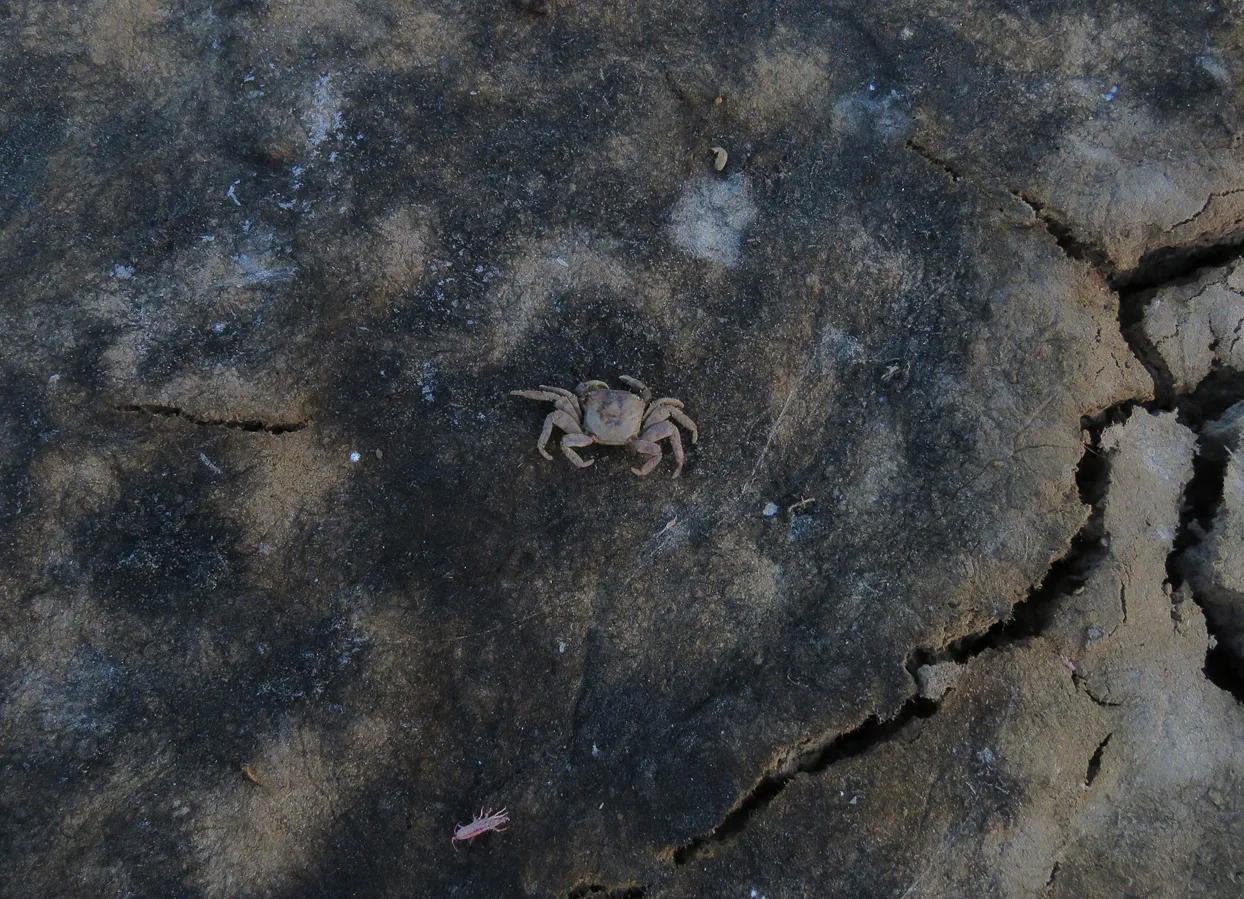
As always here on HIVE, the photographs are my work - THE END.

